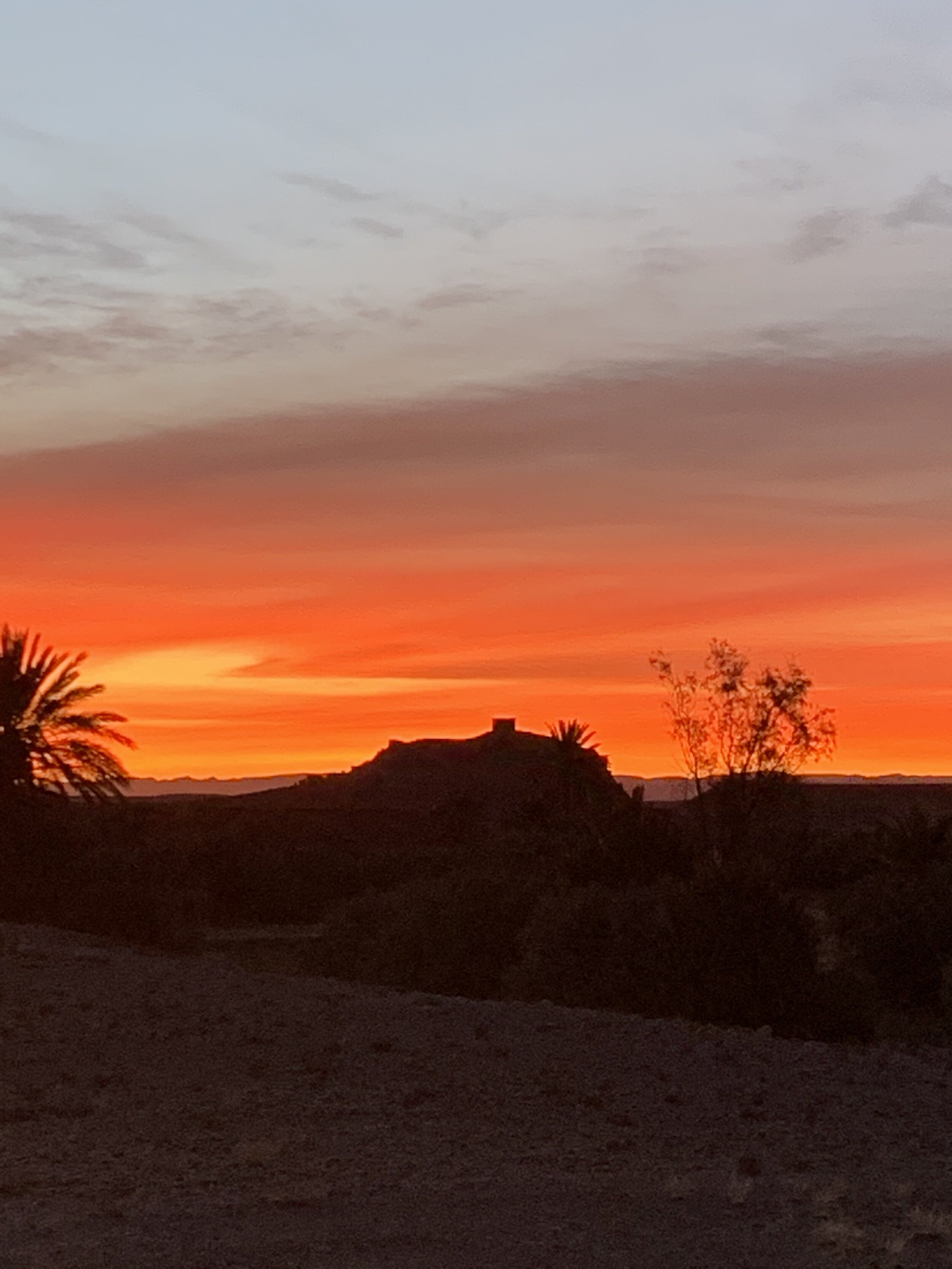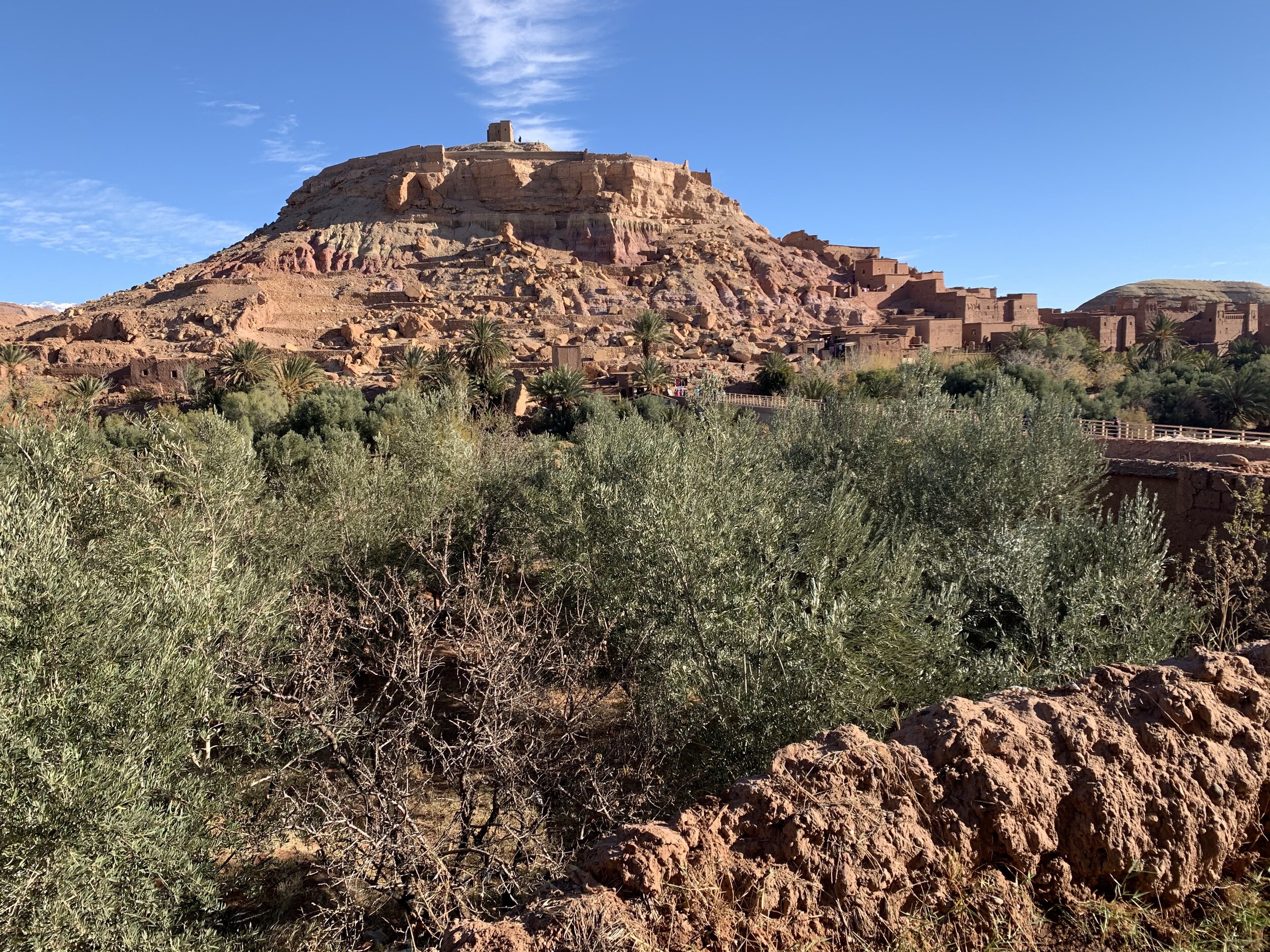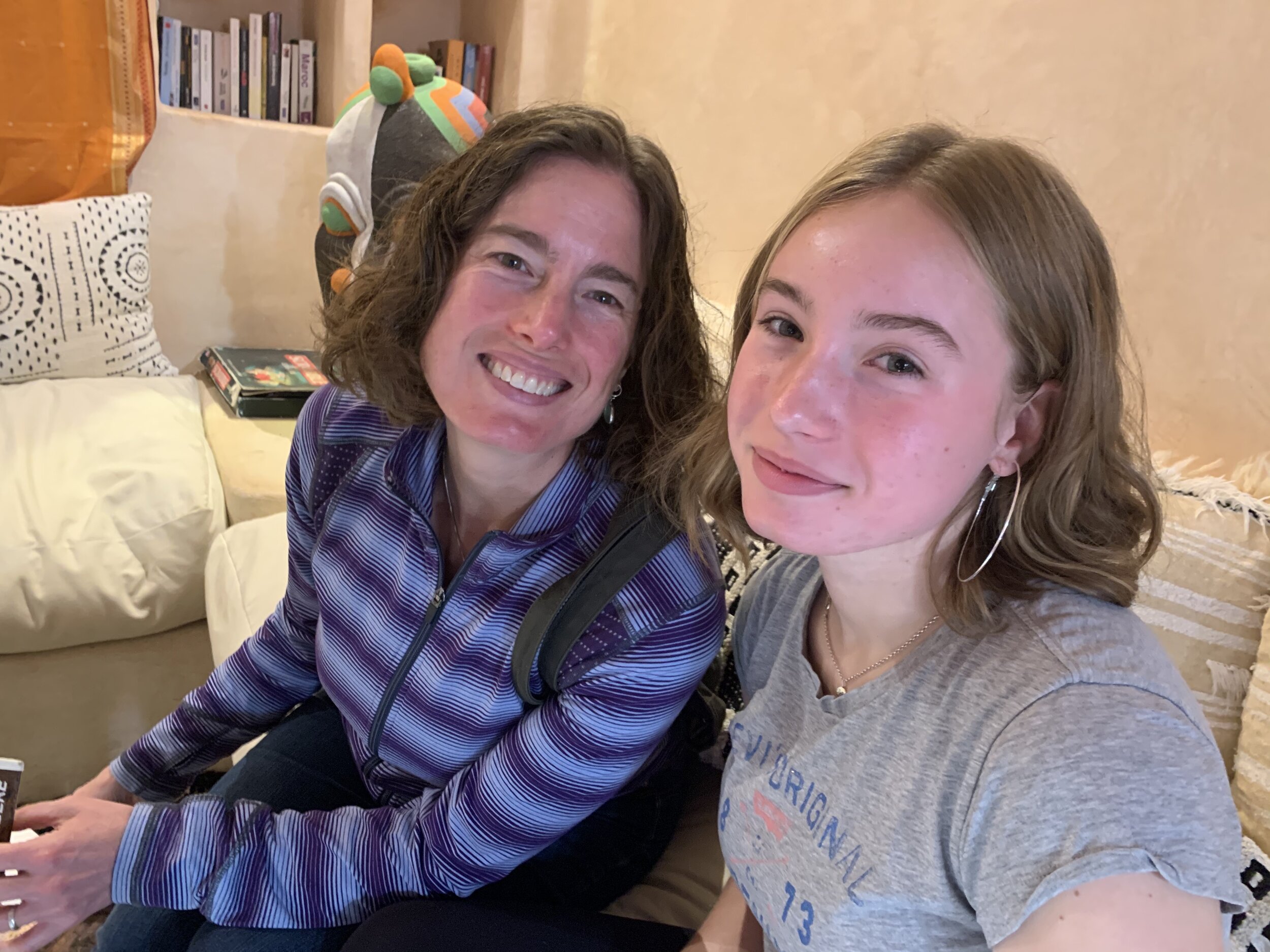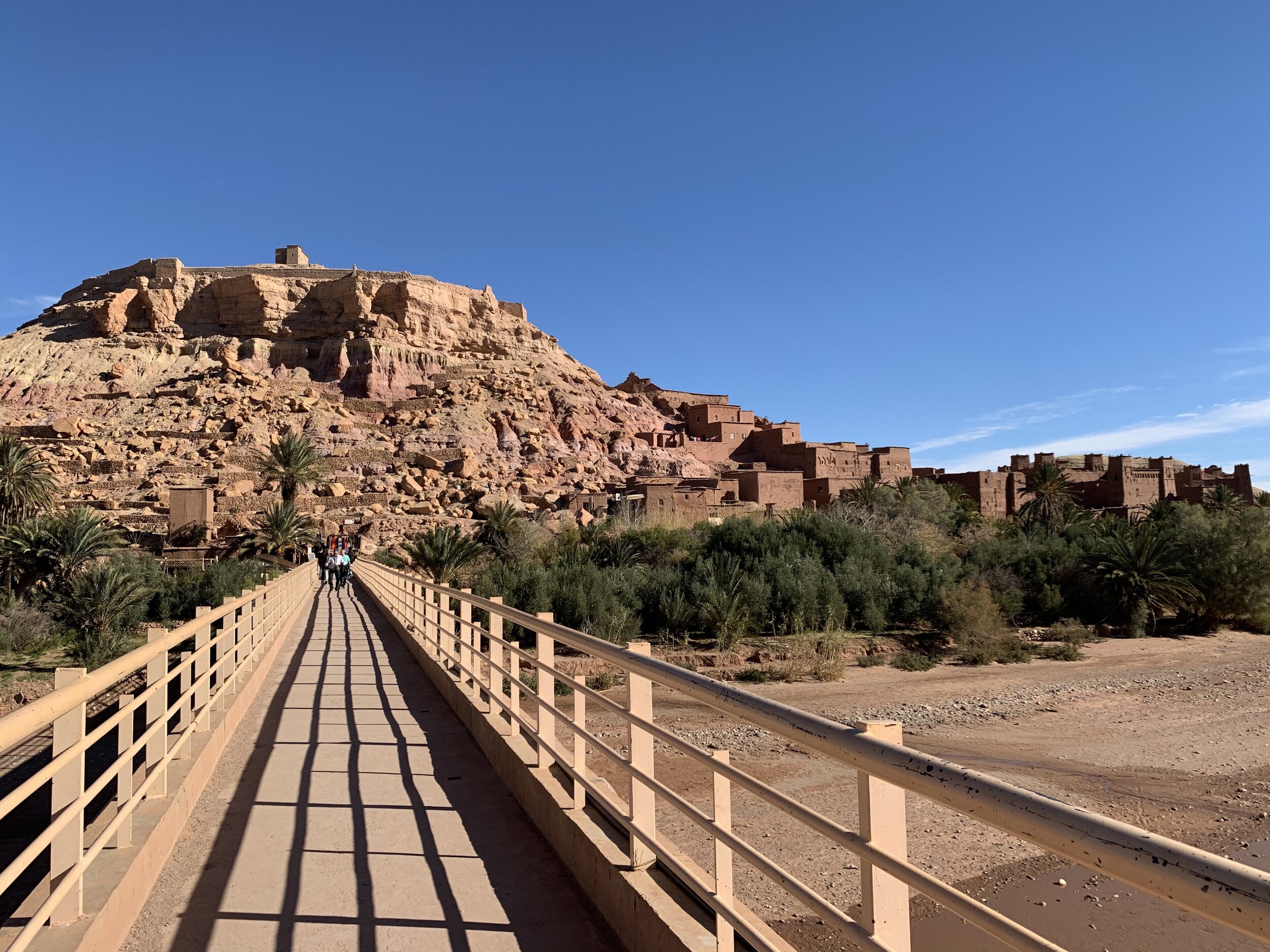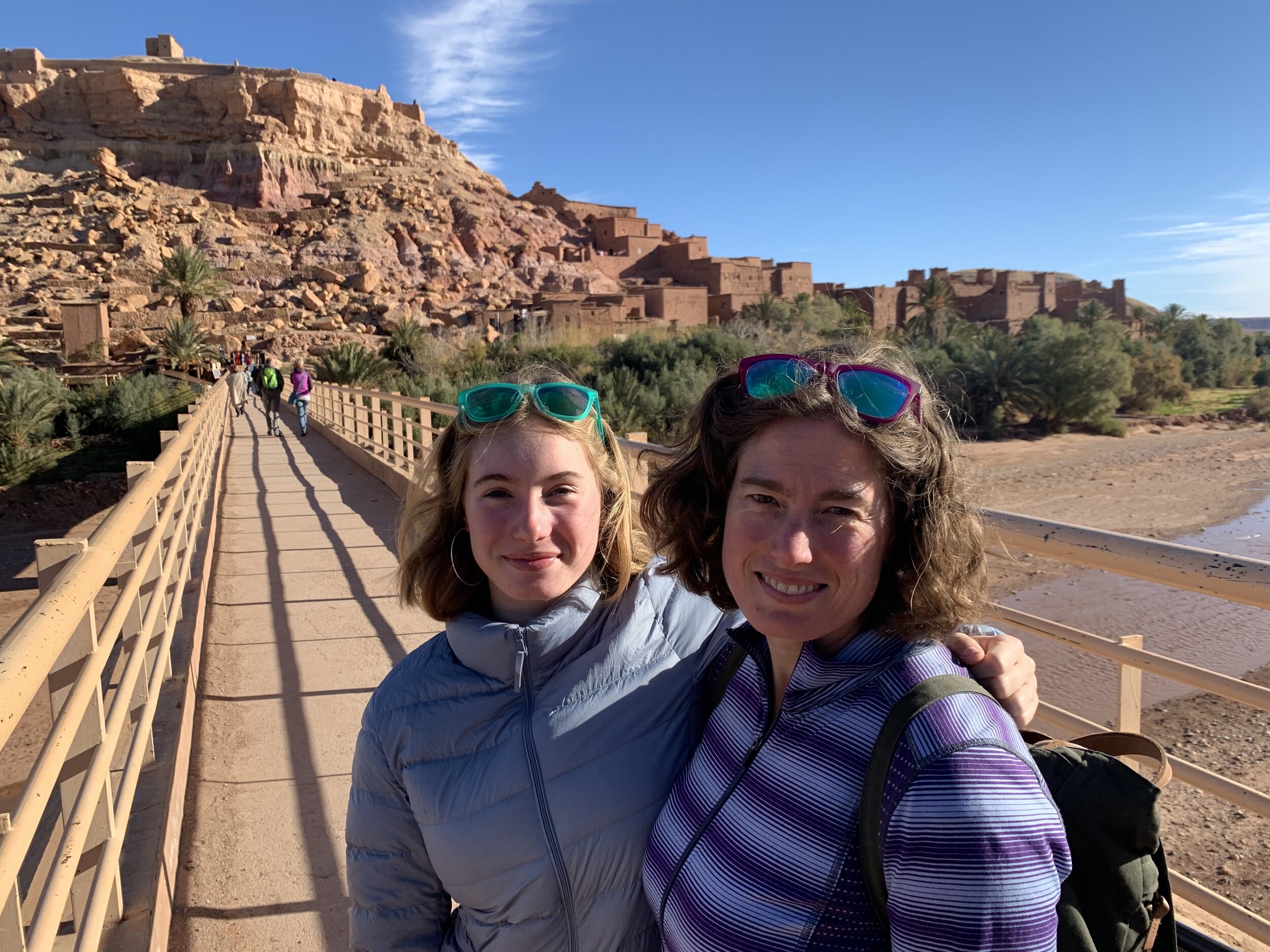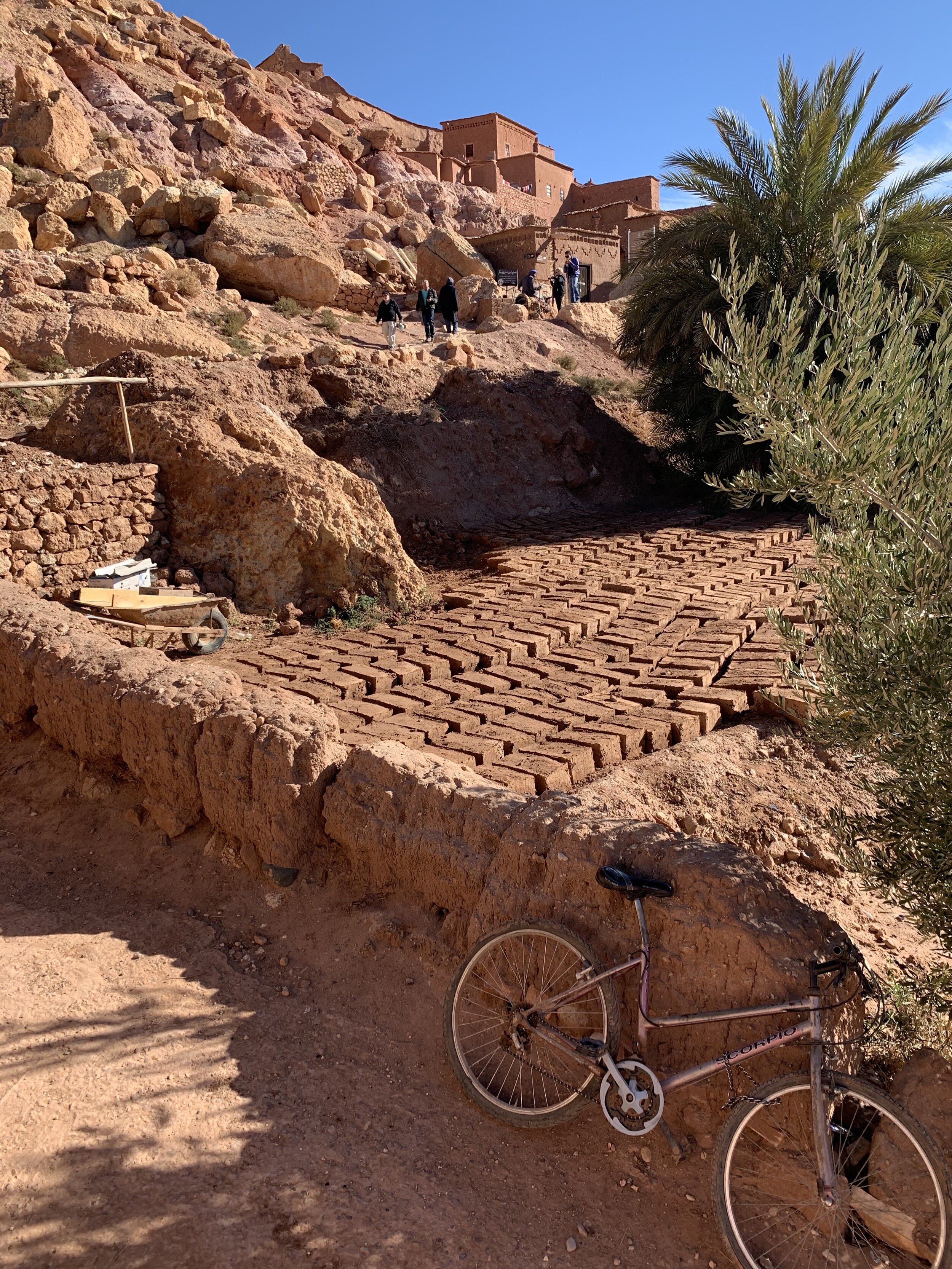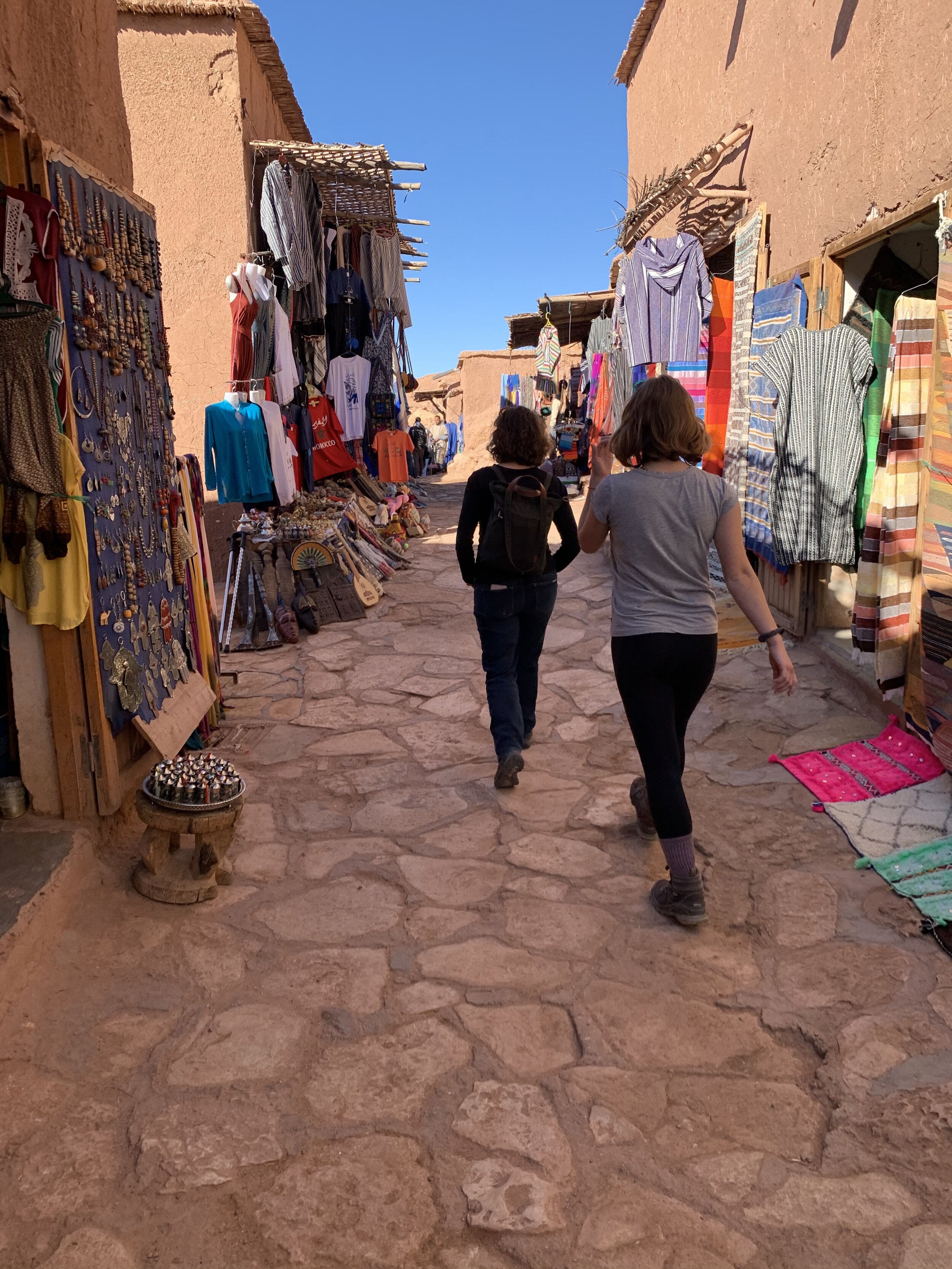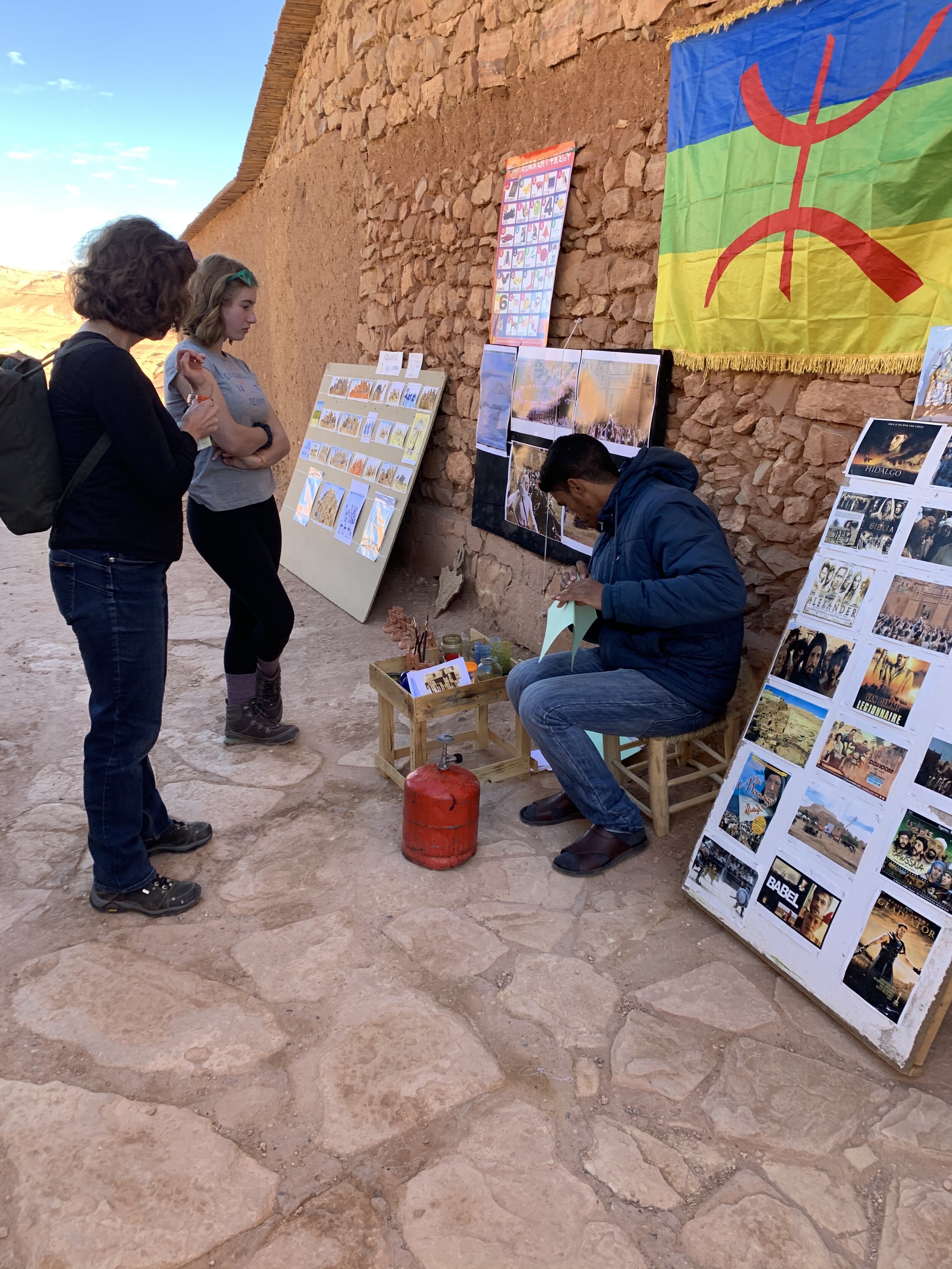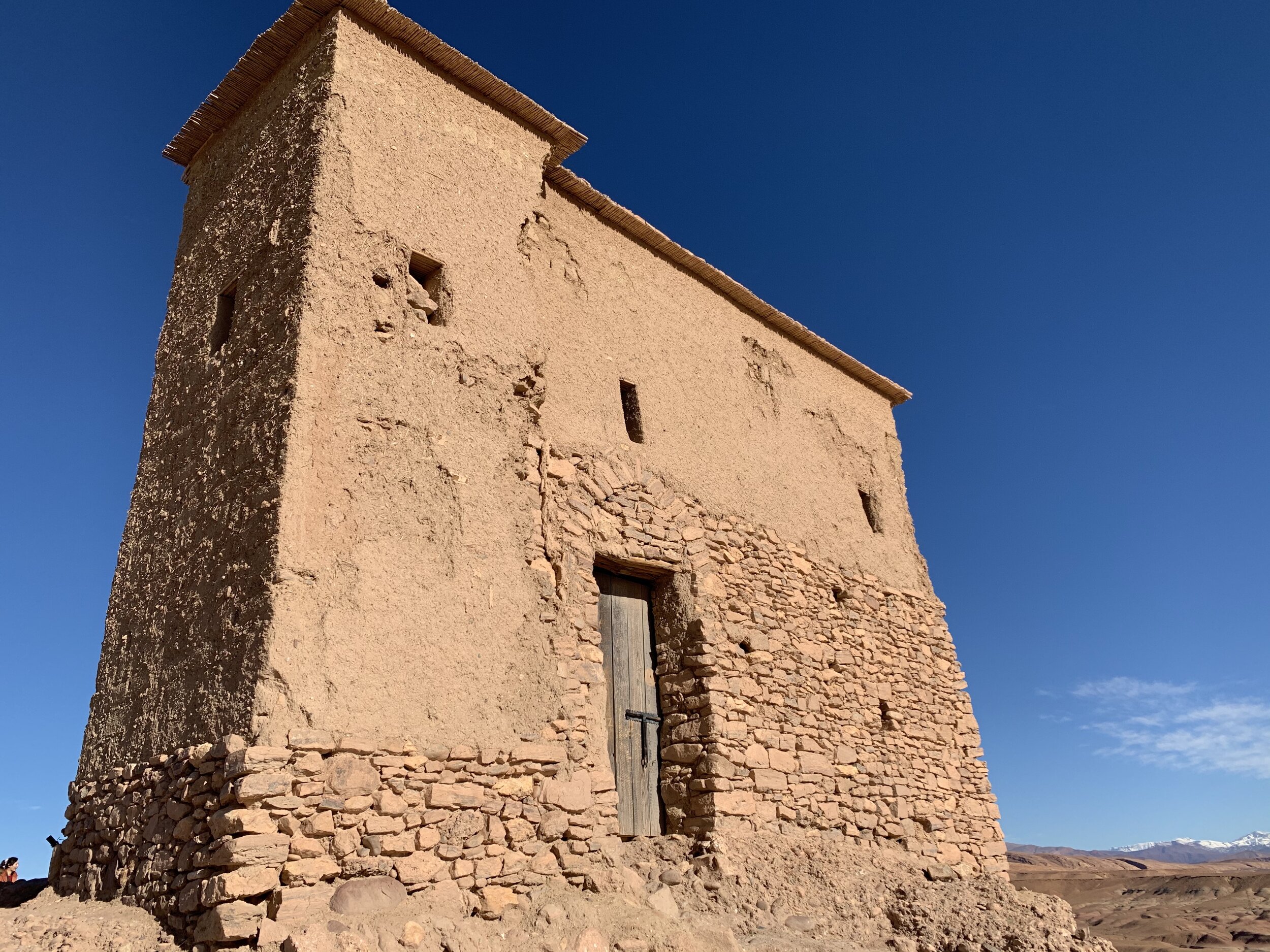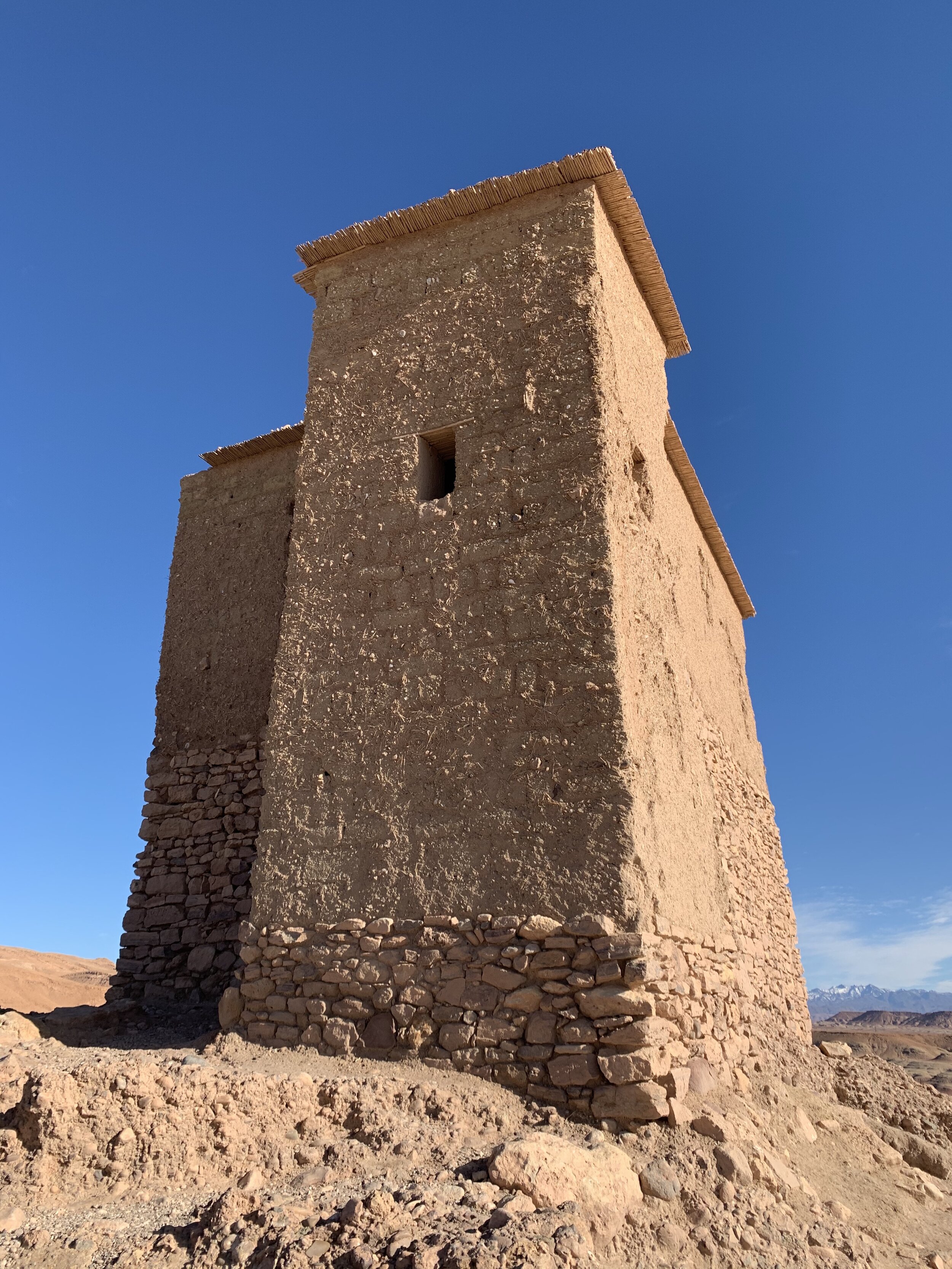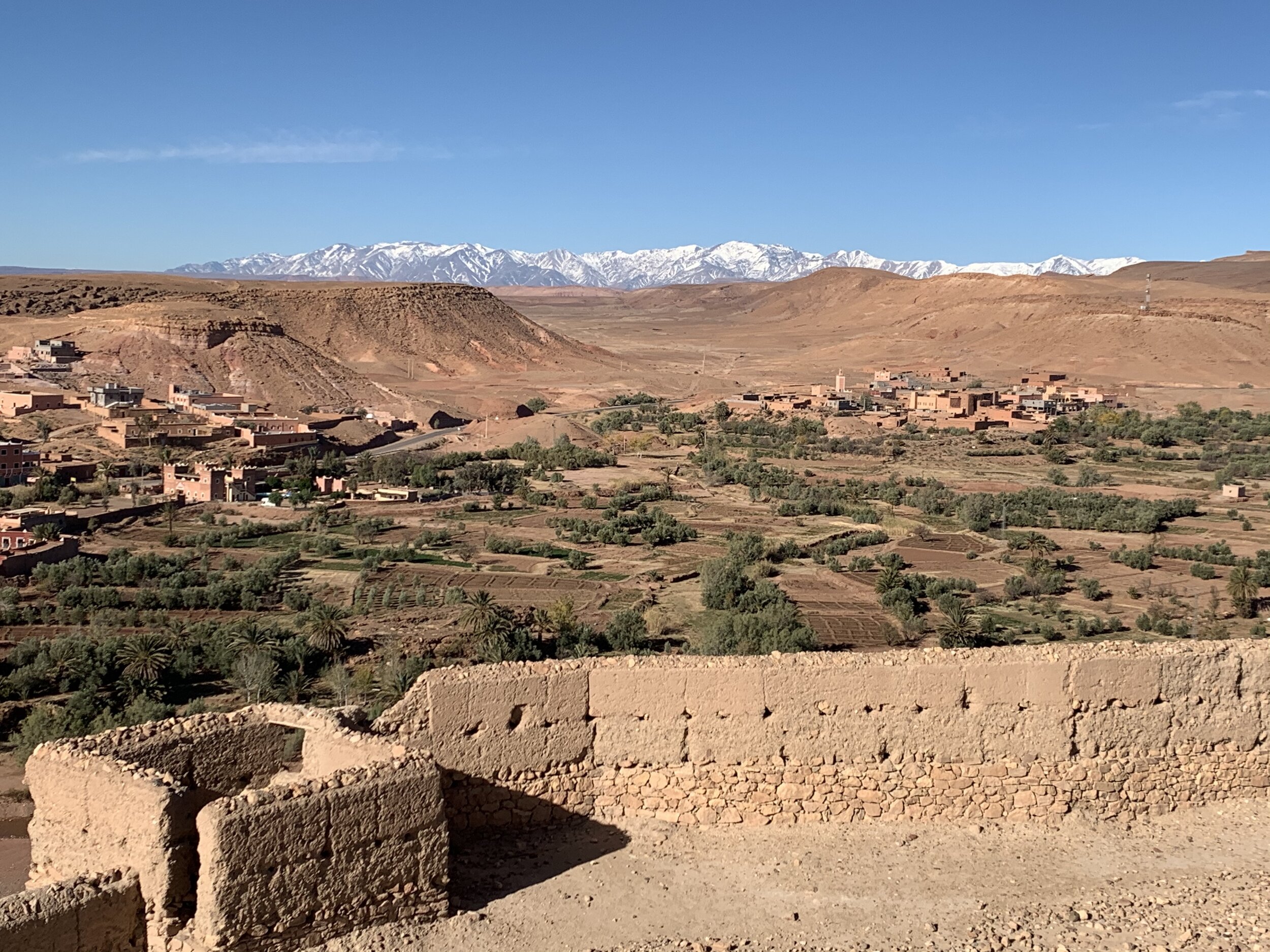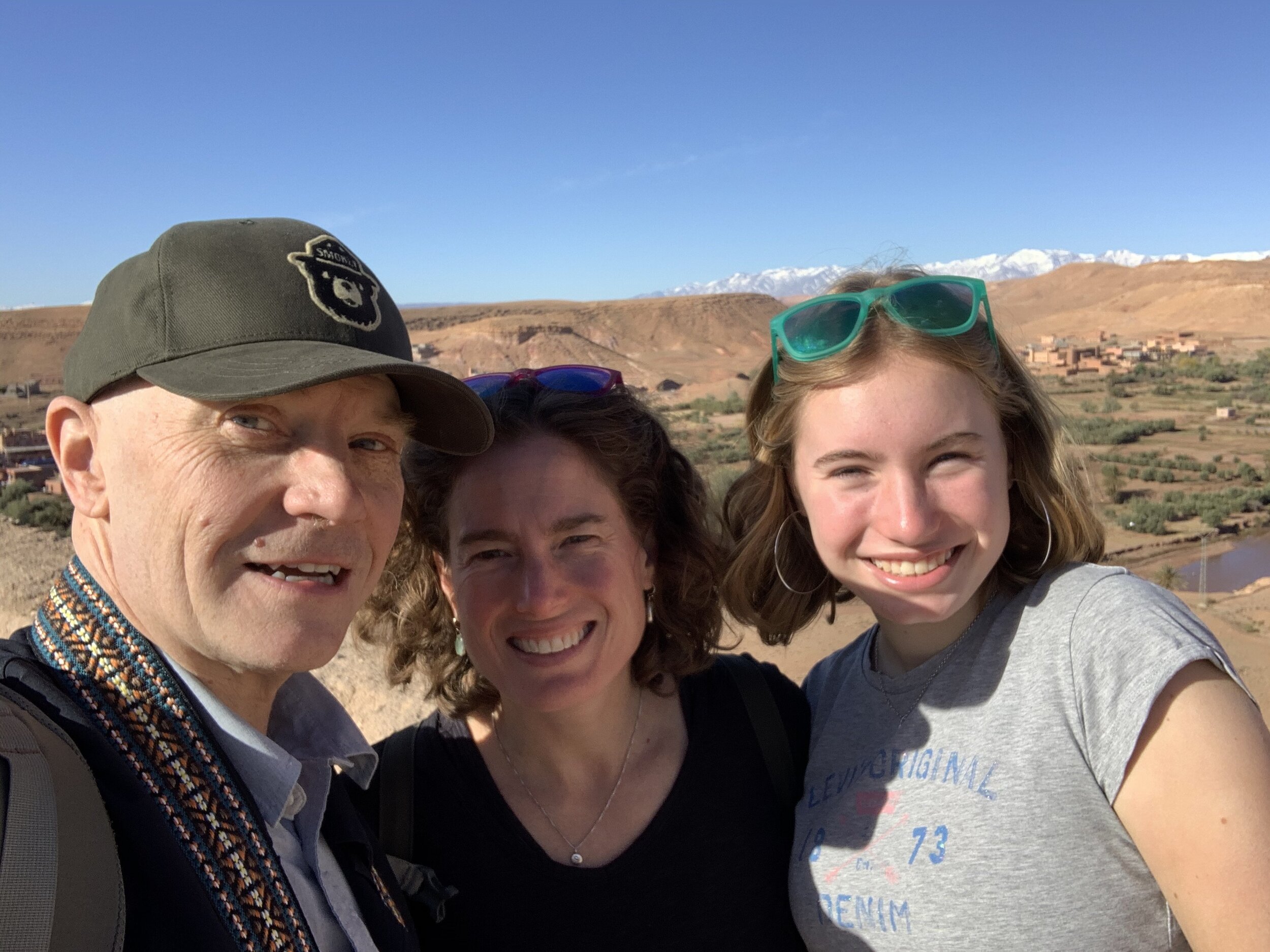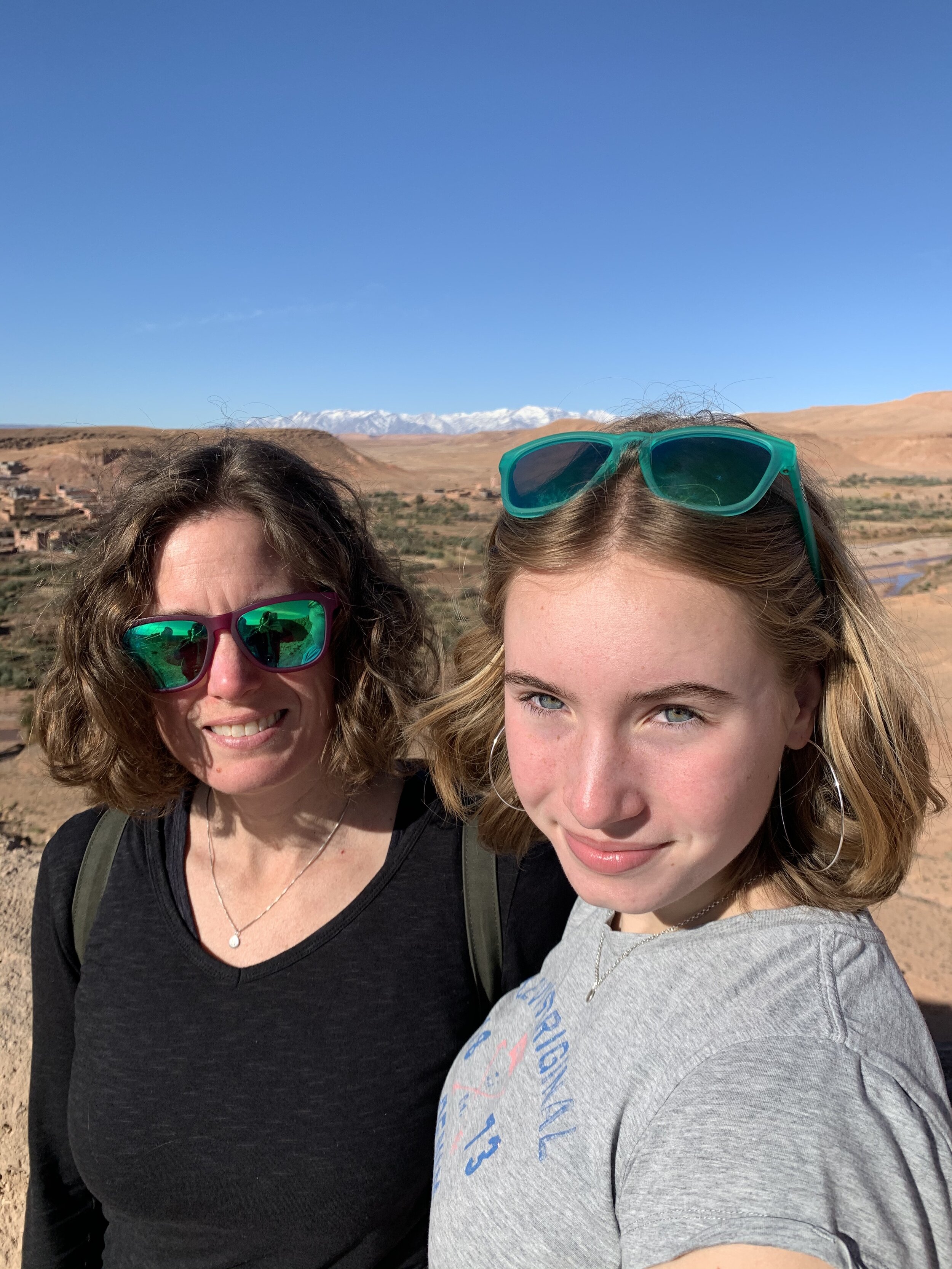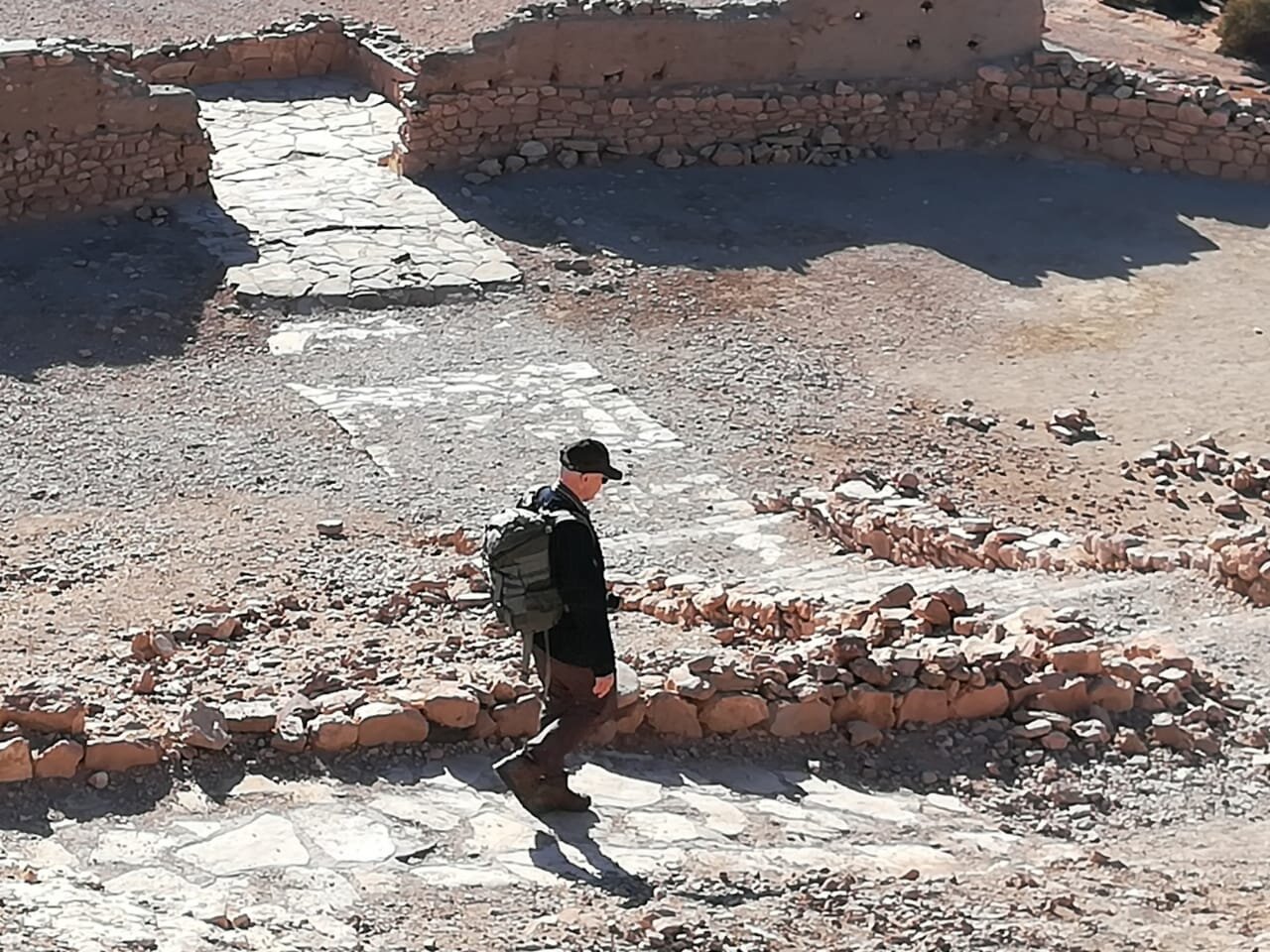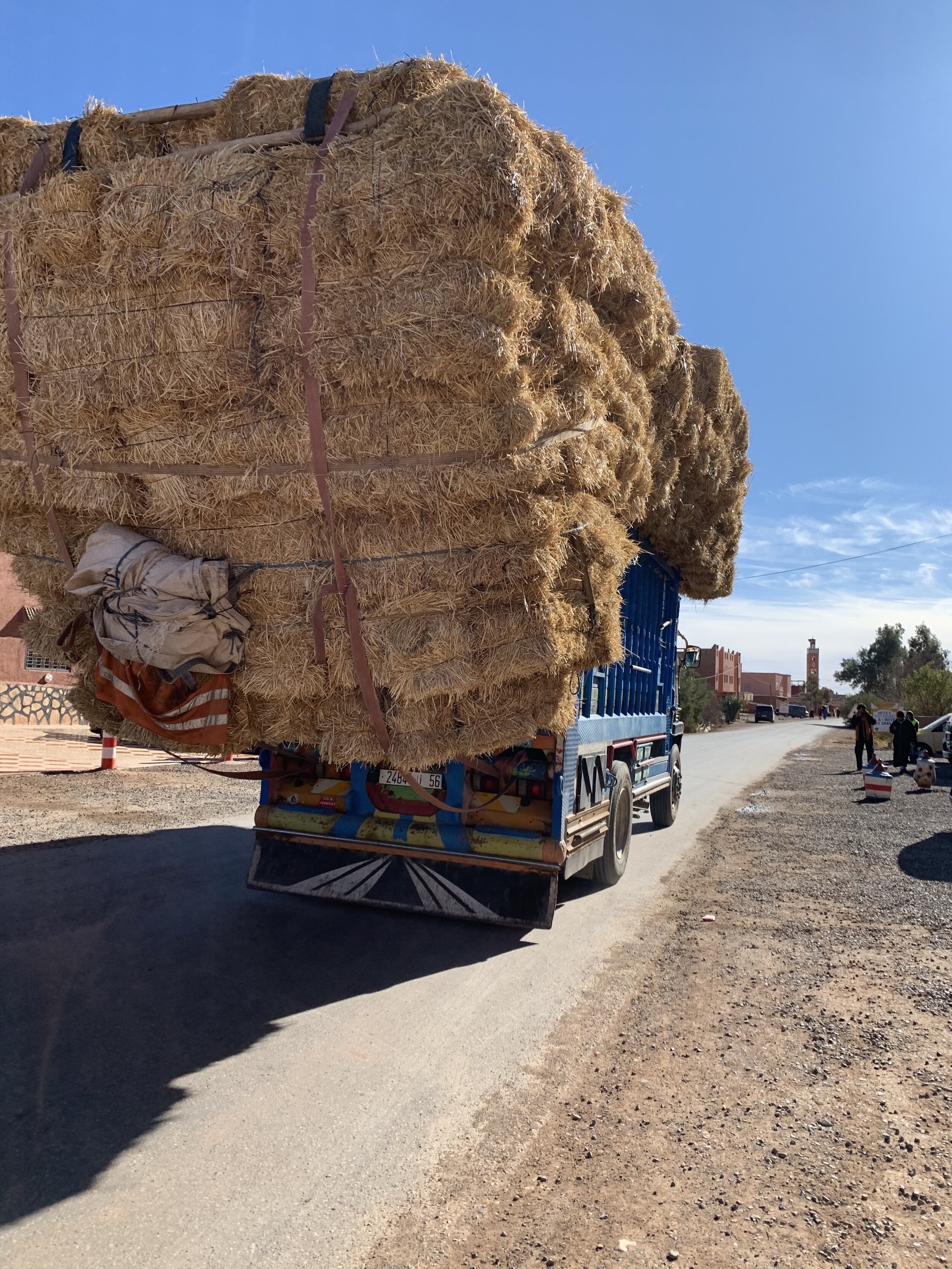Shifting from the Sahara's sands to Ait Ben Haddou (with a stop at the Torda Gorge)
We arrived on the edge of the Sahara Desert after a 500 km (310 mile) day of driving. Merzouga isn’t especially well marked on any maps, even though it has become a sort of theme park location for many pursuits. ATVs and 4x4s buzz along the dunes. I read there’s a rising tide of complaints that too many of them and the supporting vehicles that get people to and fro are creating dust storms in the high season. The “hamada” (high, rocky, barren desert where most of the sand has been removed due to wind erosion) is where most of that gets kicked up, because when you get out onto the sandy dunes it’s as clean and clear as seemingly endless slopes of rose-gold snow. And while we had come to these dunes – generally known as the Erg Chebbi – with a faint hope of getting on a snowboard for some turns down those slopes, we had very different plans in mind than our red-necky, motorized neighbors.
We signed up for a camel trek, after all. With an overnight stay in a “luxury tent” that would be accompanied by all the beauty to be found in the Sahara’s most accessible dunes…and meals and entertainment from our Berber guides. Our “kasbah” (or hotel) was the Mohayut (pronounced “mo Hyatt”) and it was a study in contrasts. Posh lobby and cold as icewater pool. A low-light restaurant with tagines aplenty for the dinners everyone was eating. When we arrived well after dark and barely made it into the restaurant before they stopped serving, there were a dozen Chinese tourists eating at various tables. The following morning, there were an equal number of younger Chinese tourists at breakfast after Sarah and I made it out for a run. Oddly, none of them went on the trek with us later in the afternoon. In fact, we were the only ones that headed out. We’d be outnumbered by the people serving us.
I’d expected to be stepping right out the back door of the Mohayut for our trek, but we actually got in an extended cab pick-up to drive a few kilometers to the staging for the camels. They were all kneeling down on all four legs with tented saddles and colorful blankets making for what appeared to be comfy seats. We met our guide, Amar, with a turquoise head wrap done in a circle that he’d later effortlessly fashion into a fuller head and scarf array like a contestant on “Project Runway.” Like so many people we met in Morocco, he asked where we were from and reacted positively when we responded “America.” “You’re welcome,” Amar said. His English was more than passable, and he soon had us up and walking on our camels.
We’d discussed names for them prior to our arrival. Maya’s would be “Bubba,” which fell right in line with the friendly sort of animal he was (as were Sarah’s and mine). Sarah’s steed would be “Lollipop,” which ended up being perfectly in line with his/her oral fixation (constantly chomping on the rope). And mine was “Tina Louise,” in honor of the “Gilligan’s Island” actress. Amazingly, I could see the resemblance. I did also have a back up jokey name (Four-forty-four A Pound). Thankfully, none of us thought that was appropriate after spending time with the trio.
The ride out quickly turned from an easy adjustment to the horse-like motion into a realization that the wind was kicking in. We were less than 30 minutes into a nearly two-hour trek when the wind turned from cute to downright challenging. Amar tied up his head wrap into a full protection. During those calm initial minutes, he’d lit up a smoke as he strolled along in front of us on the dunes covering a path well-marked by prior camel traffic. Once the gusts began, there were no more smokes. Nor tracks, soon enough. We stopped for a few photo ops. At the second one, we thought he might be asking if we should turn around. None of us cracked, however, even though we were getting pelting by sand and our gear was being tested. When we finally saw a collection of tents in the distance, I was jubilant.
As if on cue, the sandstorm abated around the time we’d gotten mint tea in our tents and stepped back out to watch the sunset. So began a series of perfectly timed steps within the evening’s entertainment. Dinner in the main tent was followed by star gazing into a clear, calm, cold night sky. We returned to Amar and the two other main camp attendants playing traditional Berber instruments (two types of drums and big, clunky castinets that looked like flattened dumbells). Maya was mortified when we were coaxed into dancing and then playing the instruments with our hosts. No video exists of this performance. Sadly. It was a heckuva show.
We all piled on the blankets and crashed as hard as you can in a tent when the temps are around freezing. Our luxury tent had a bathroom inside that we all used, to varying degrees. Sunrise comes late in Morocco – well after 8am – so we slept in somewhat before a huge breakfast back in the main tent that proceeded and continued after a stunning sunrise over the dunes. We opted for the camel trek back (some doing the luxury option take a 4x4 ride back to Mohayut). I’m so glad we did, because the calm winds and clear skies gave us all time to drink in the sights and reflect upon the majesty that we’d missed on the way out the day prior. The pictures below give you a sense of just how beautiful every part of the journey turned out to be. It simply was an experience that will linger in our collective consciousness for years to come.

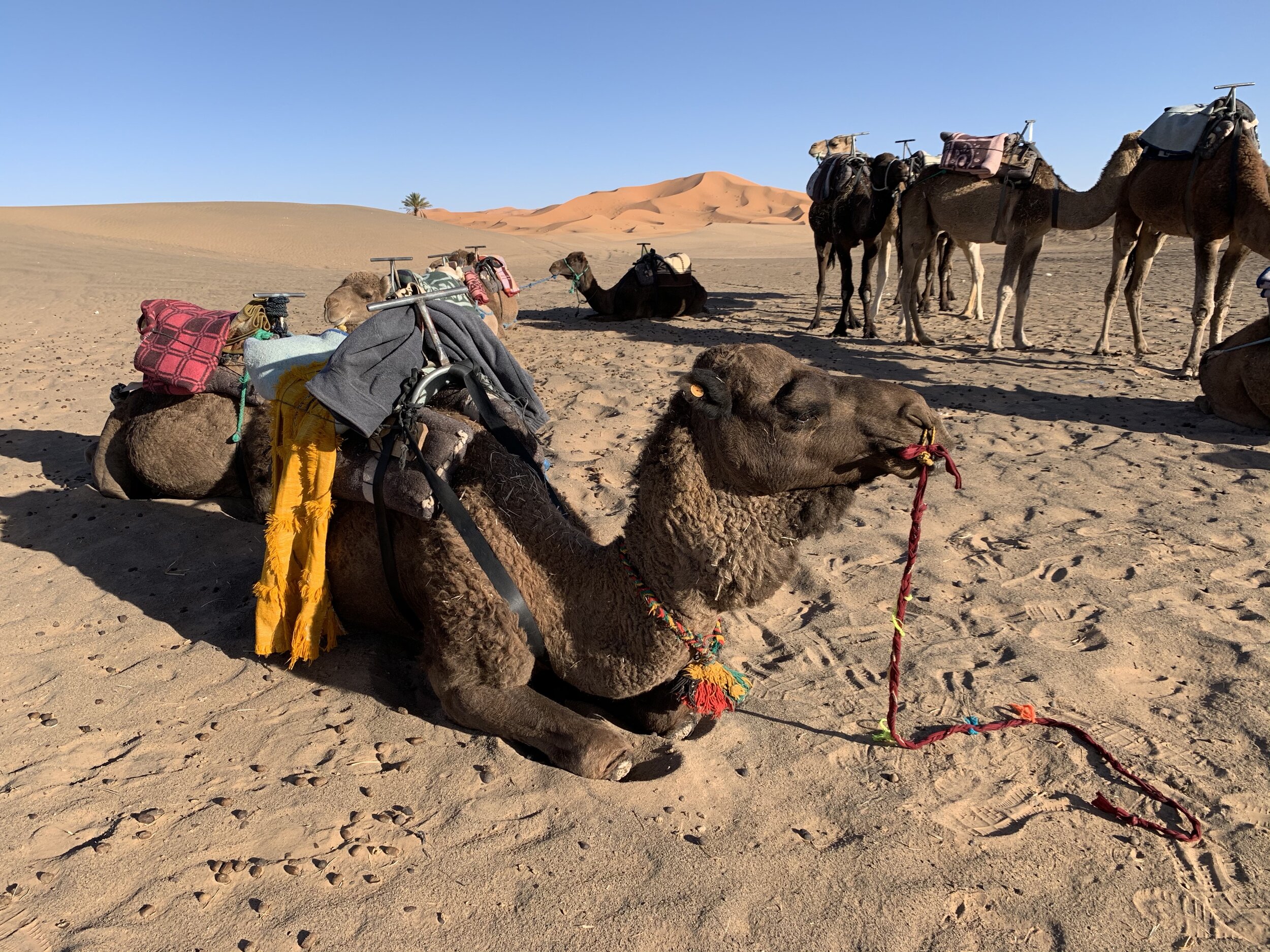
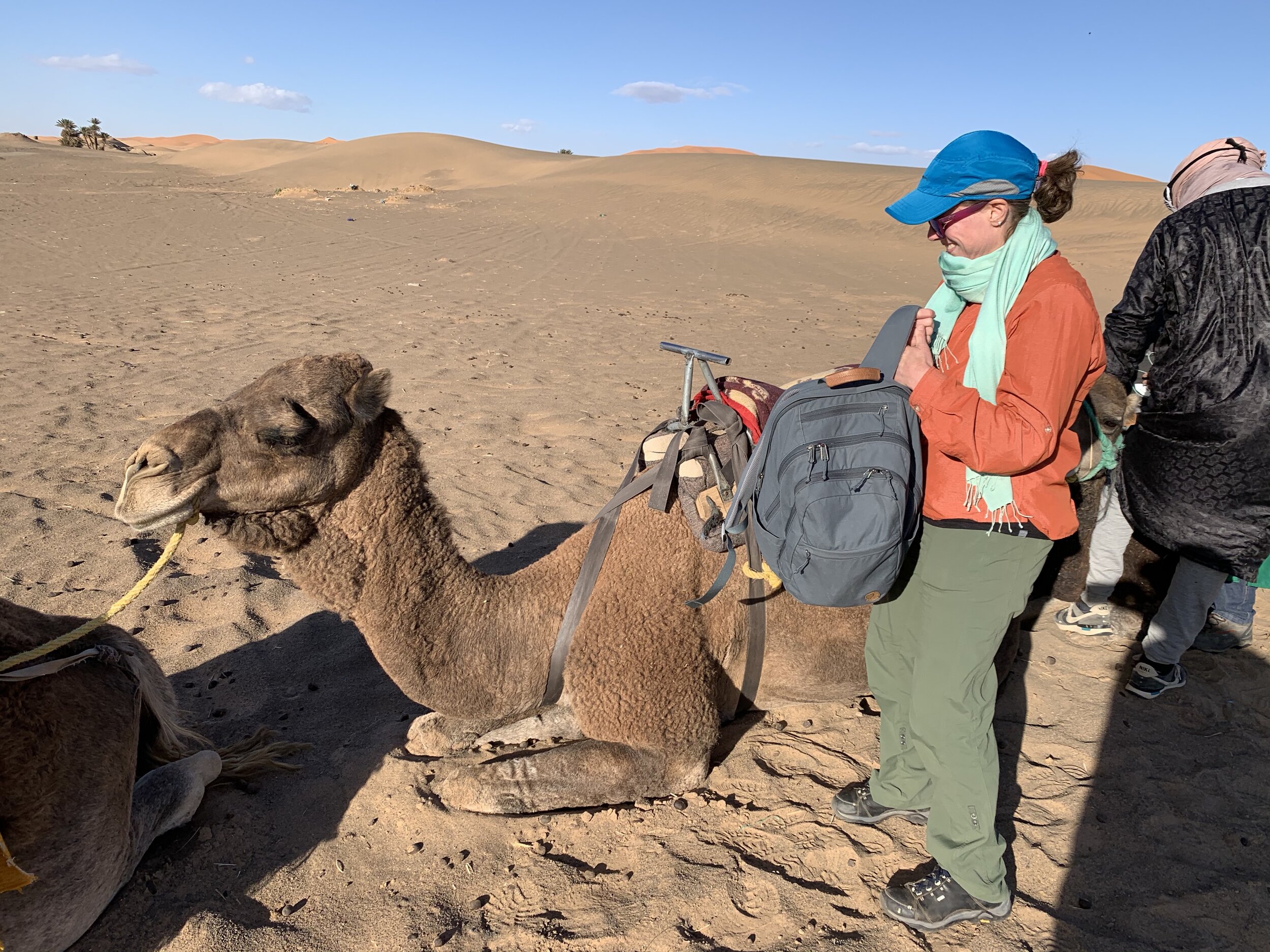
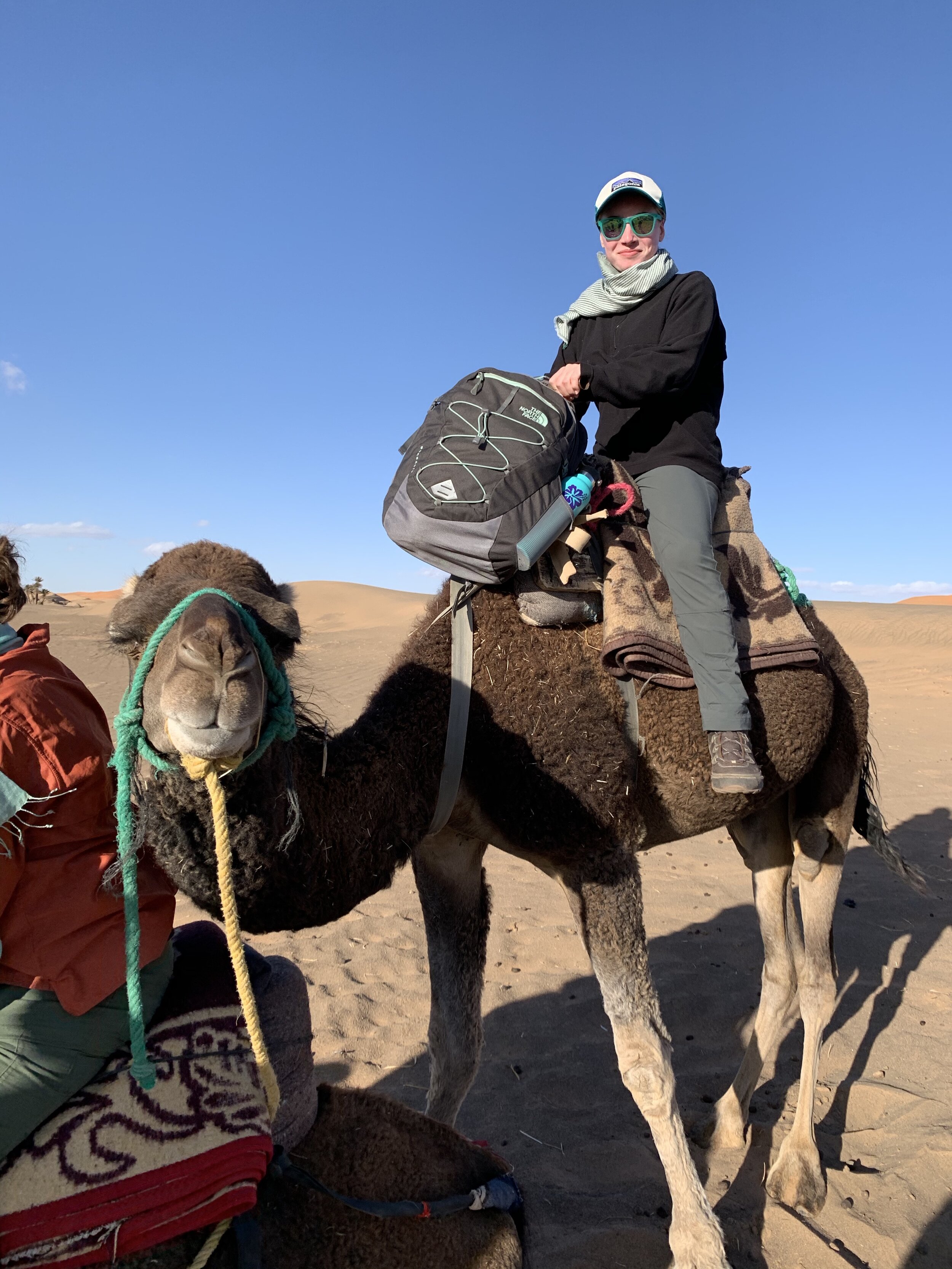
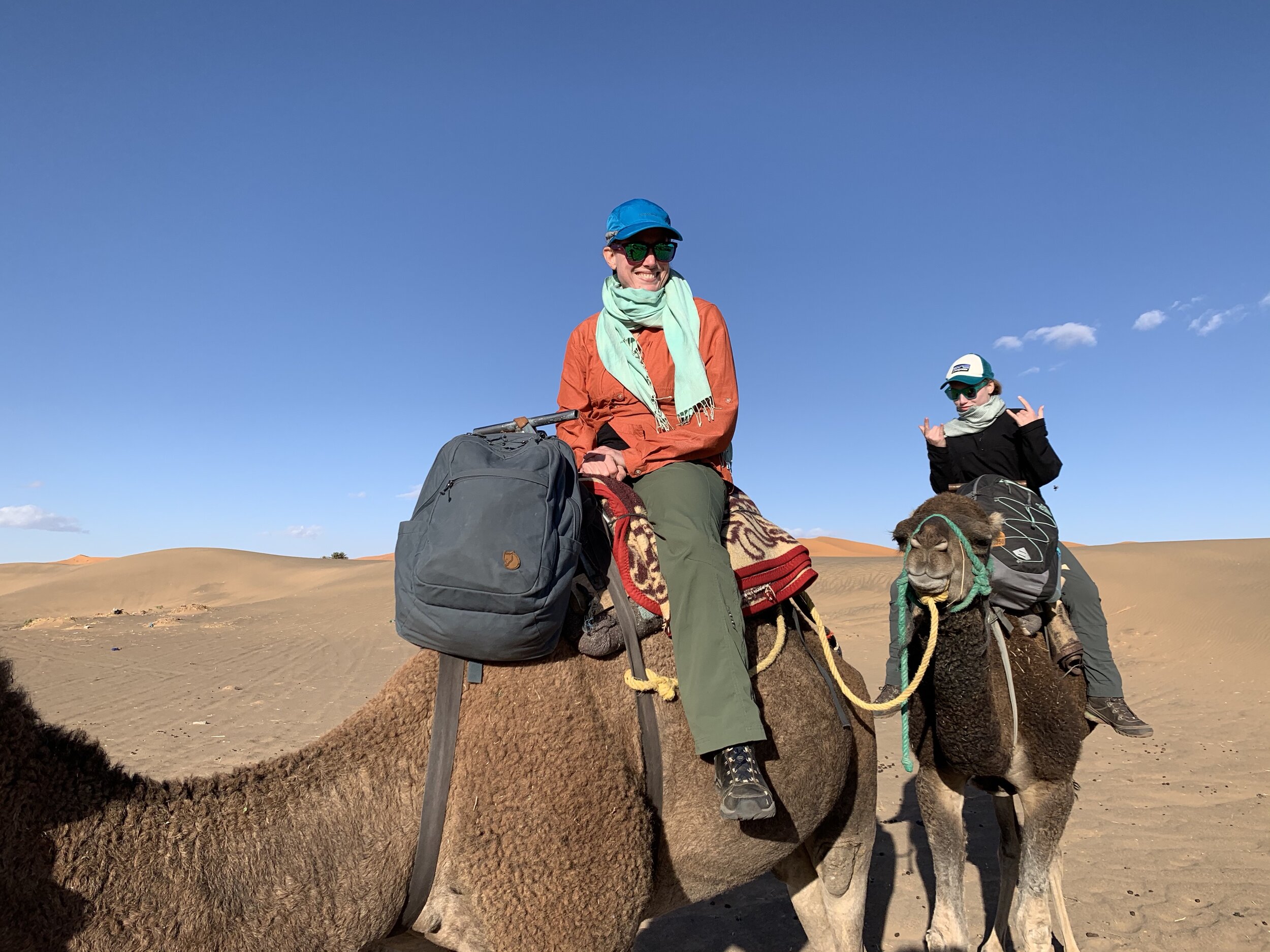
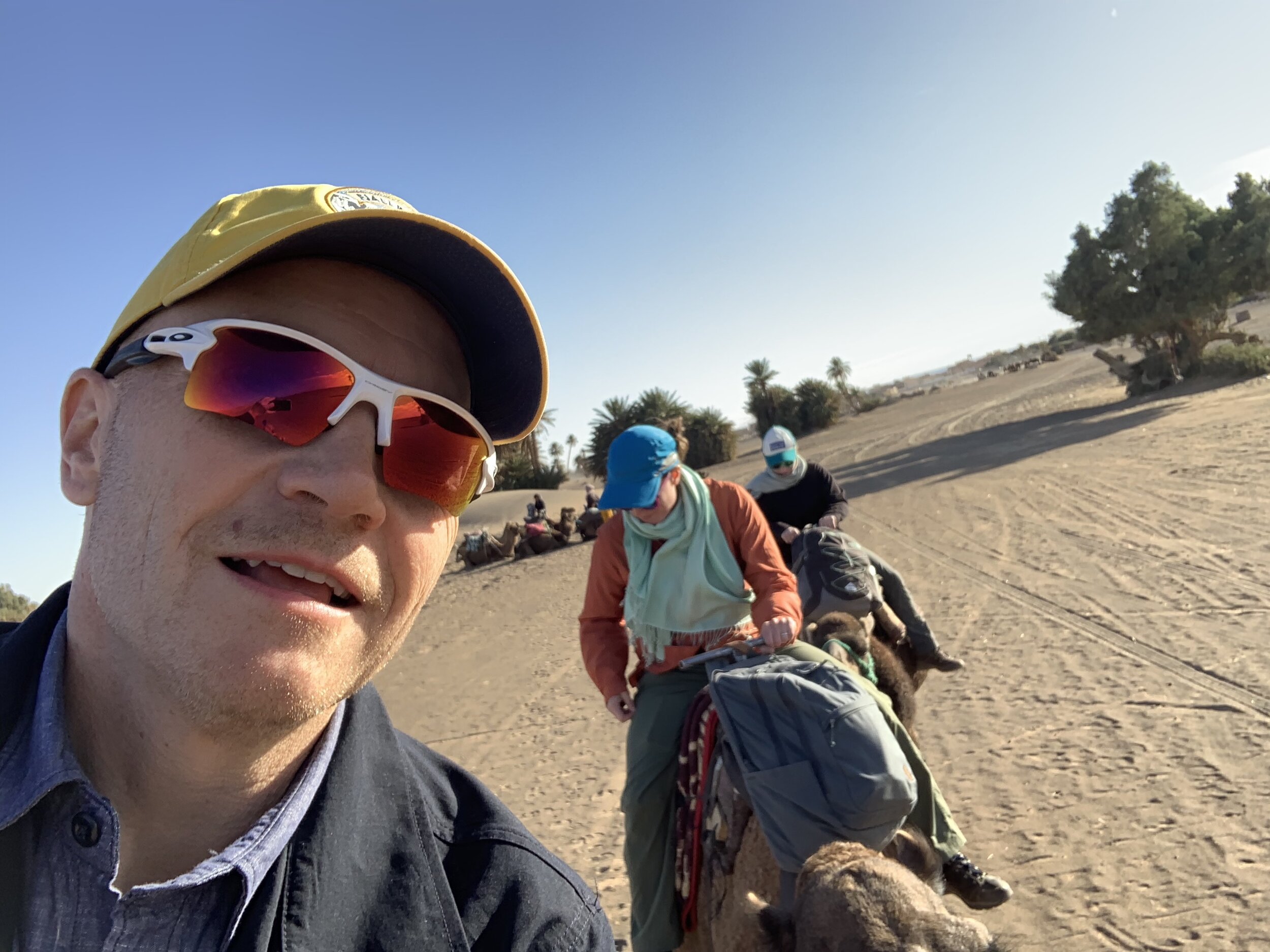
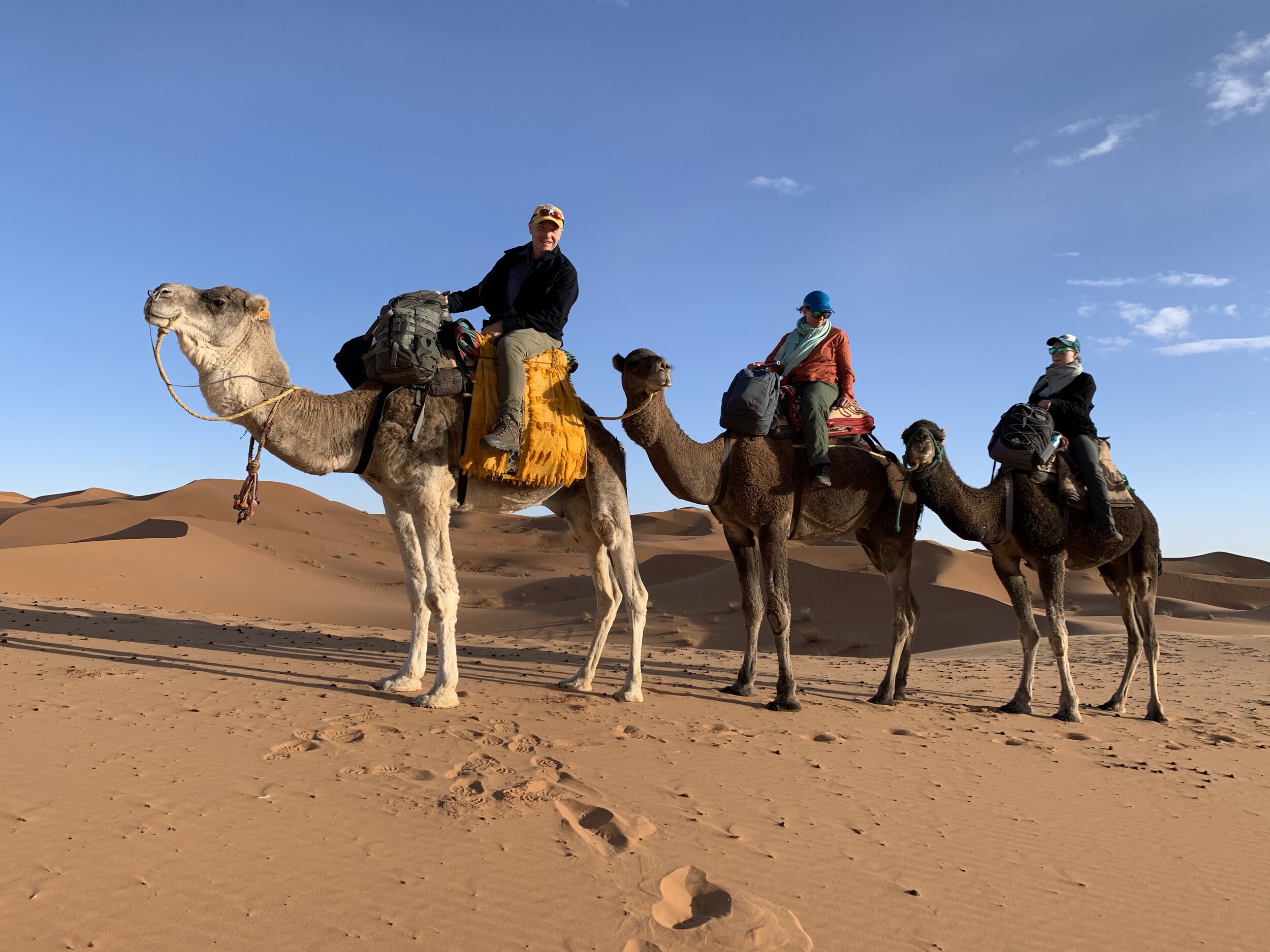
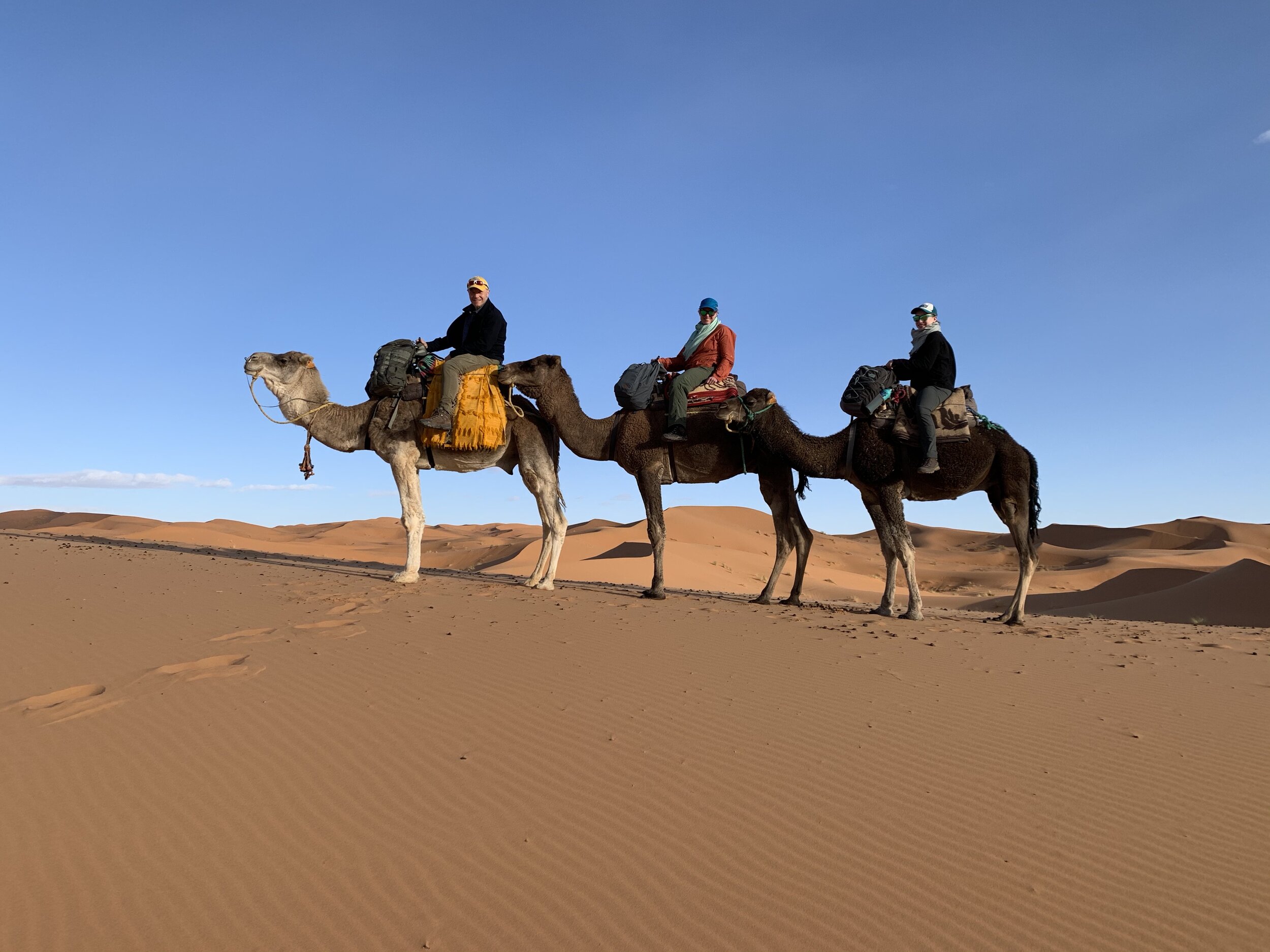
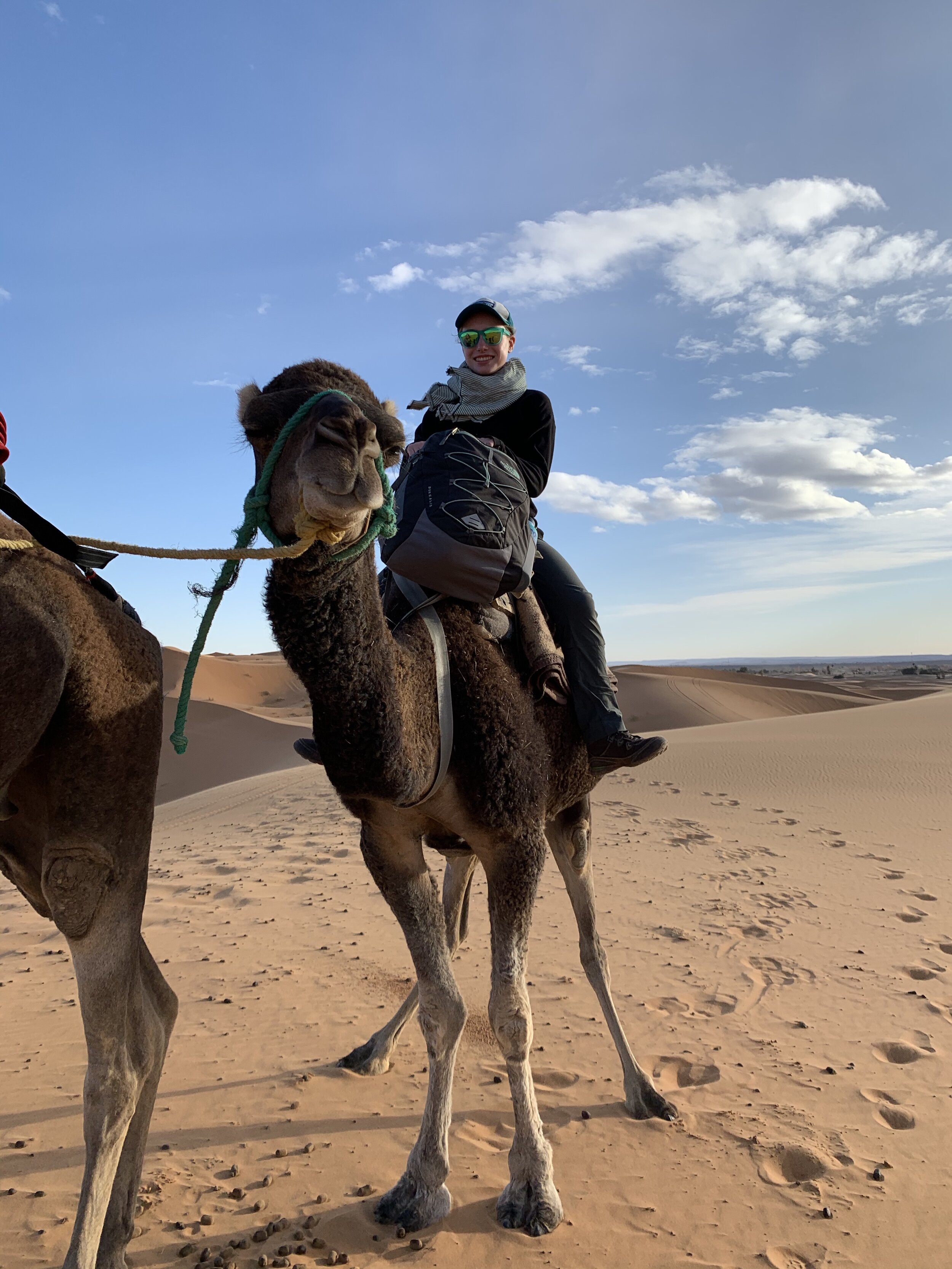
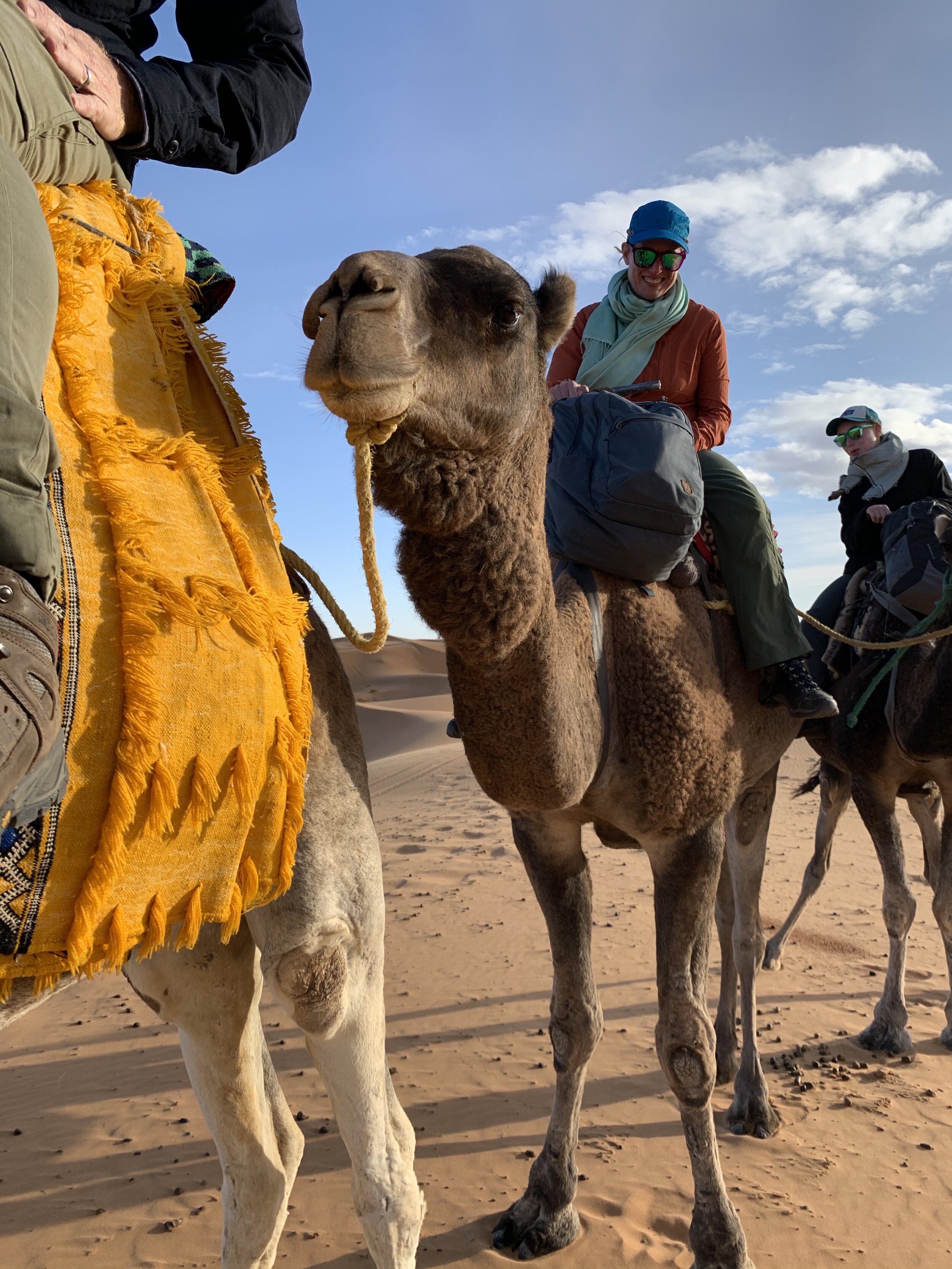
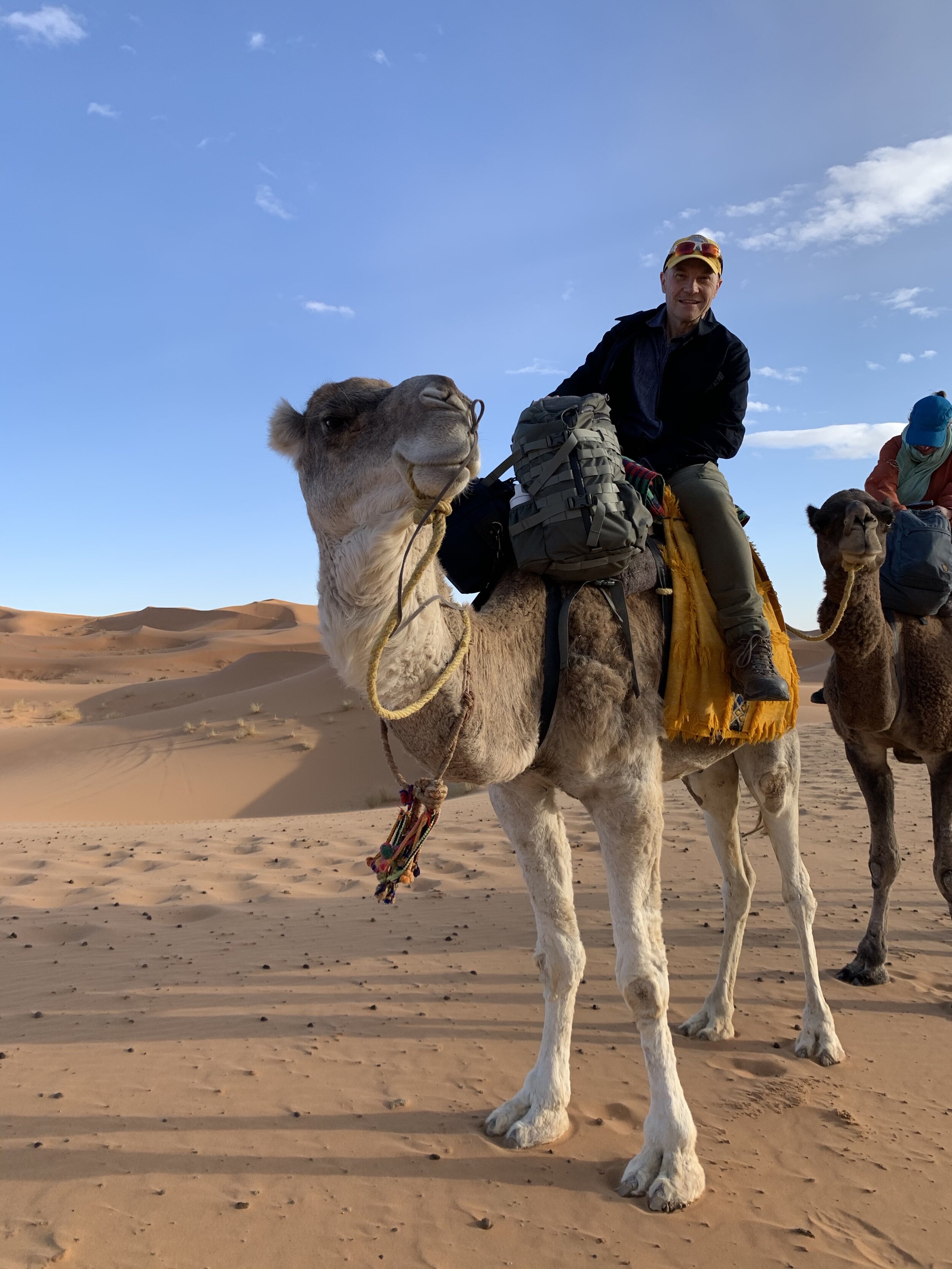
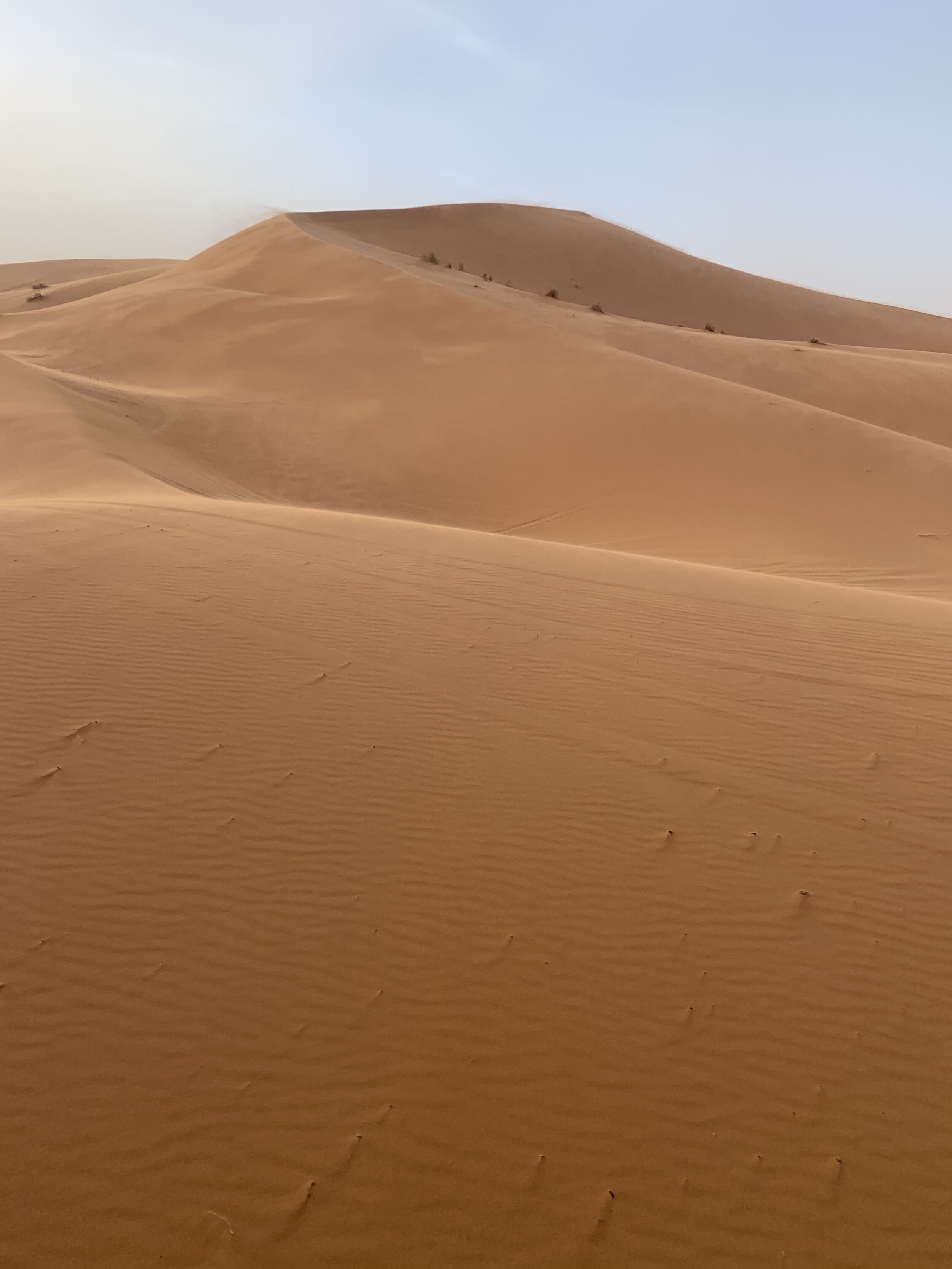
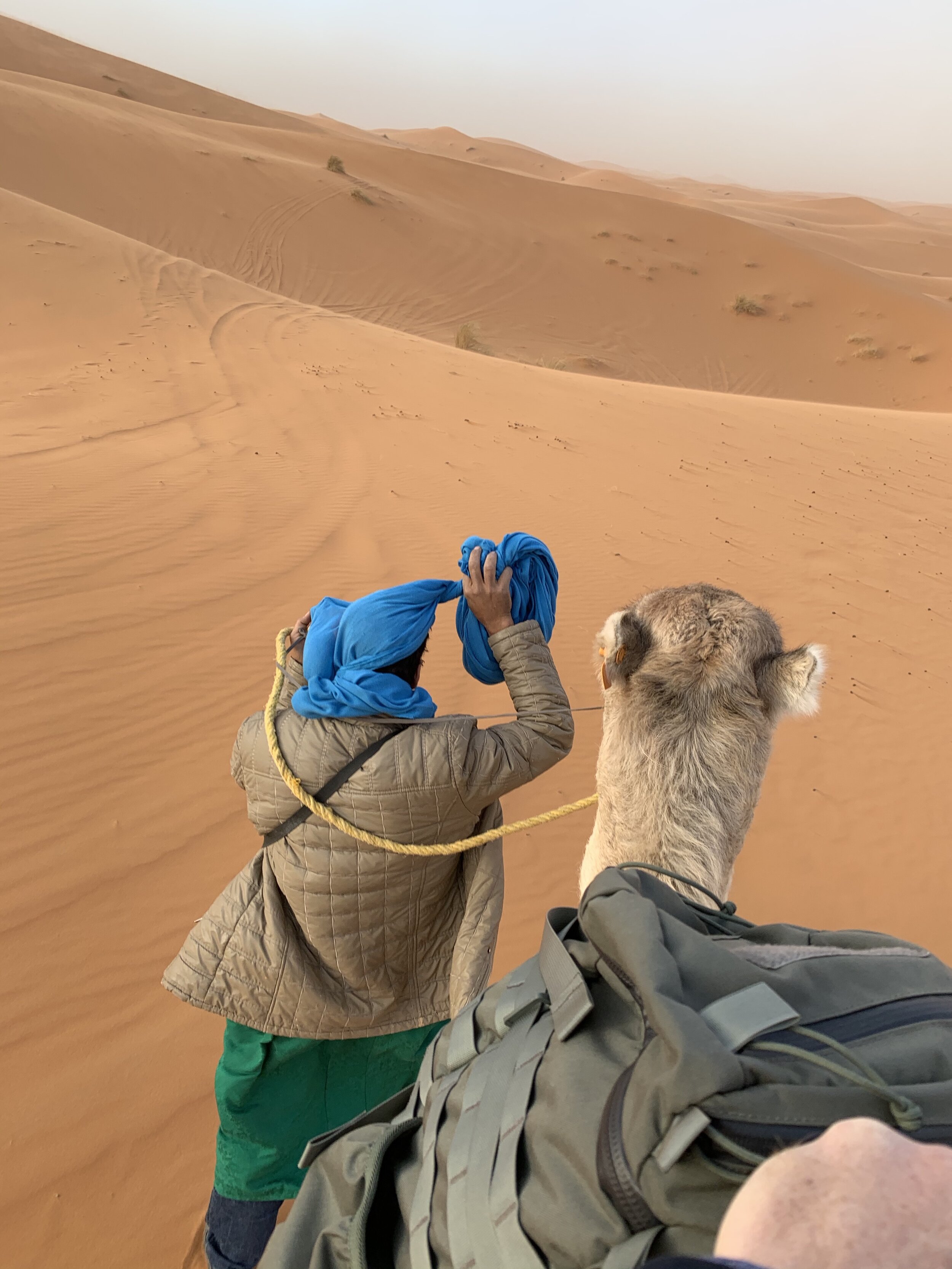
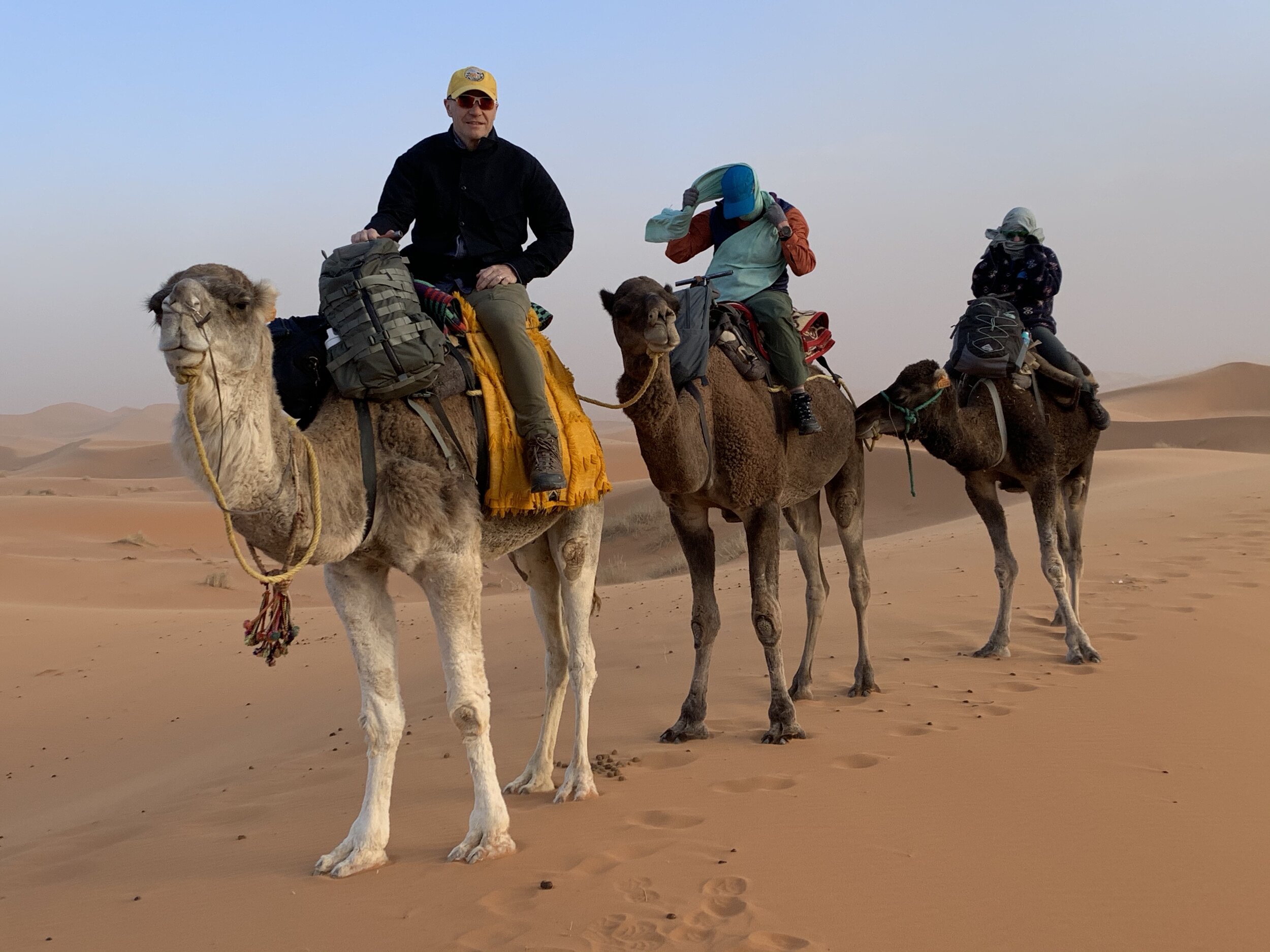
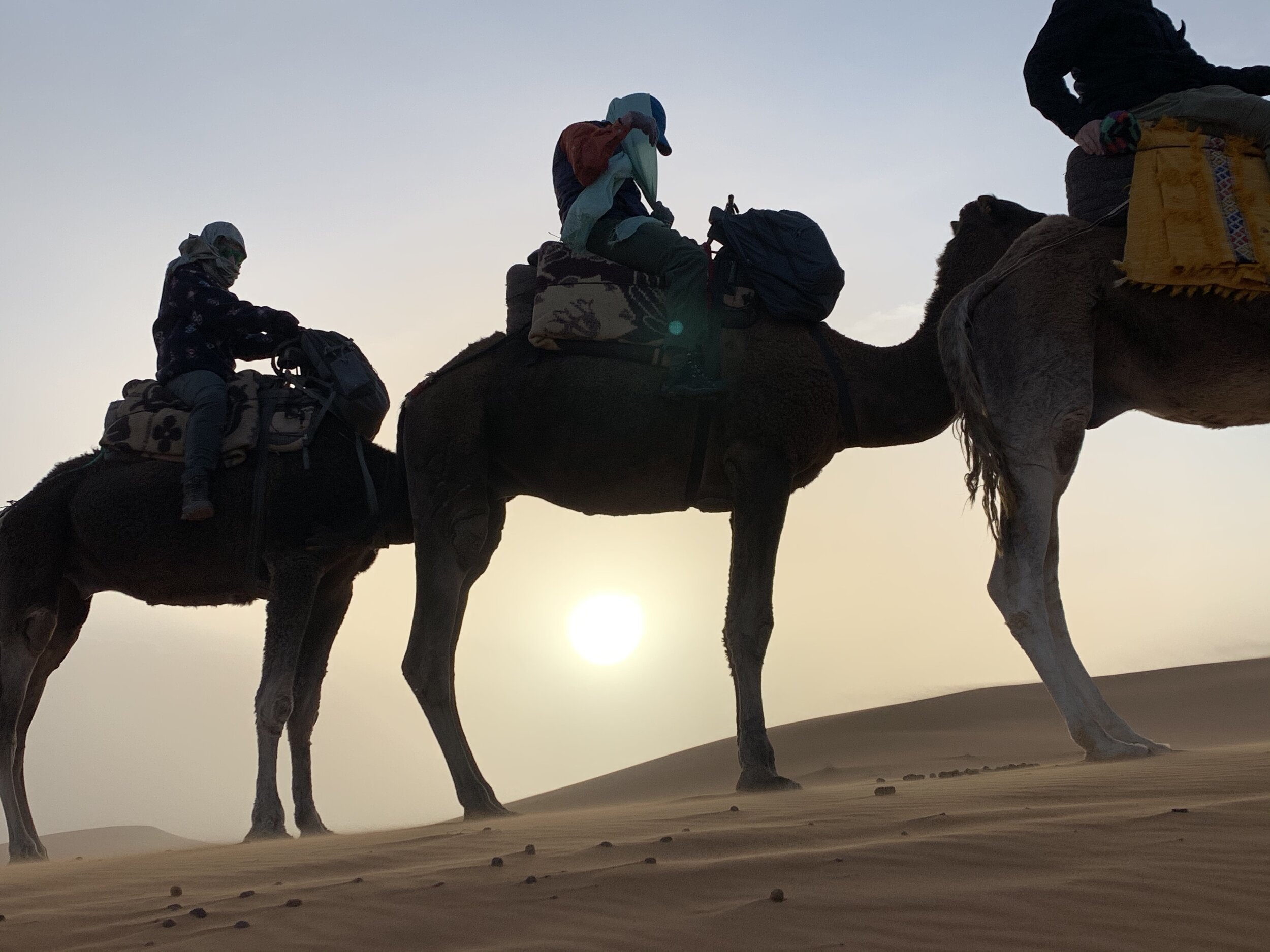
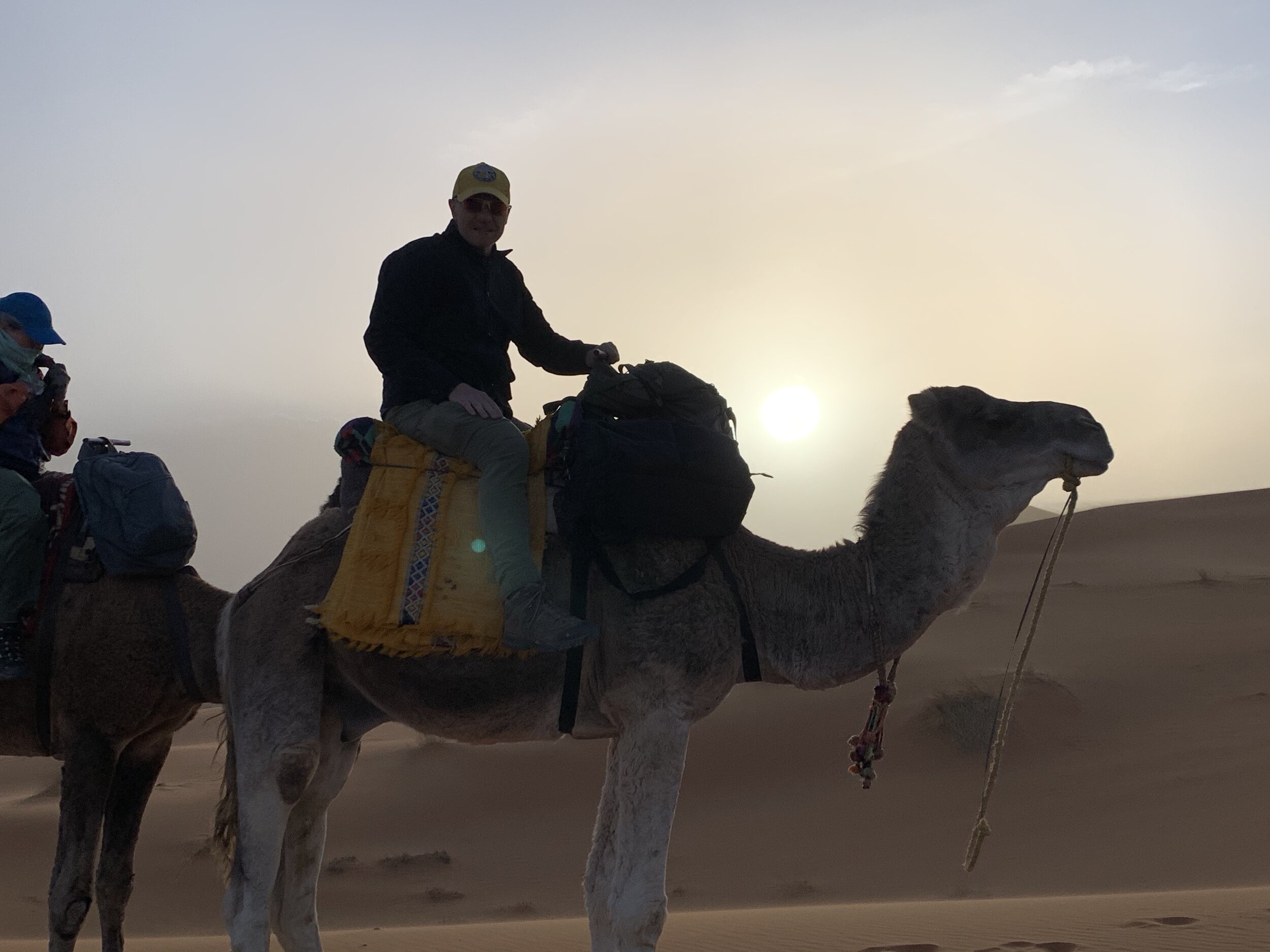
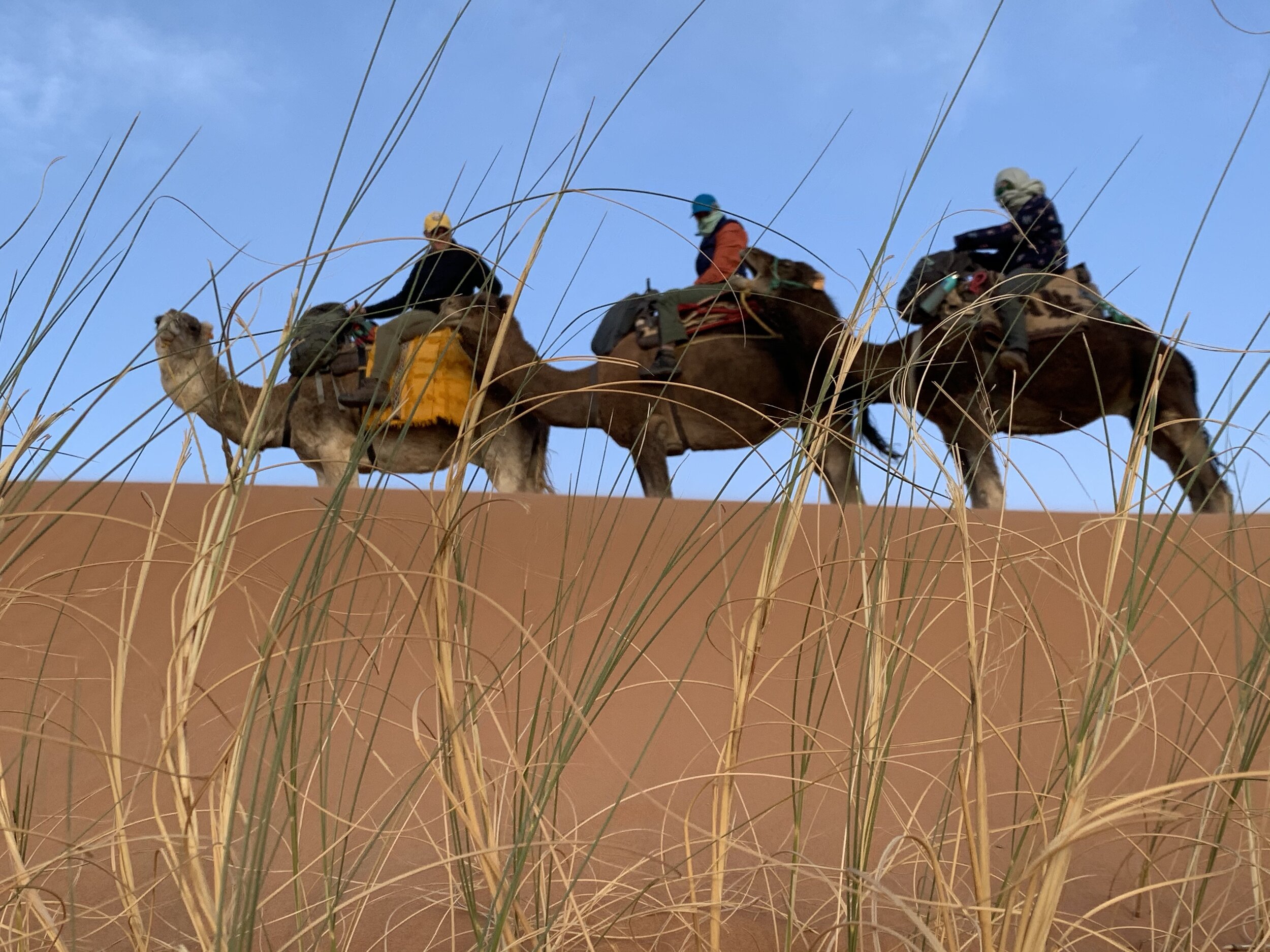
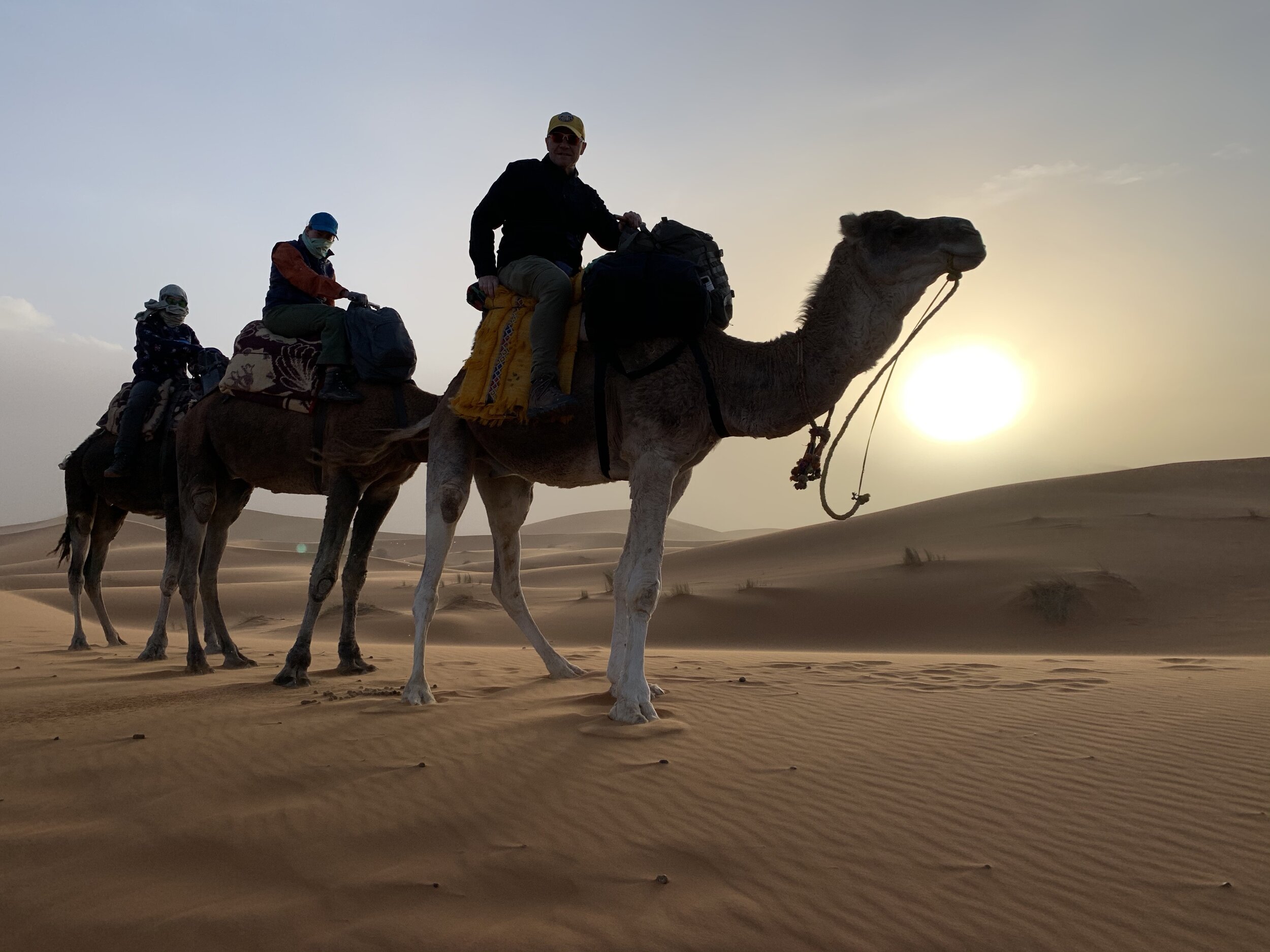
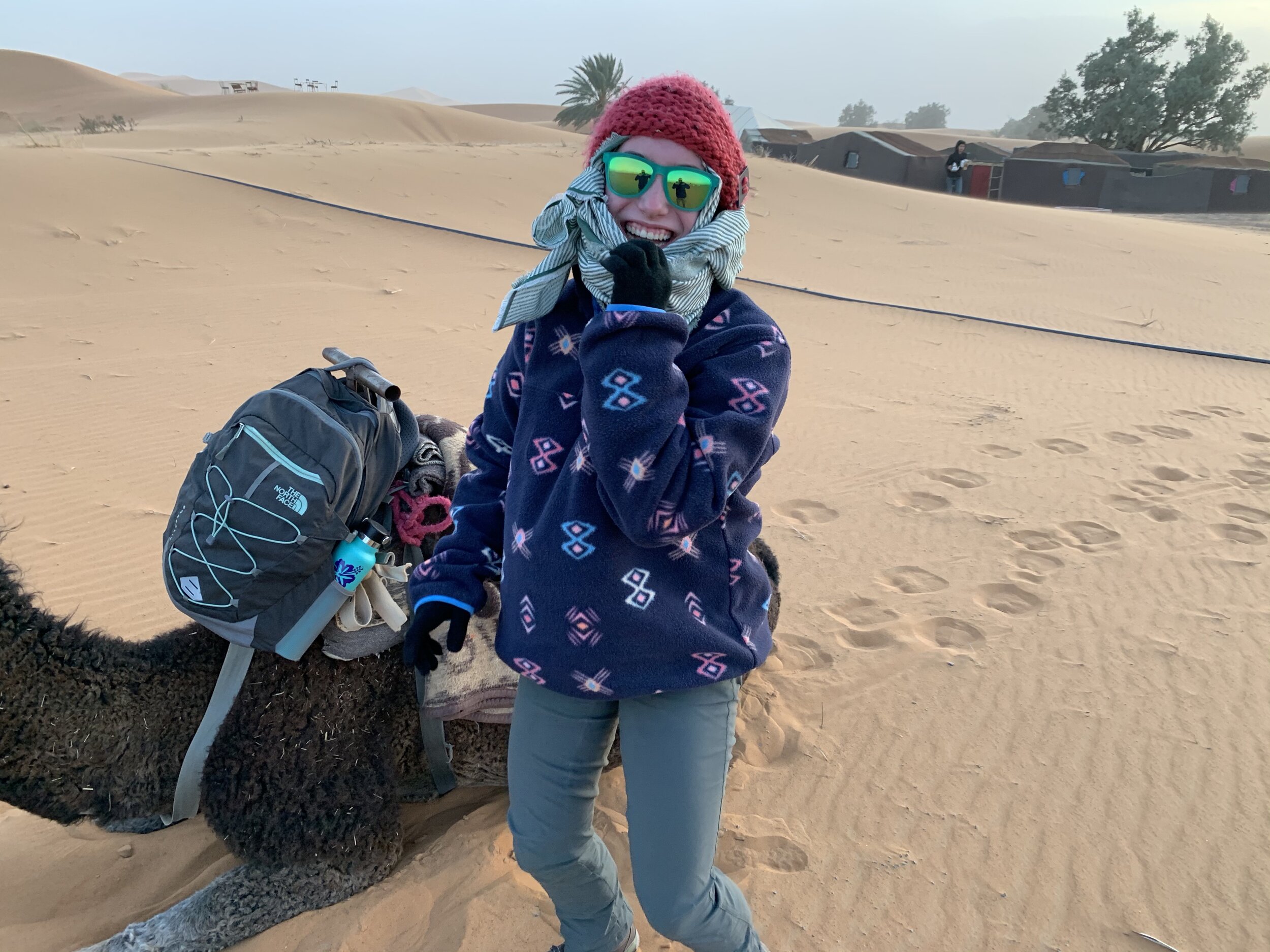
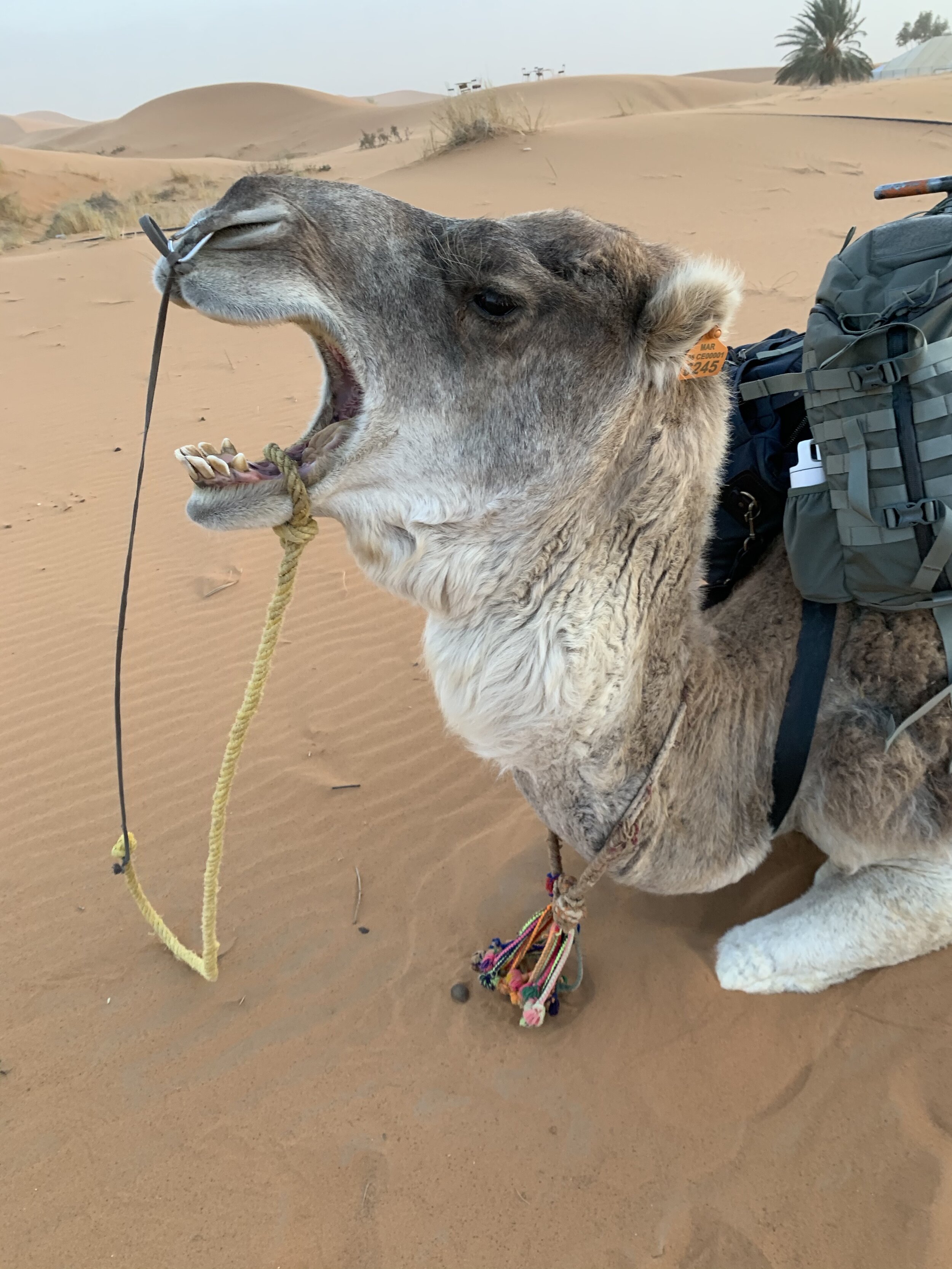
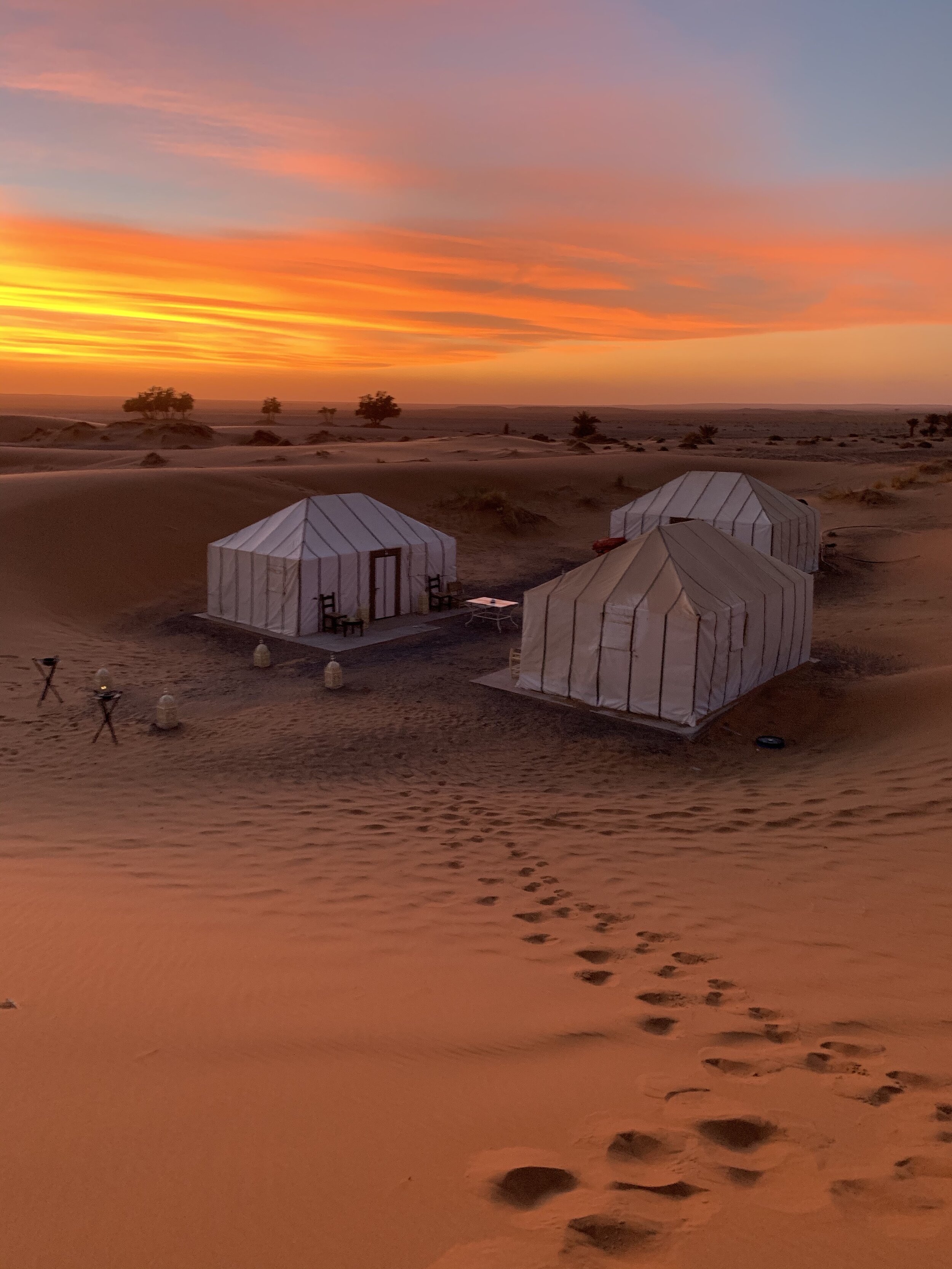
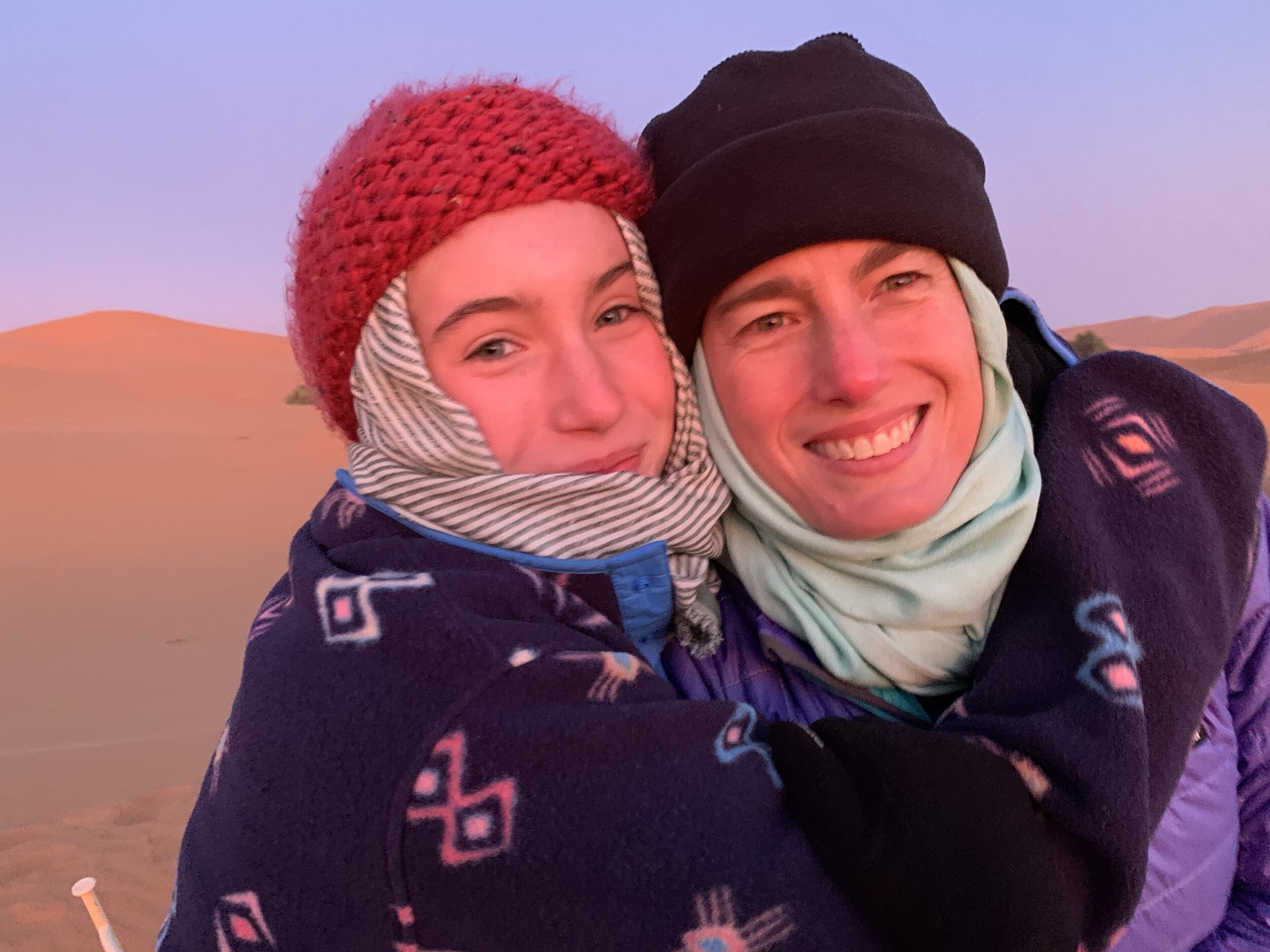


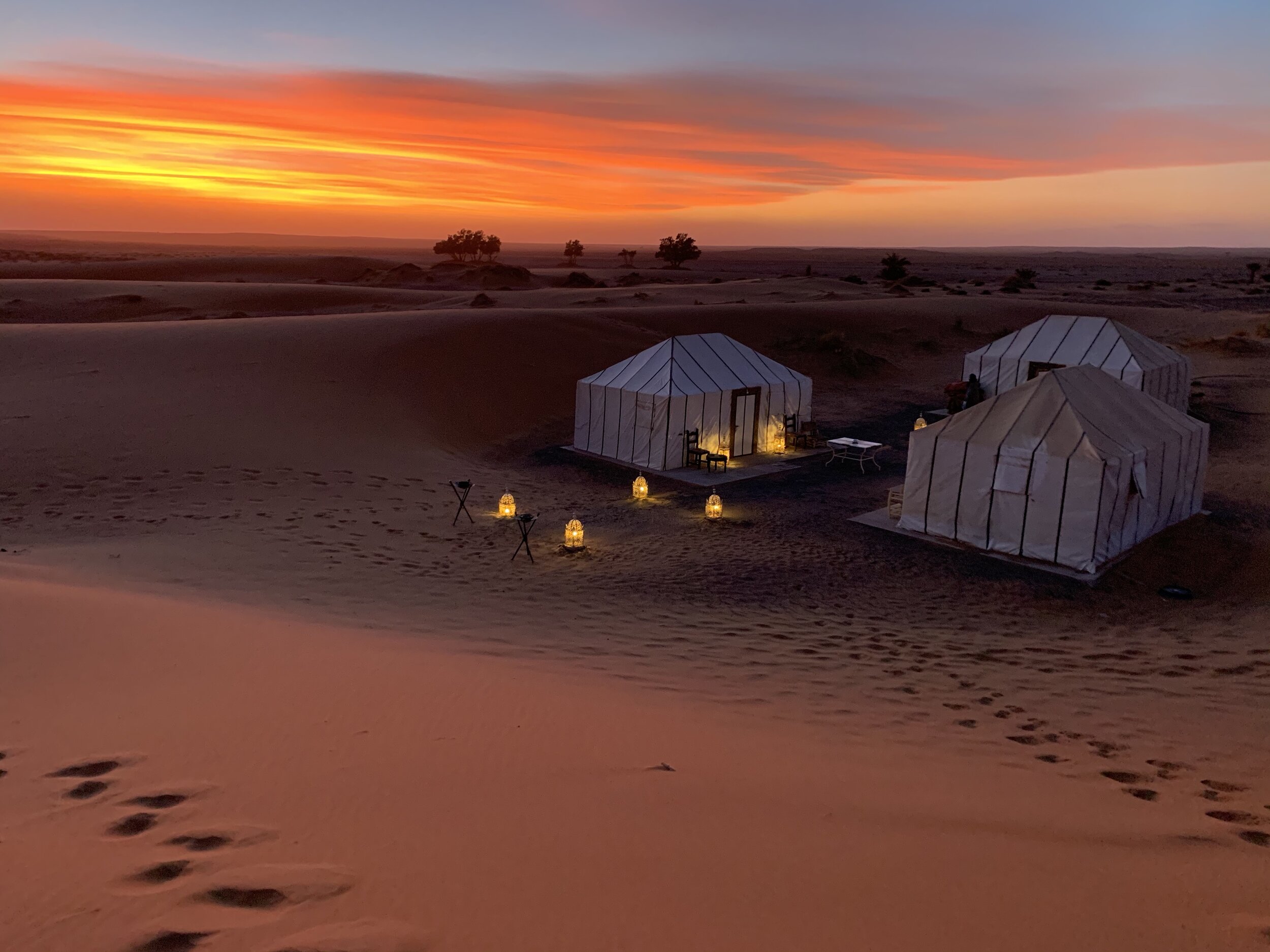
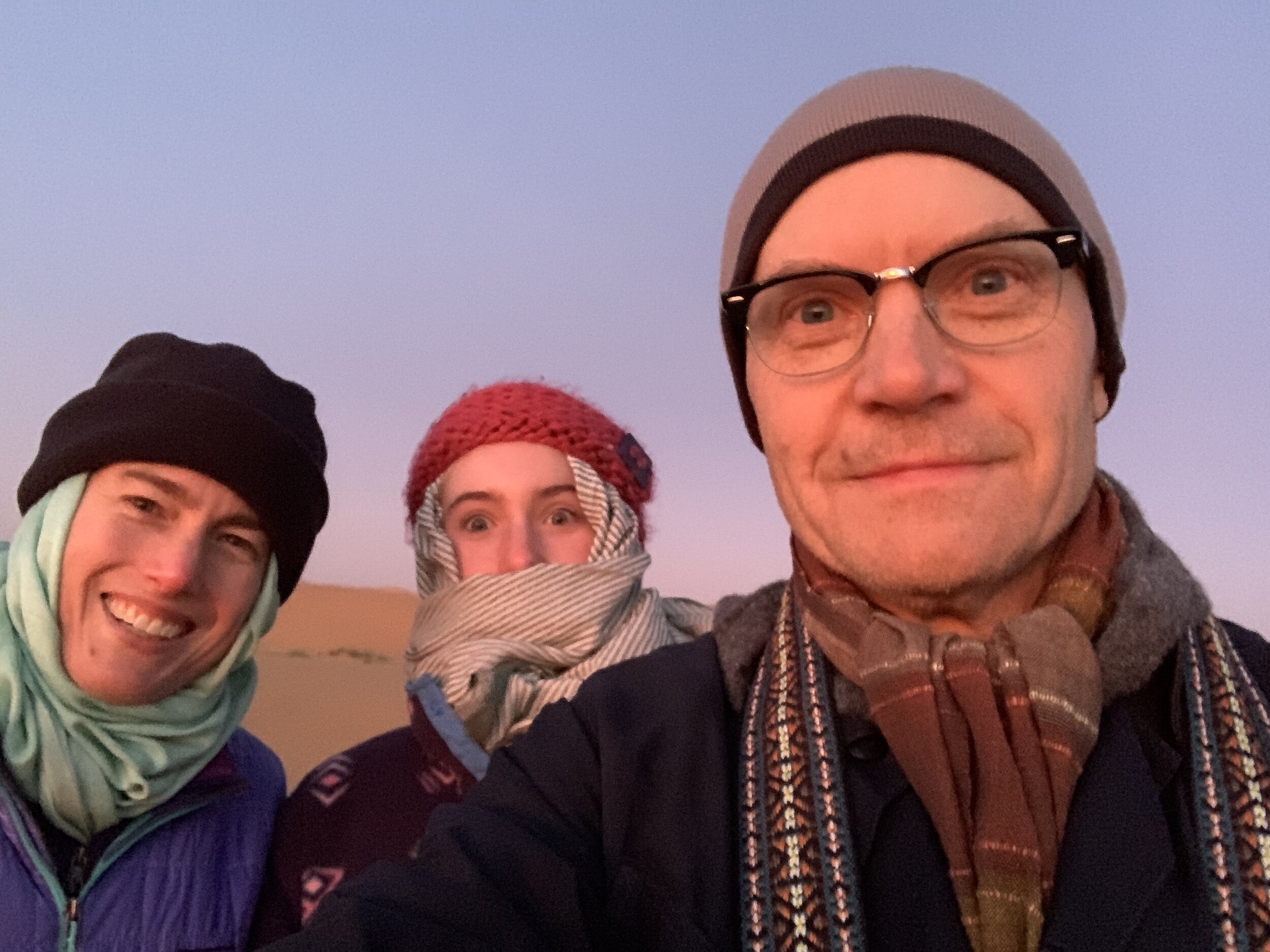

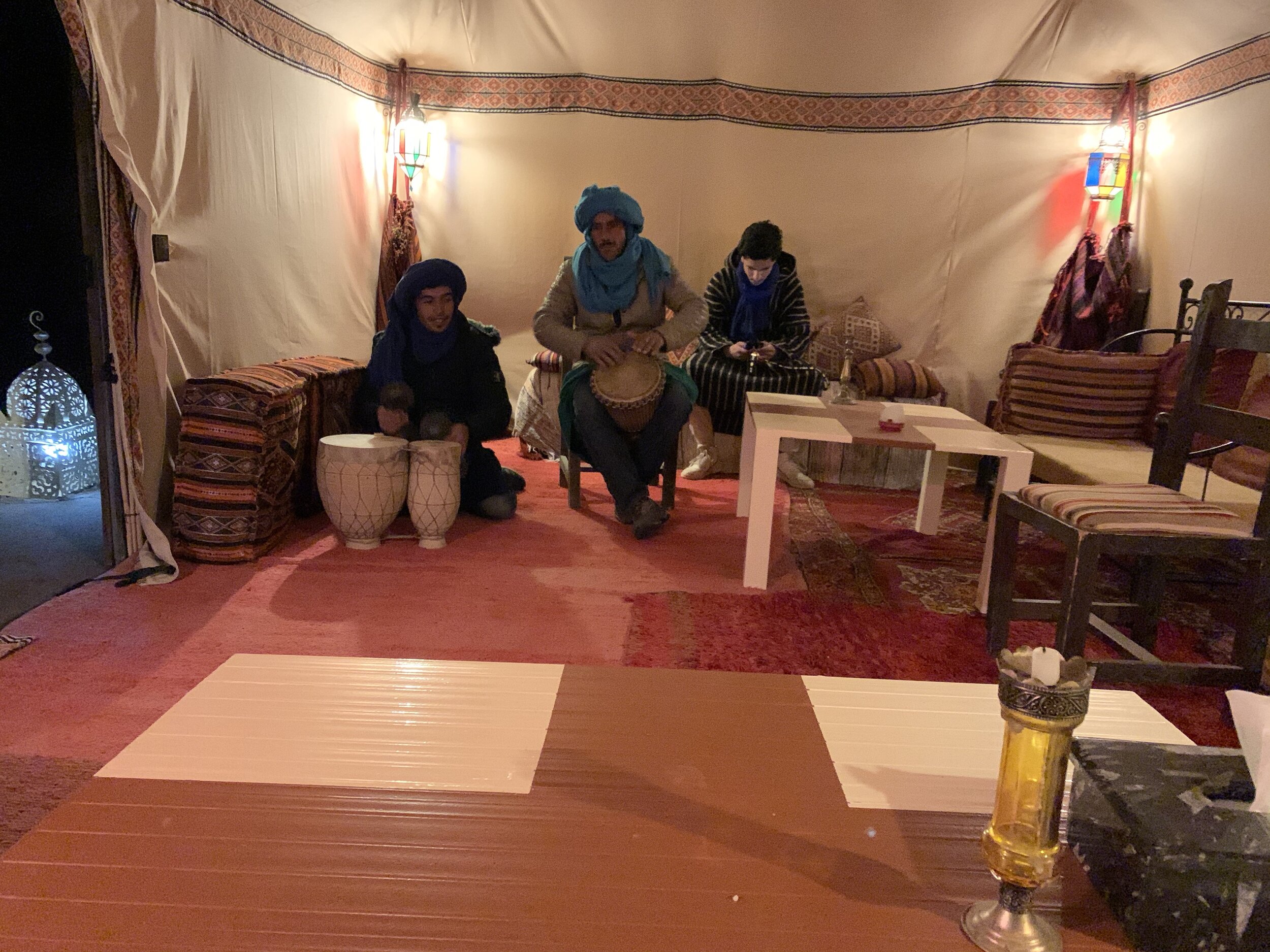
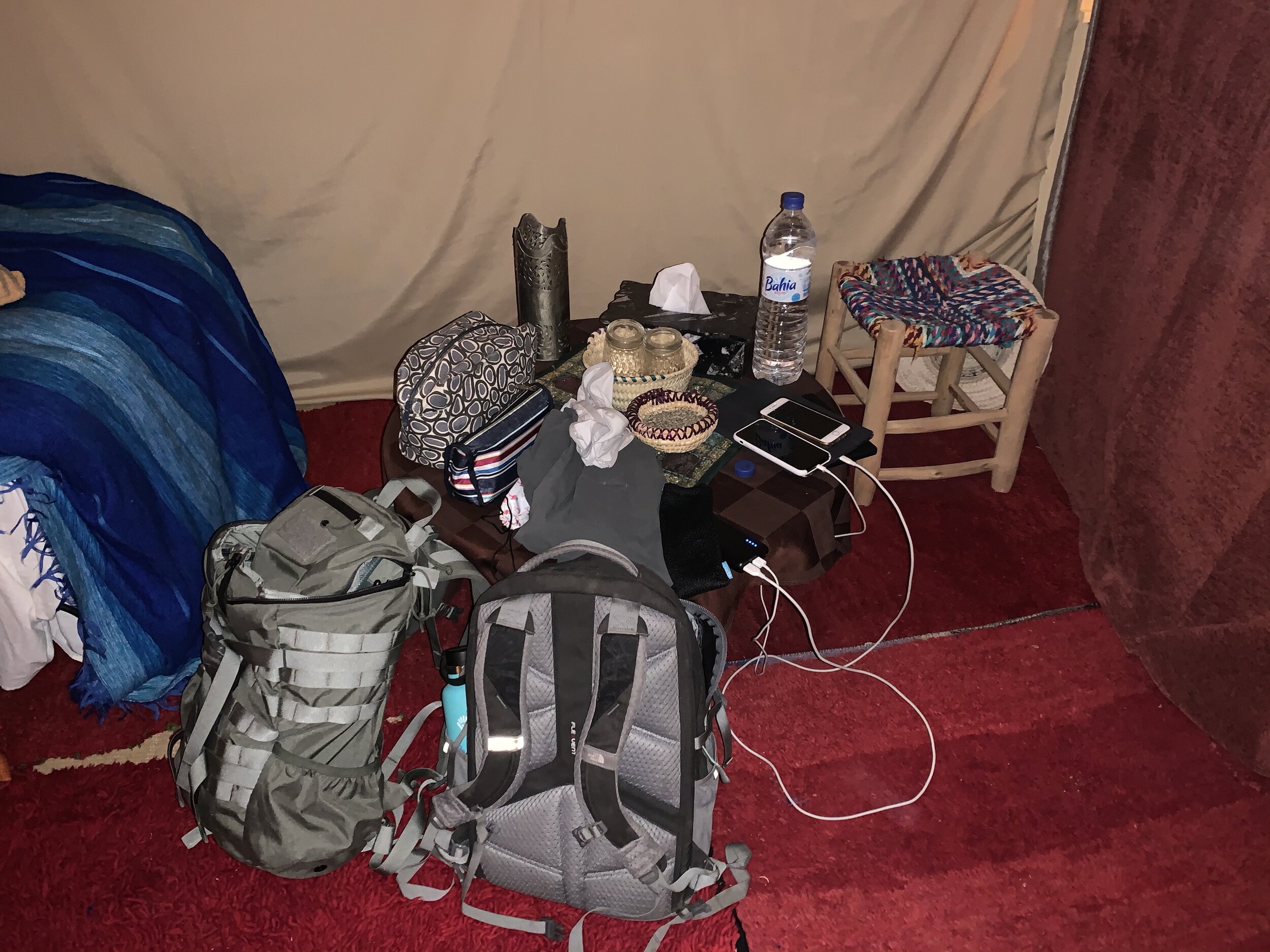
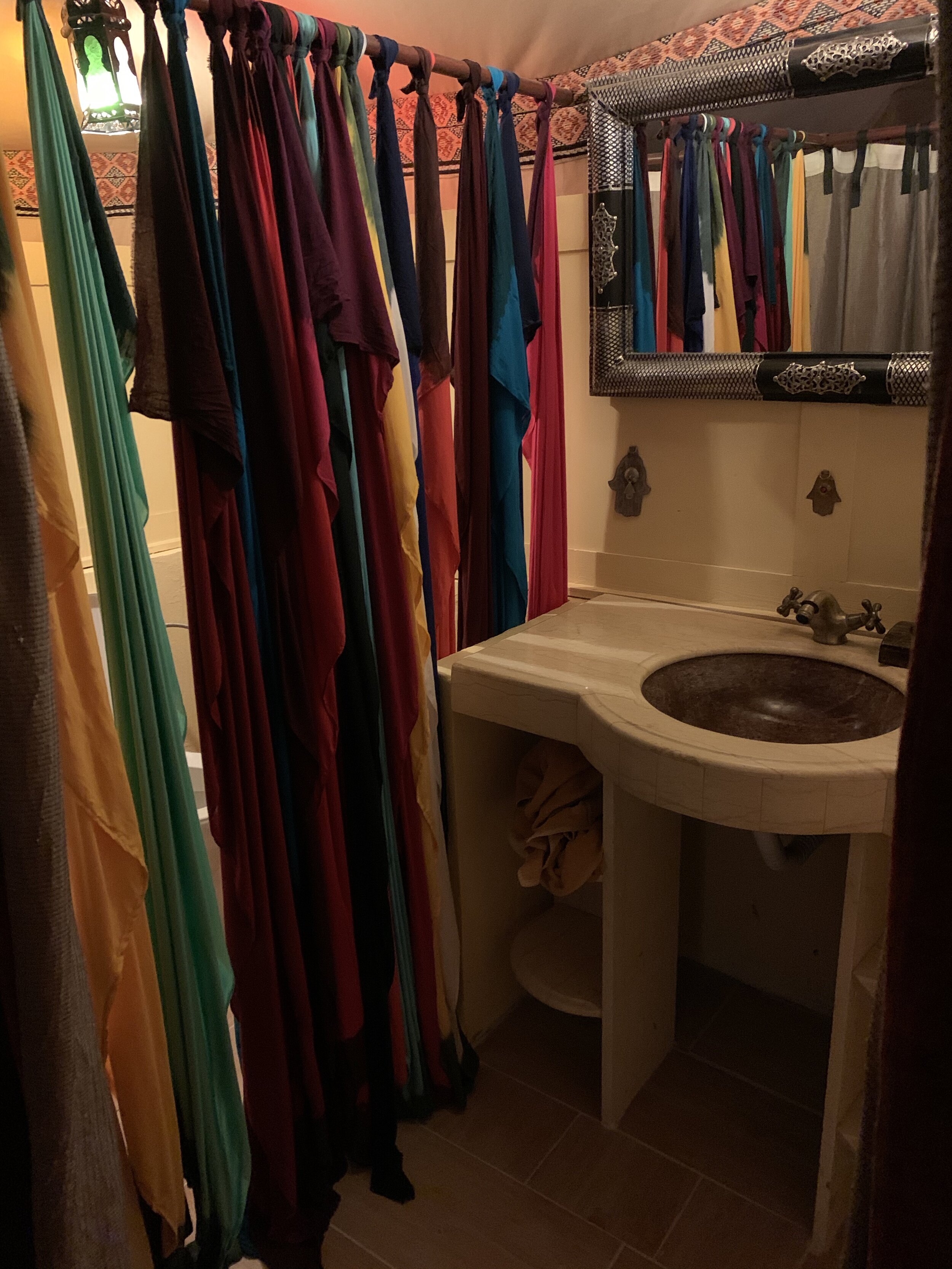
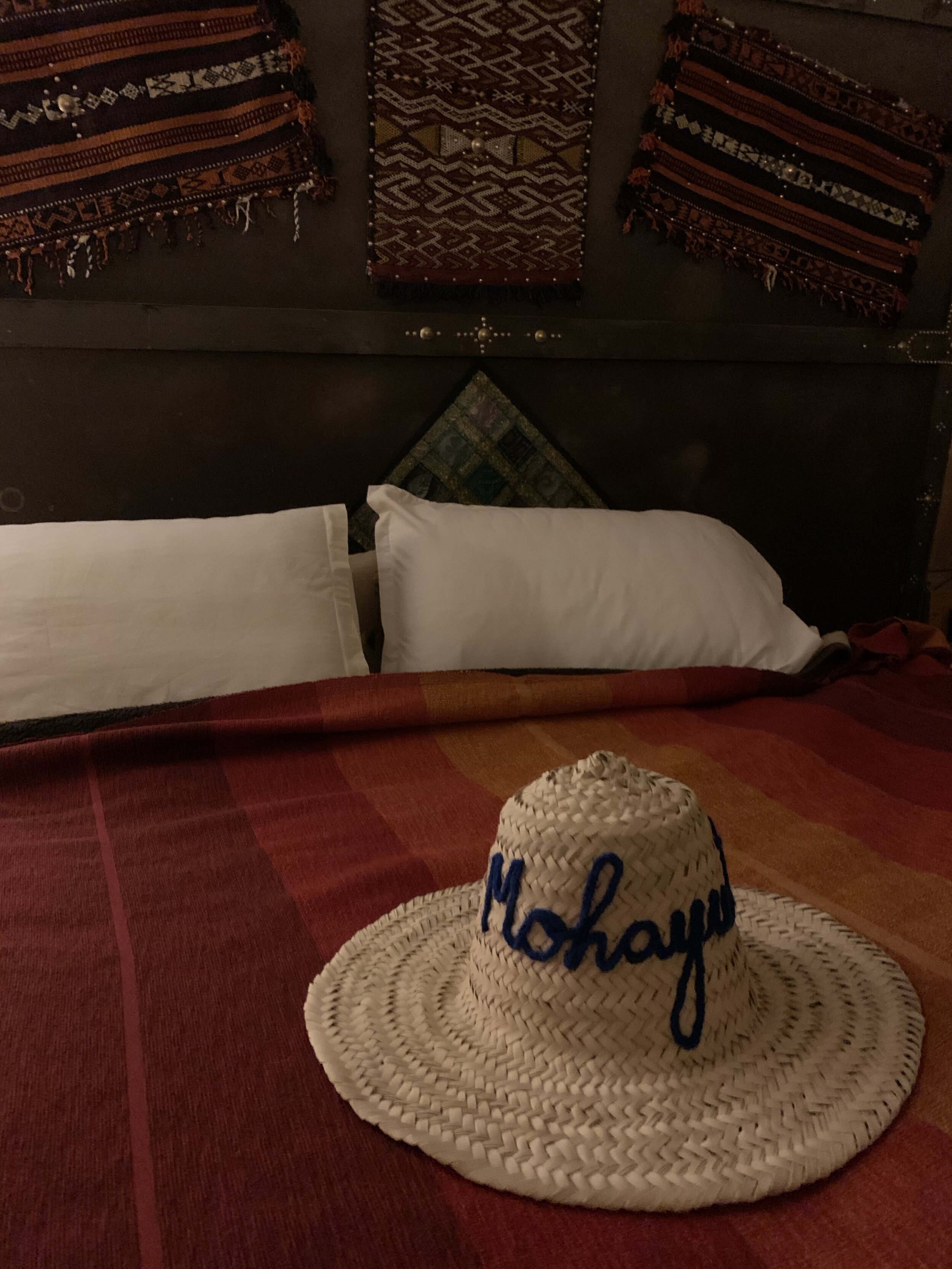
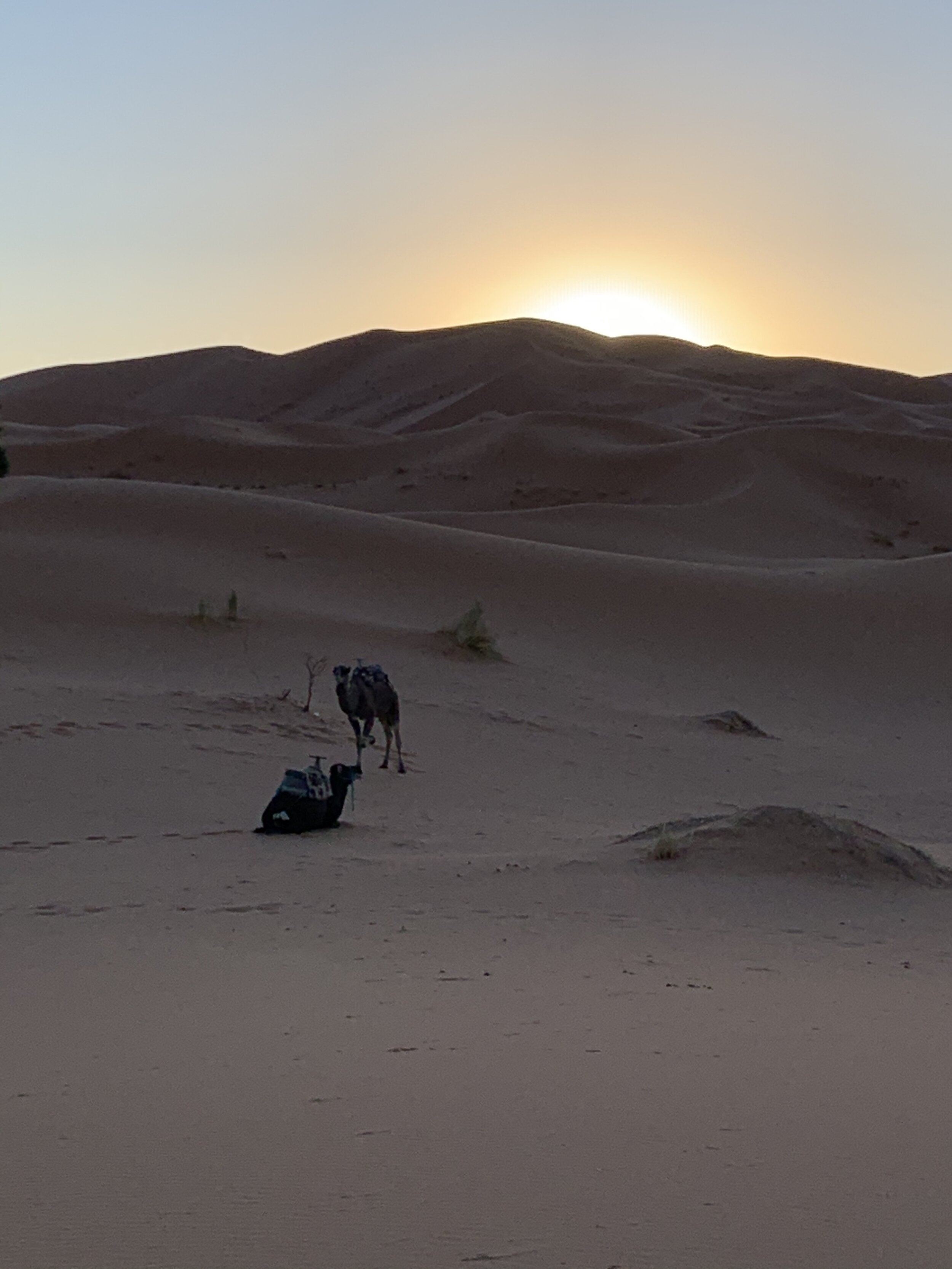

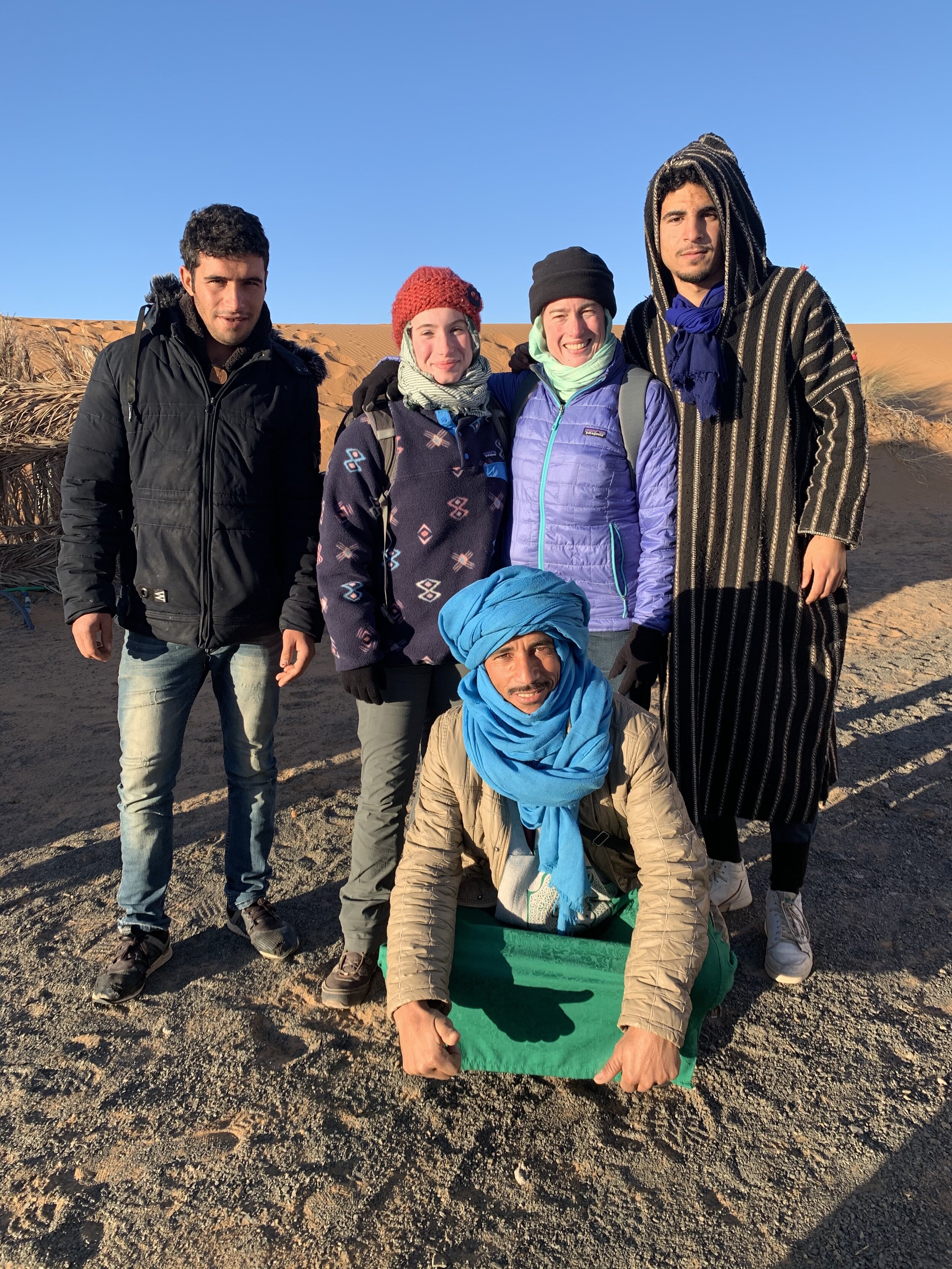
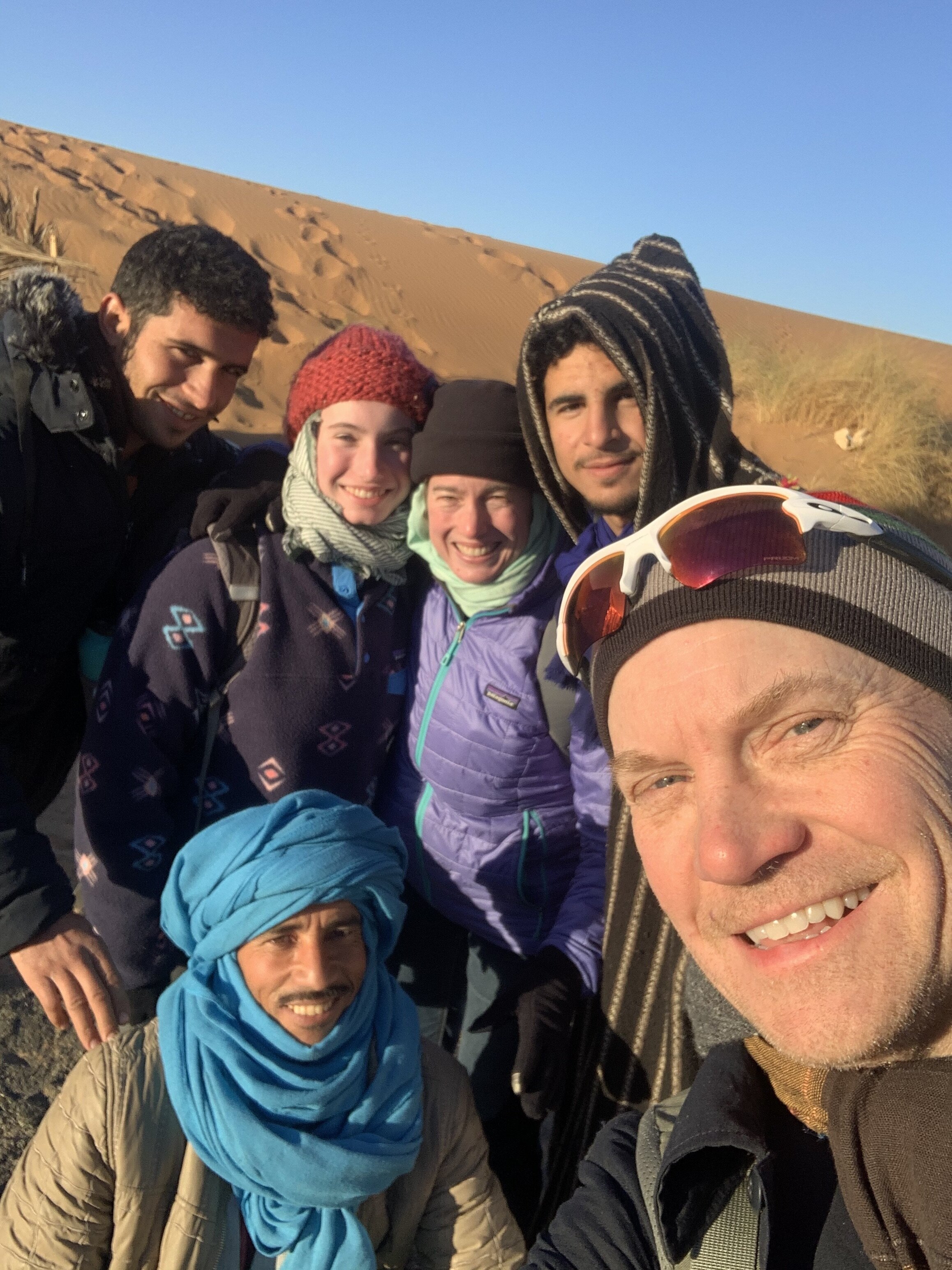
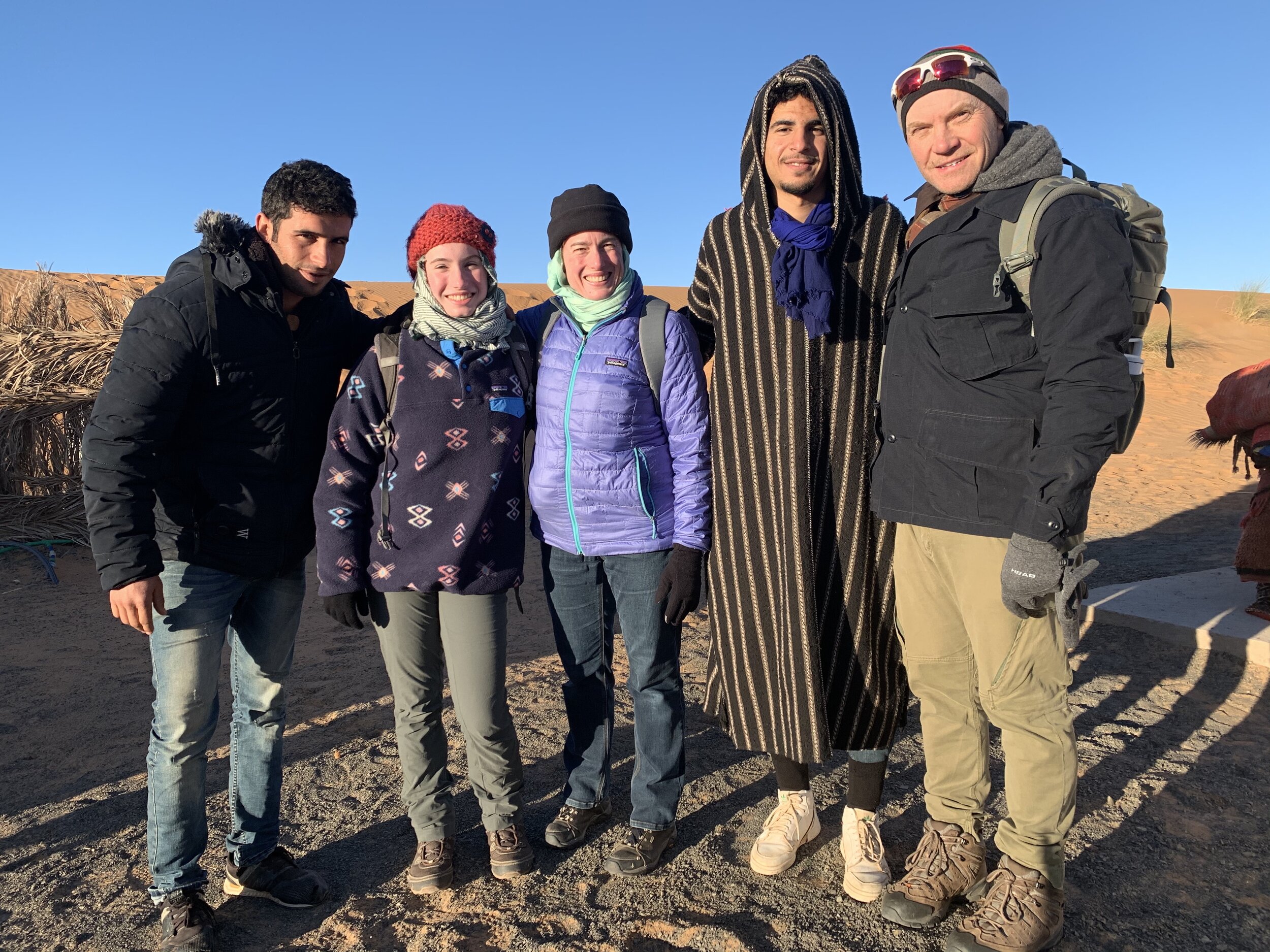
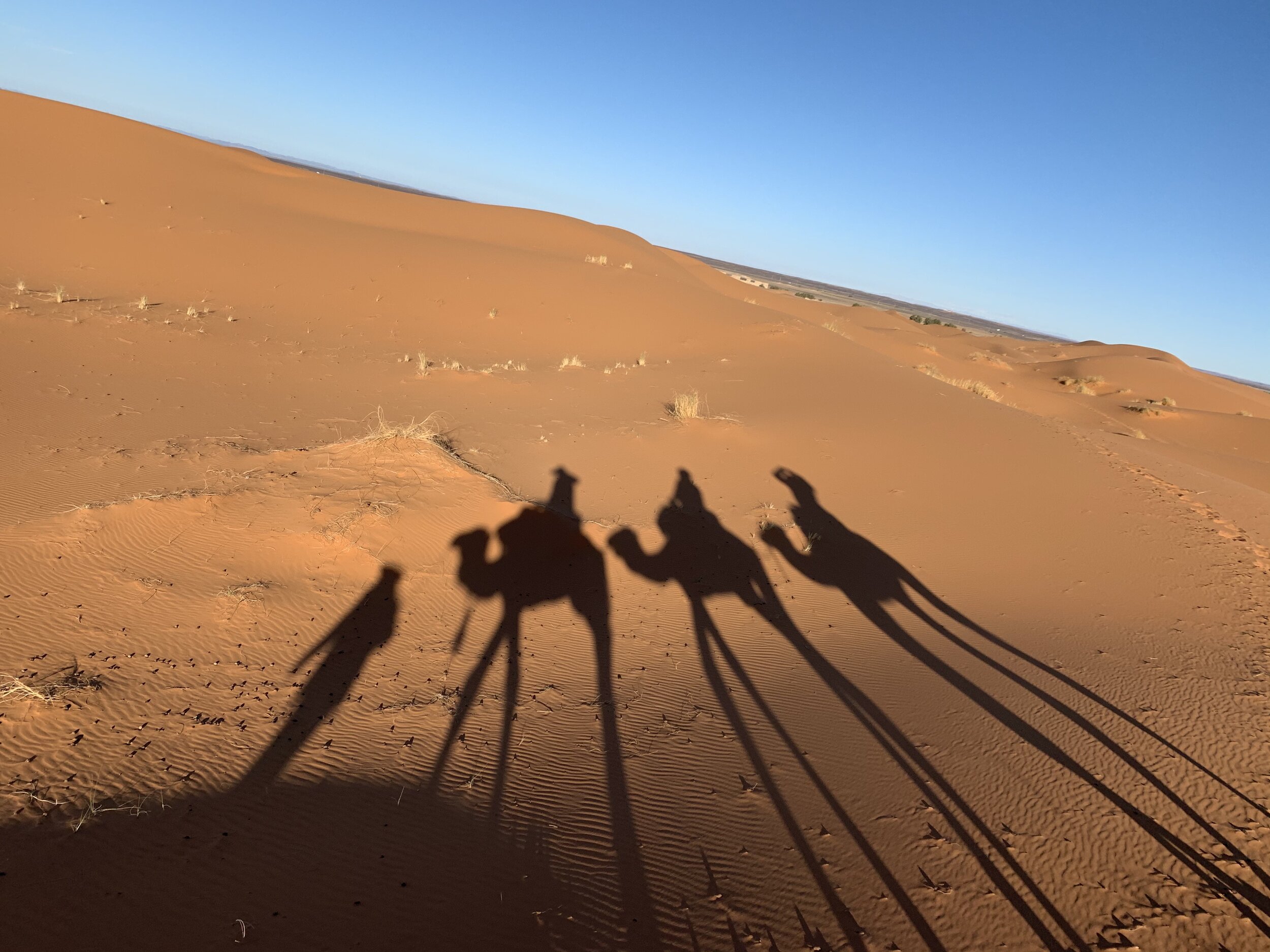

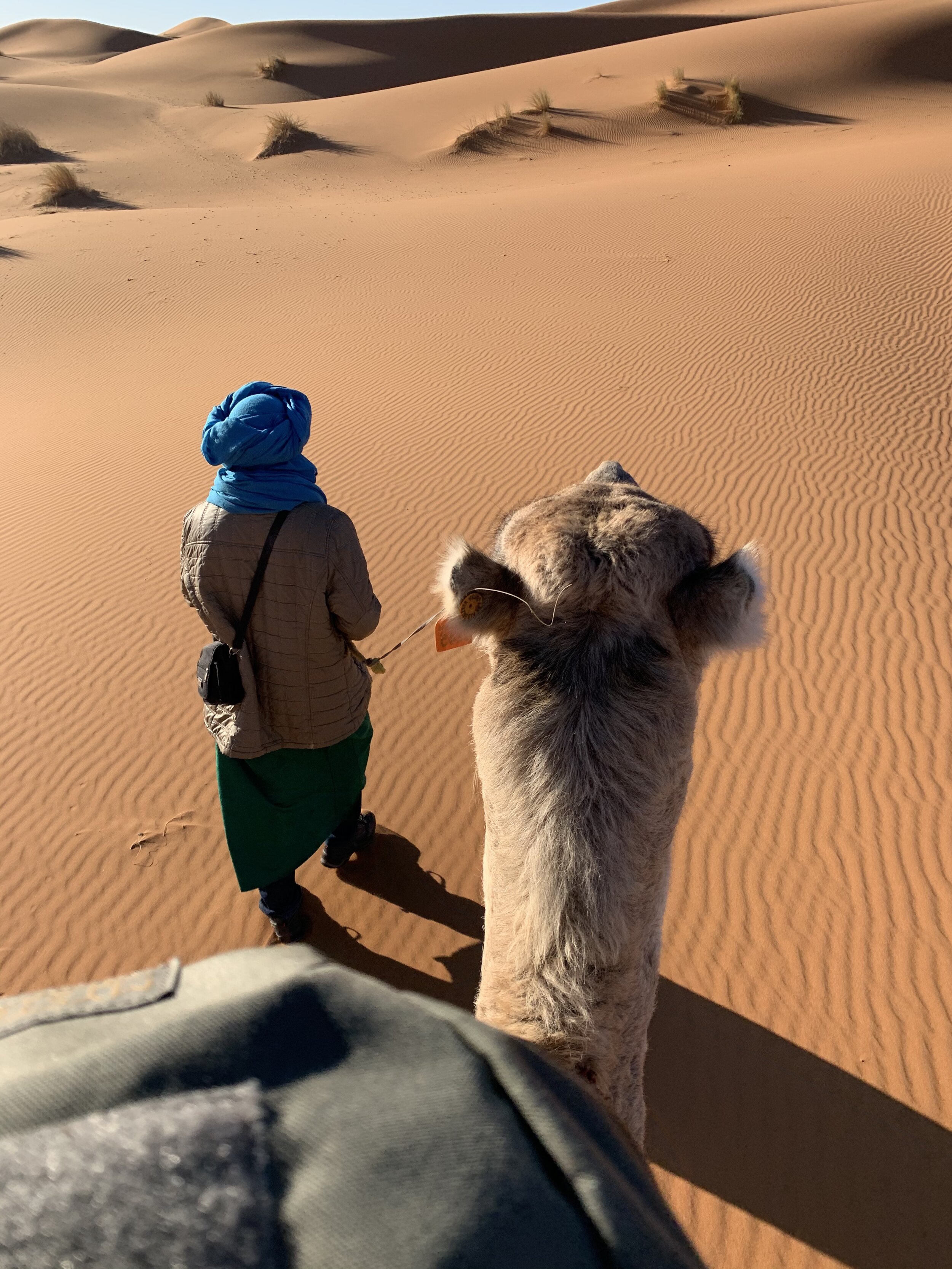
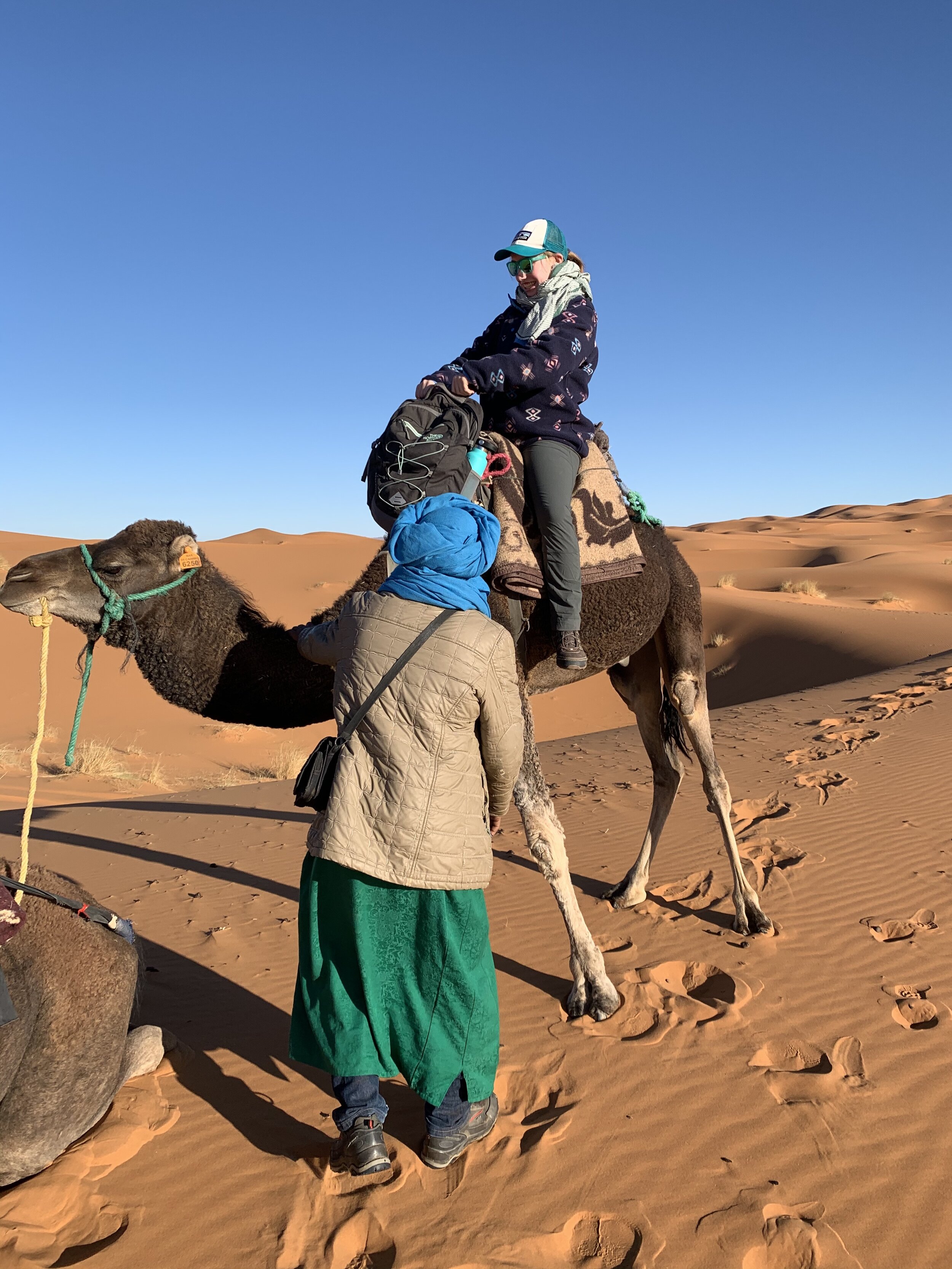
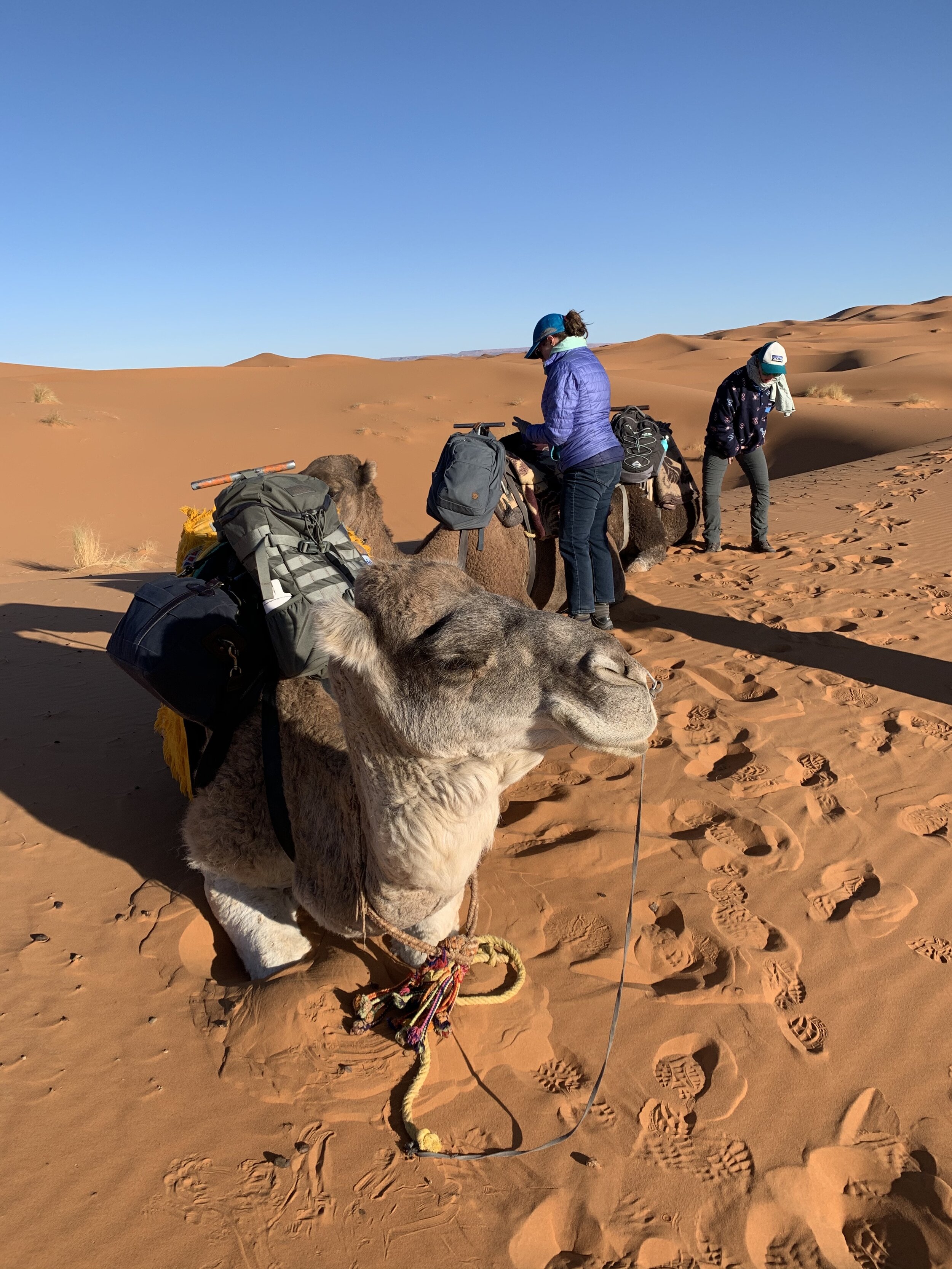
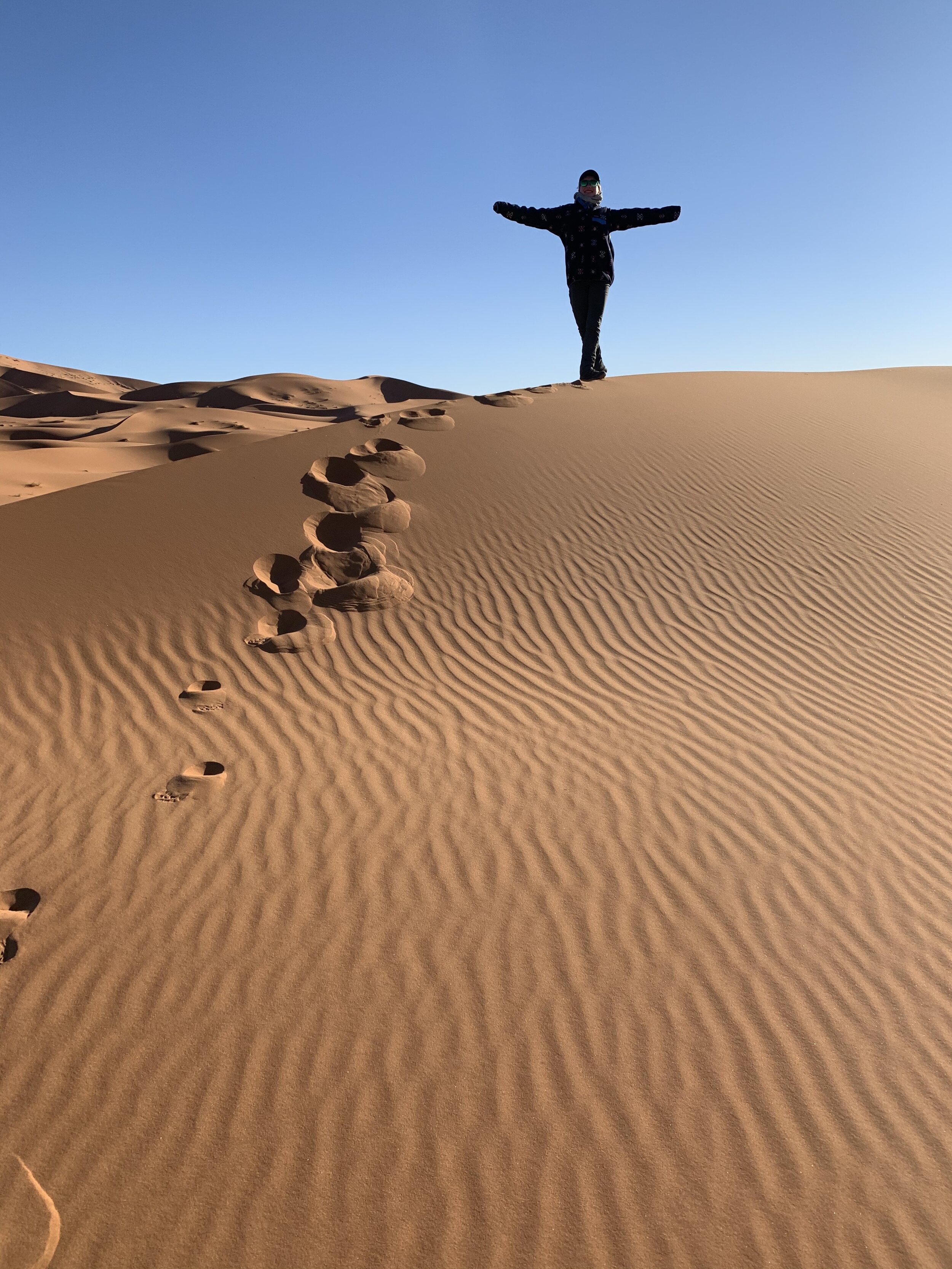
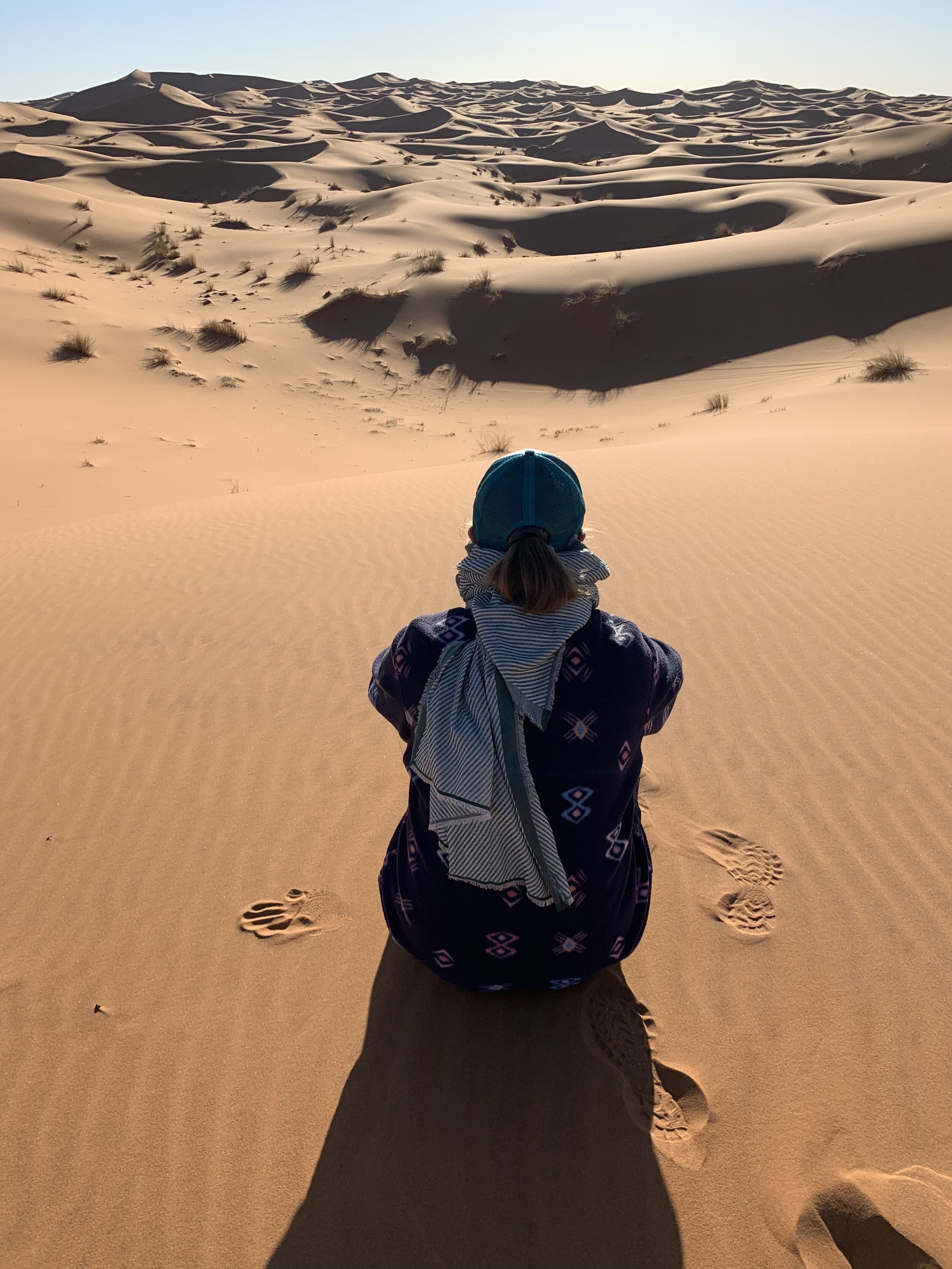
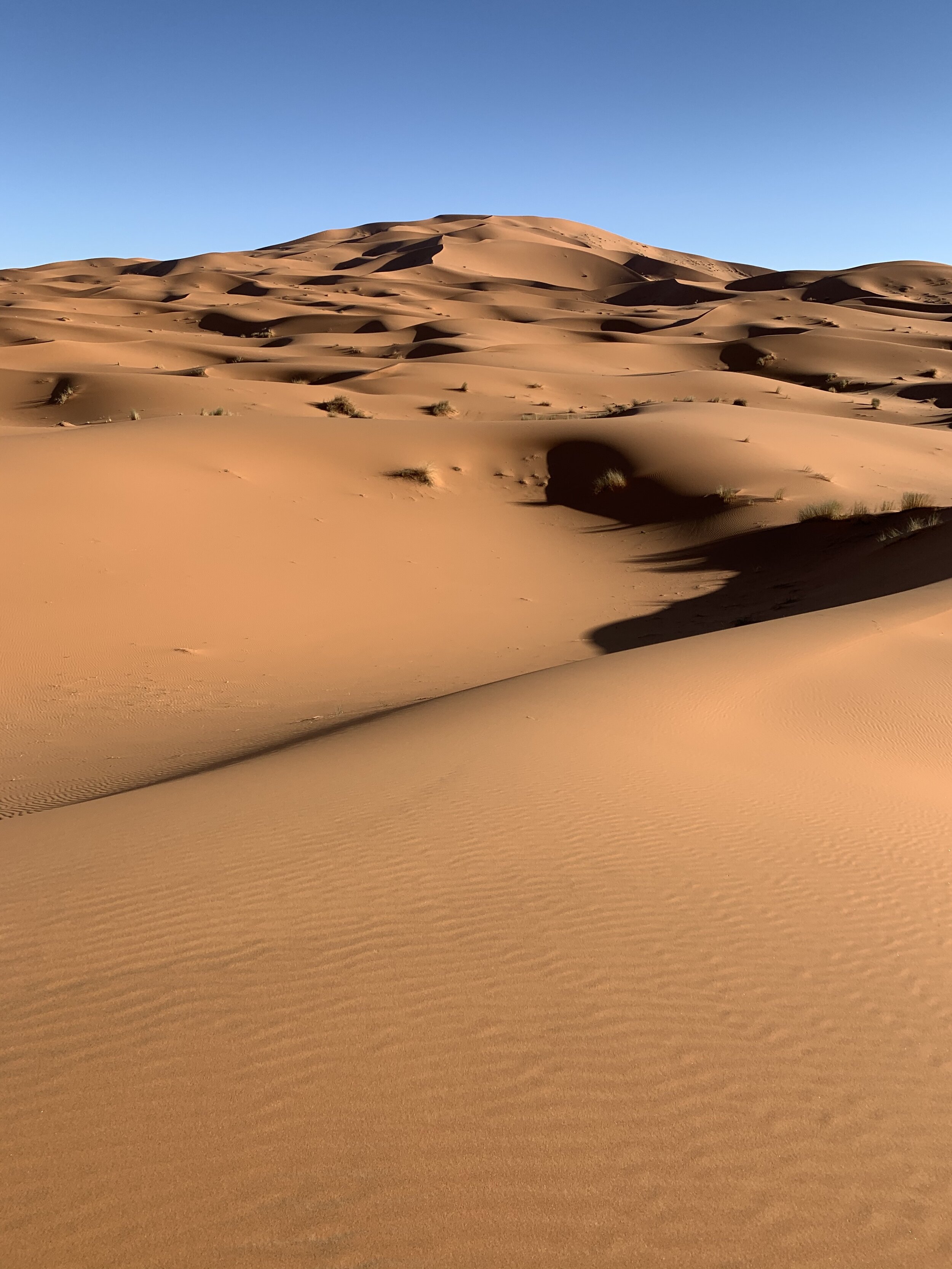
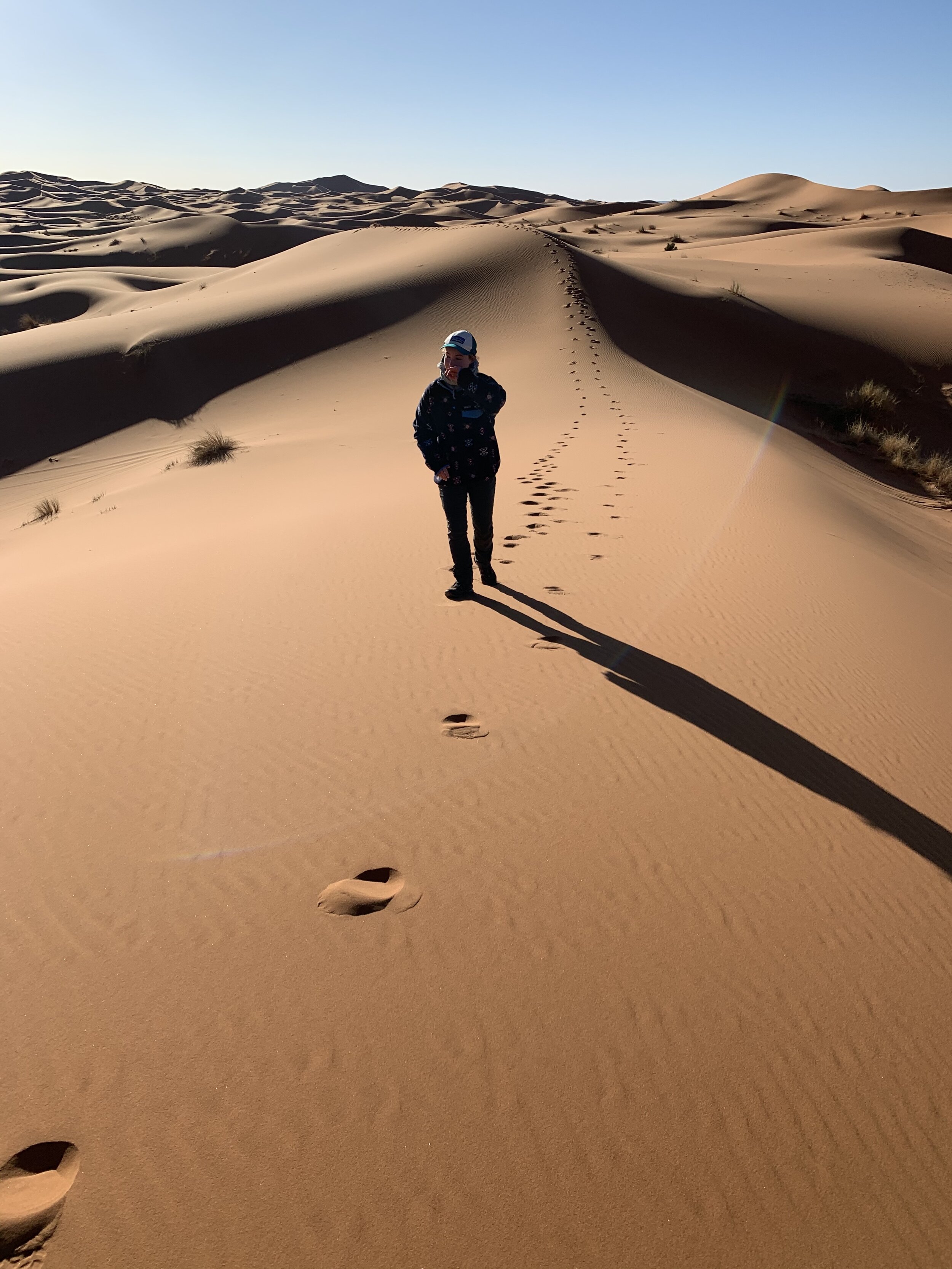
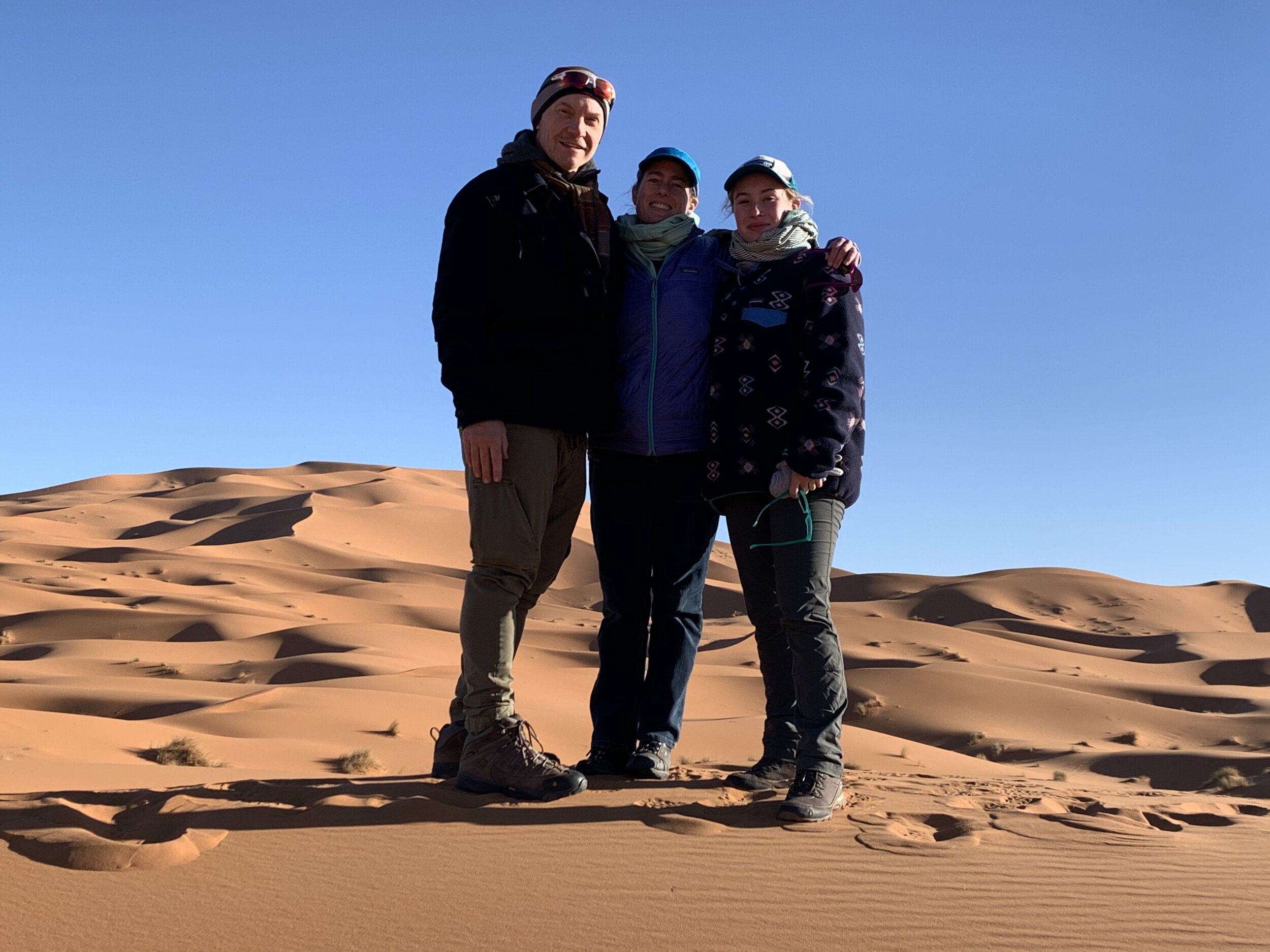
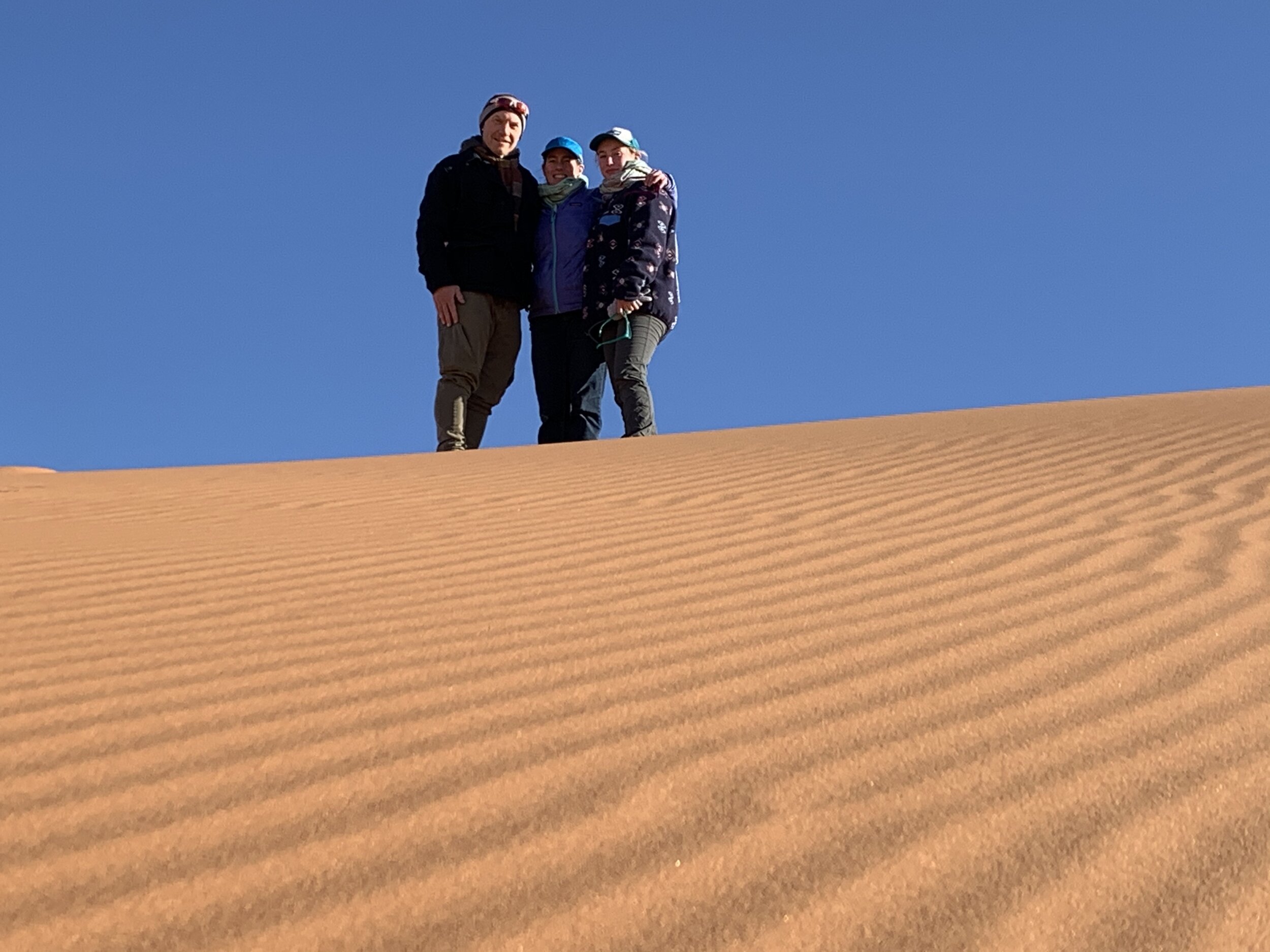
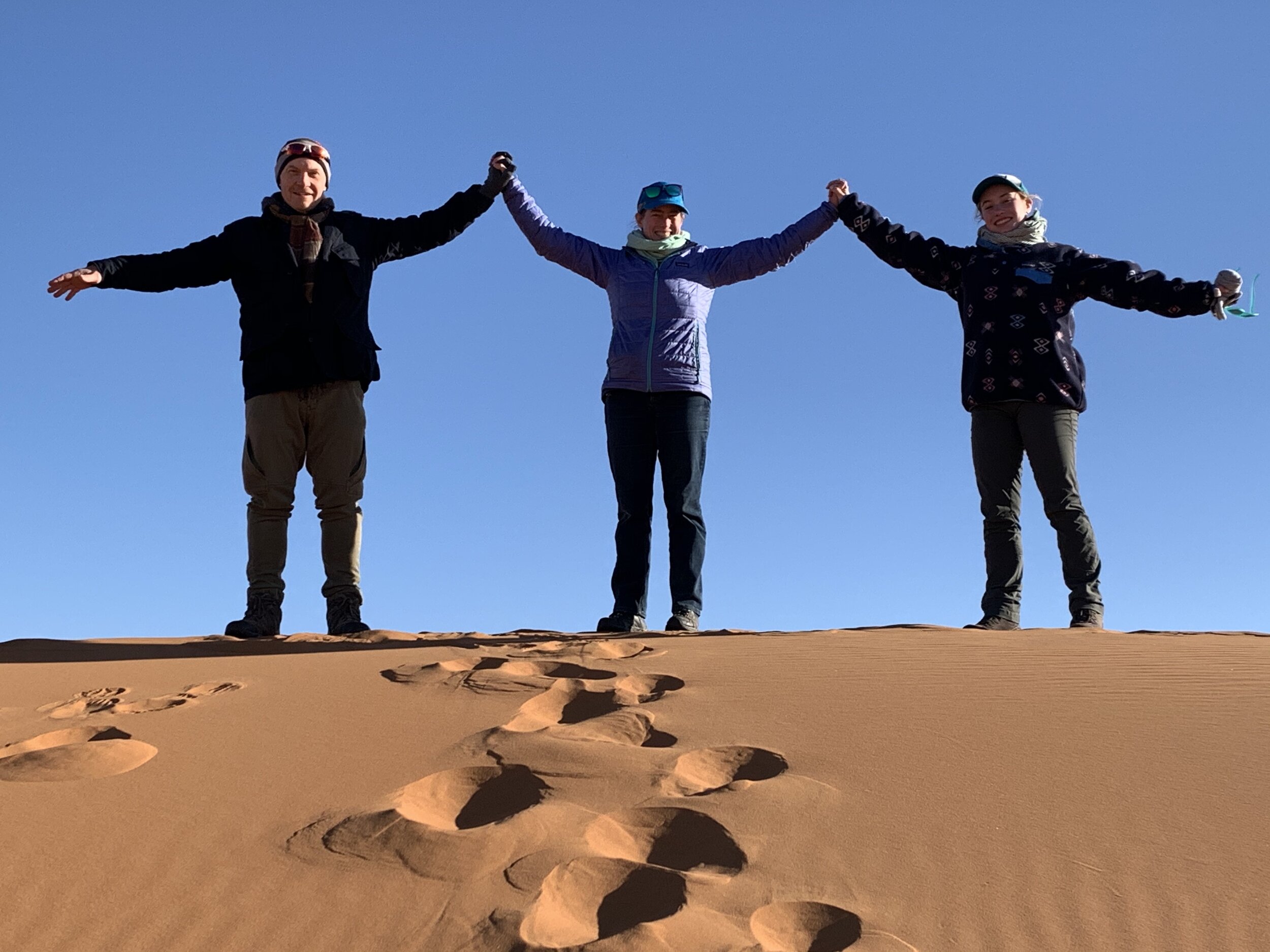
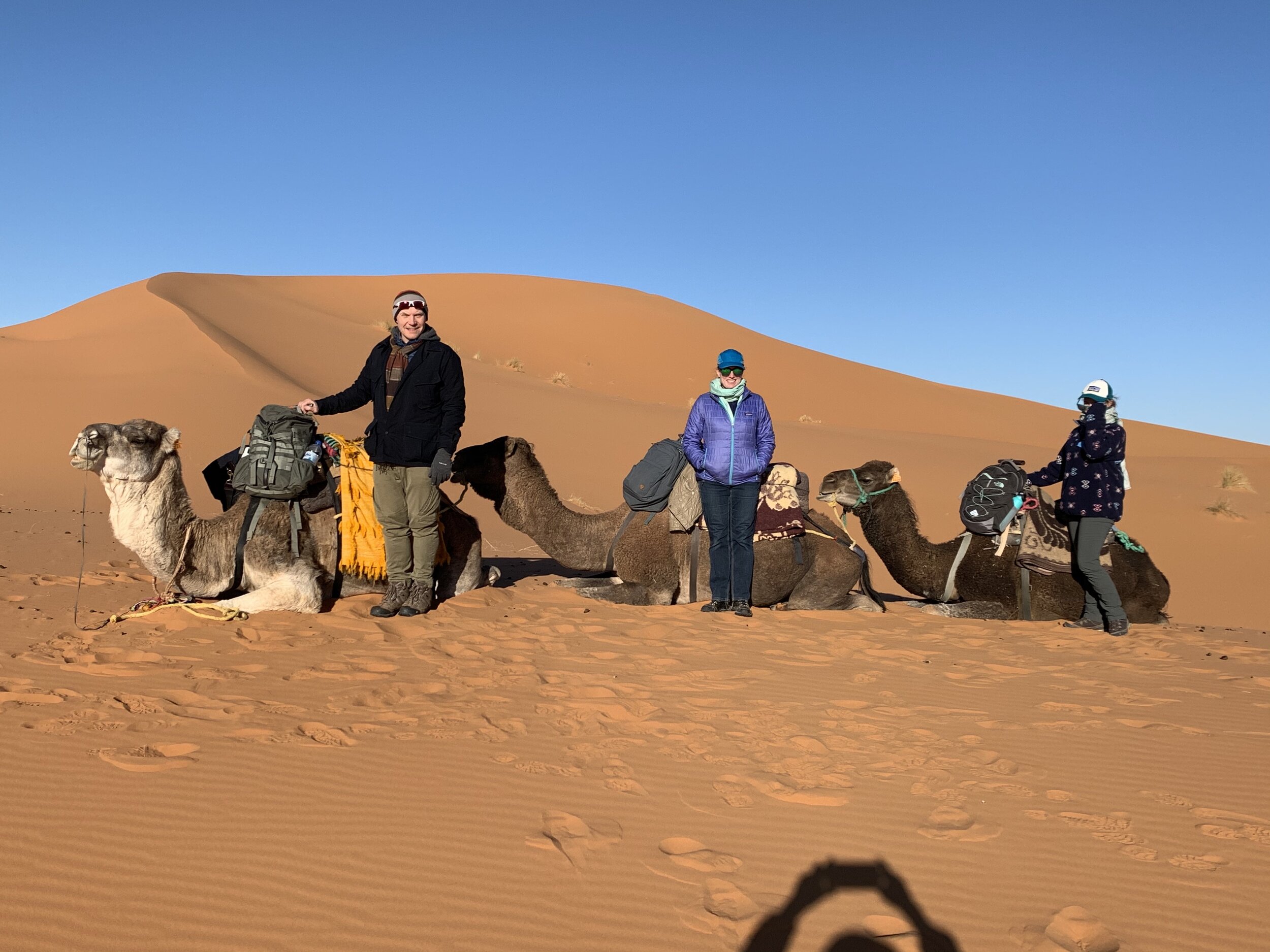
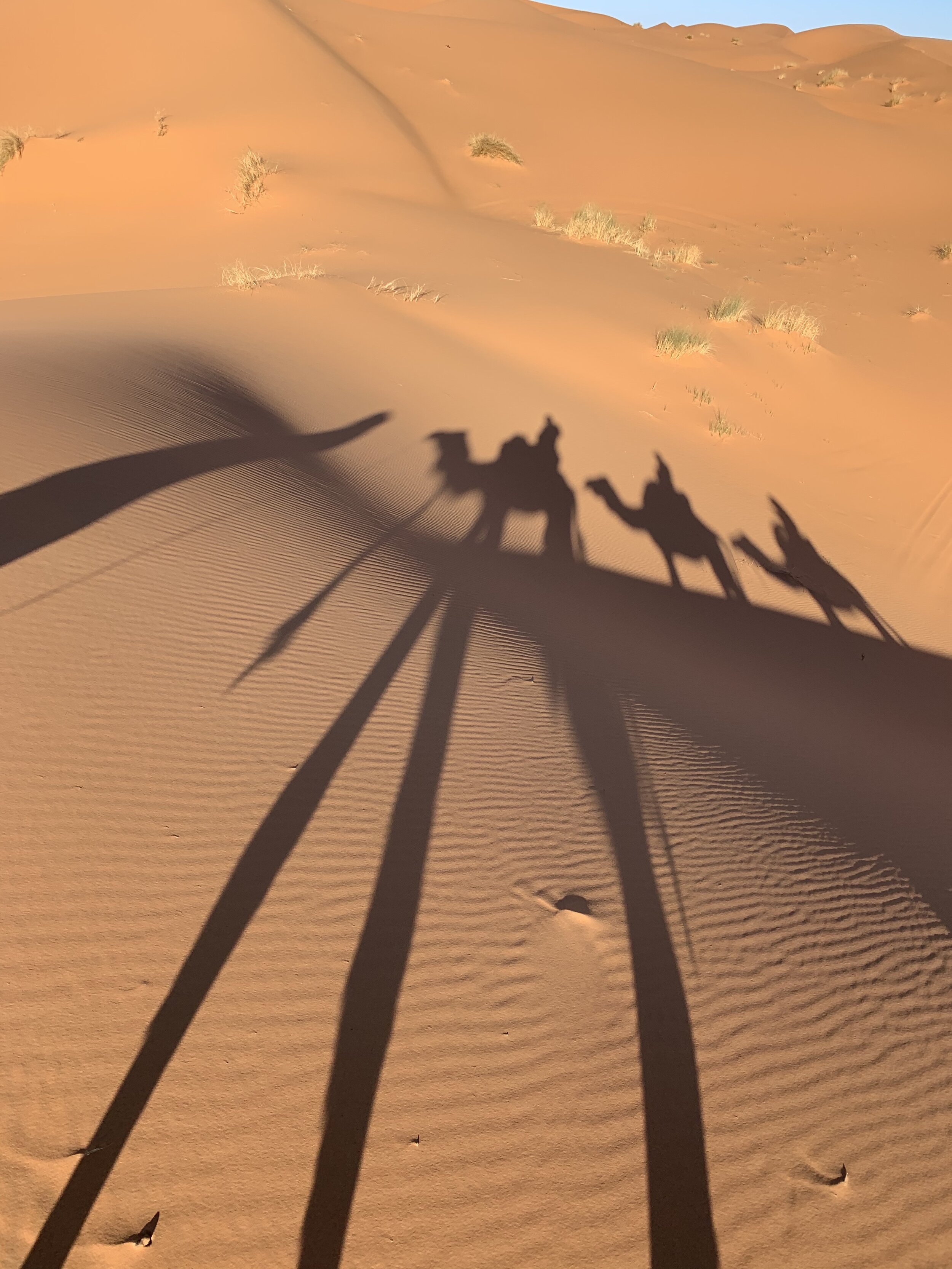
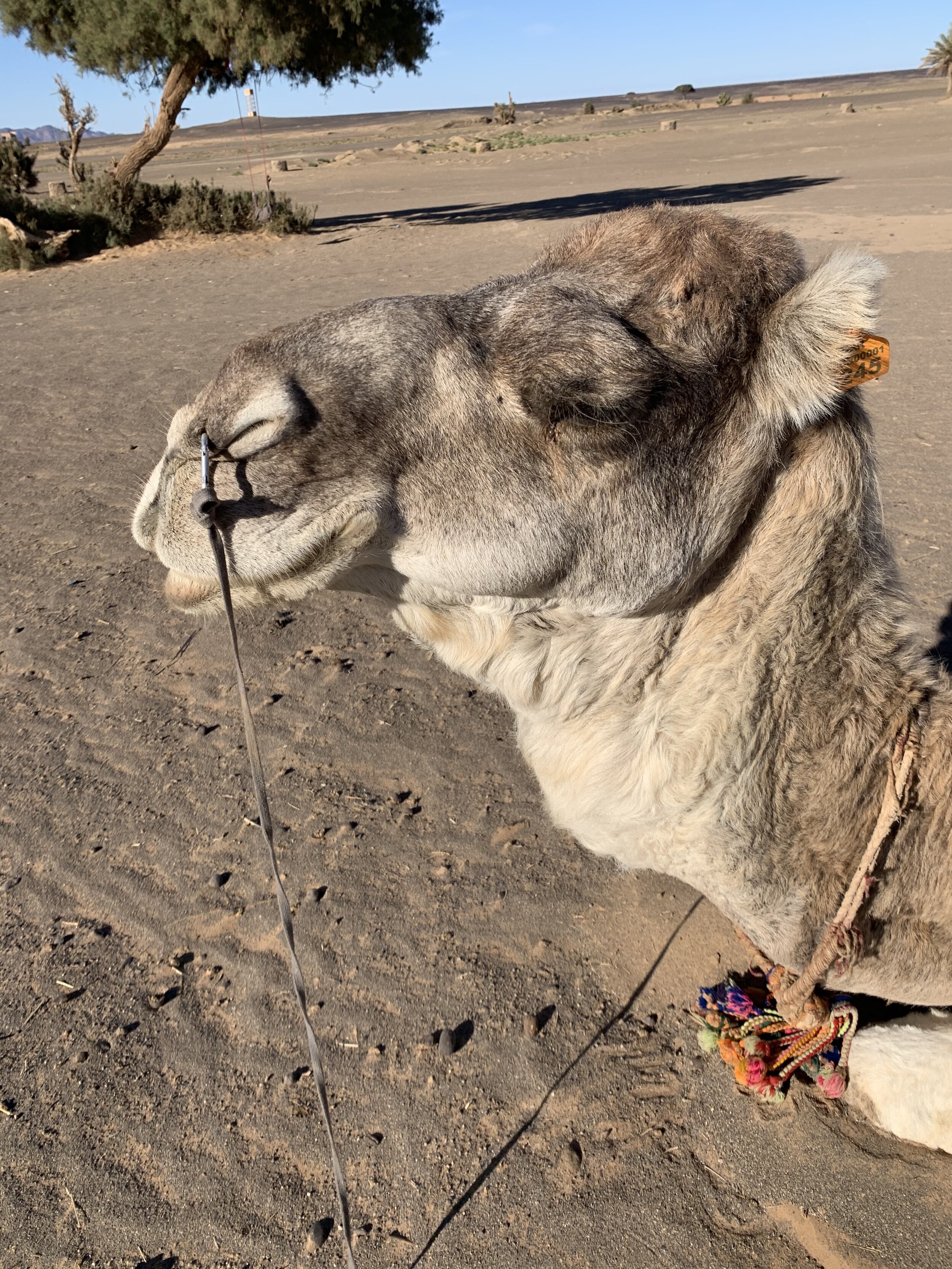
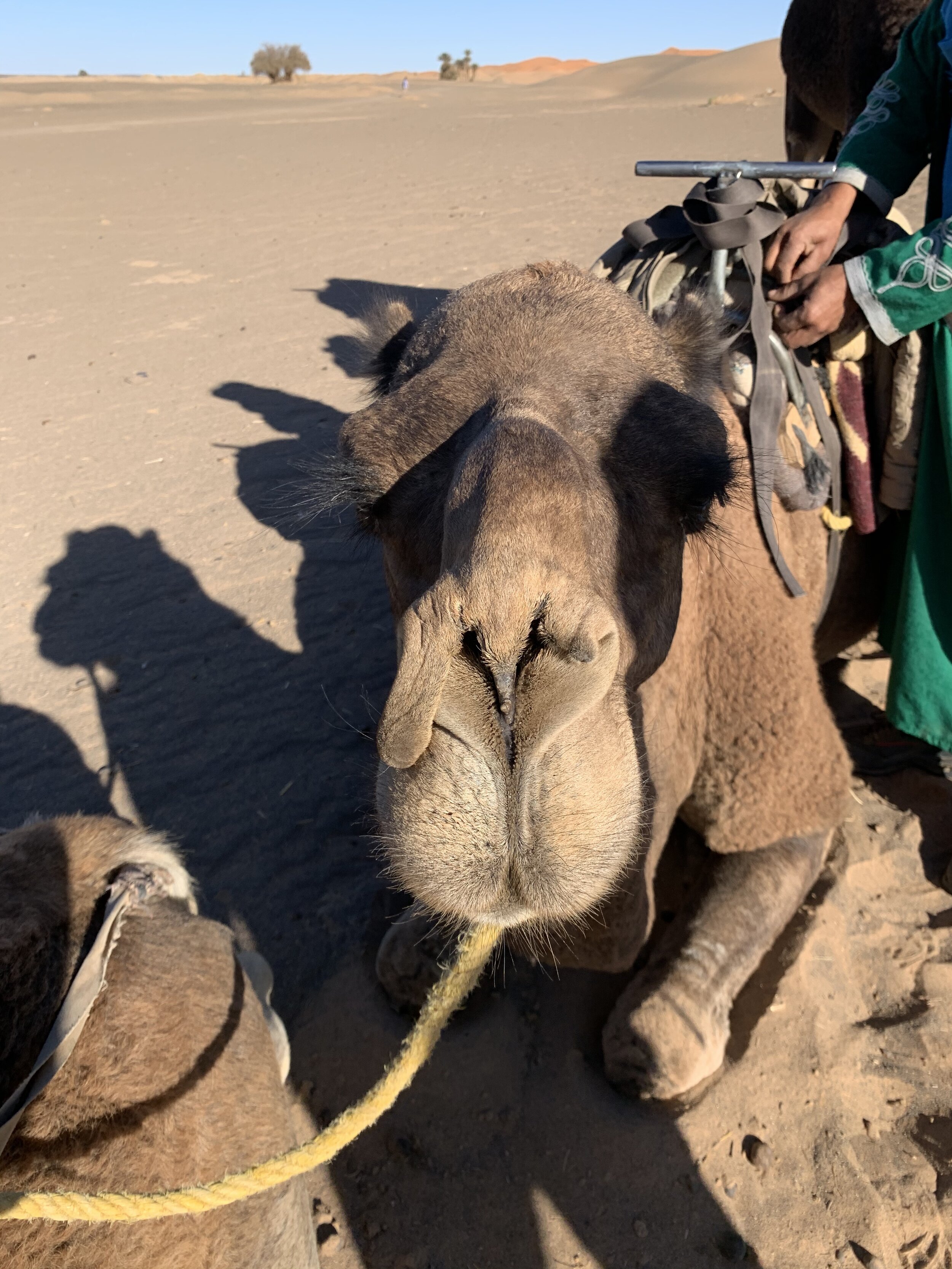
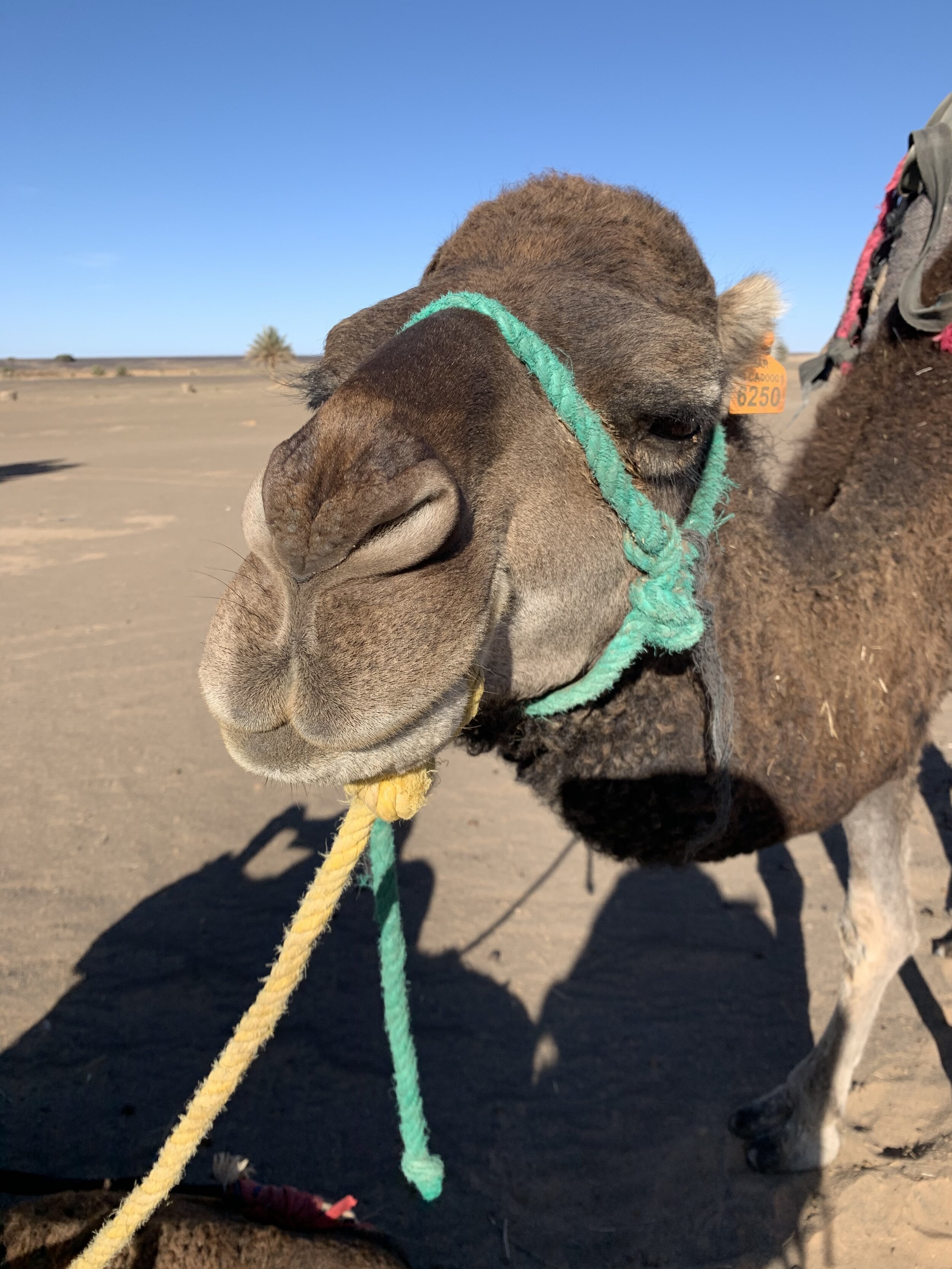
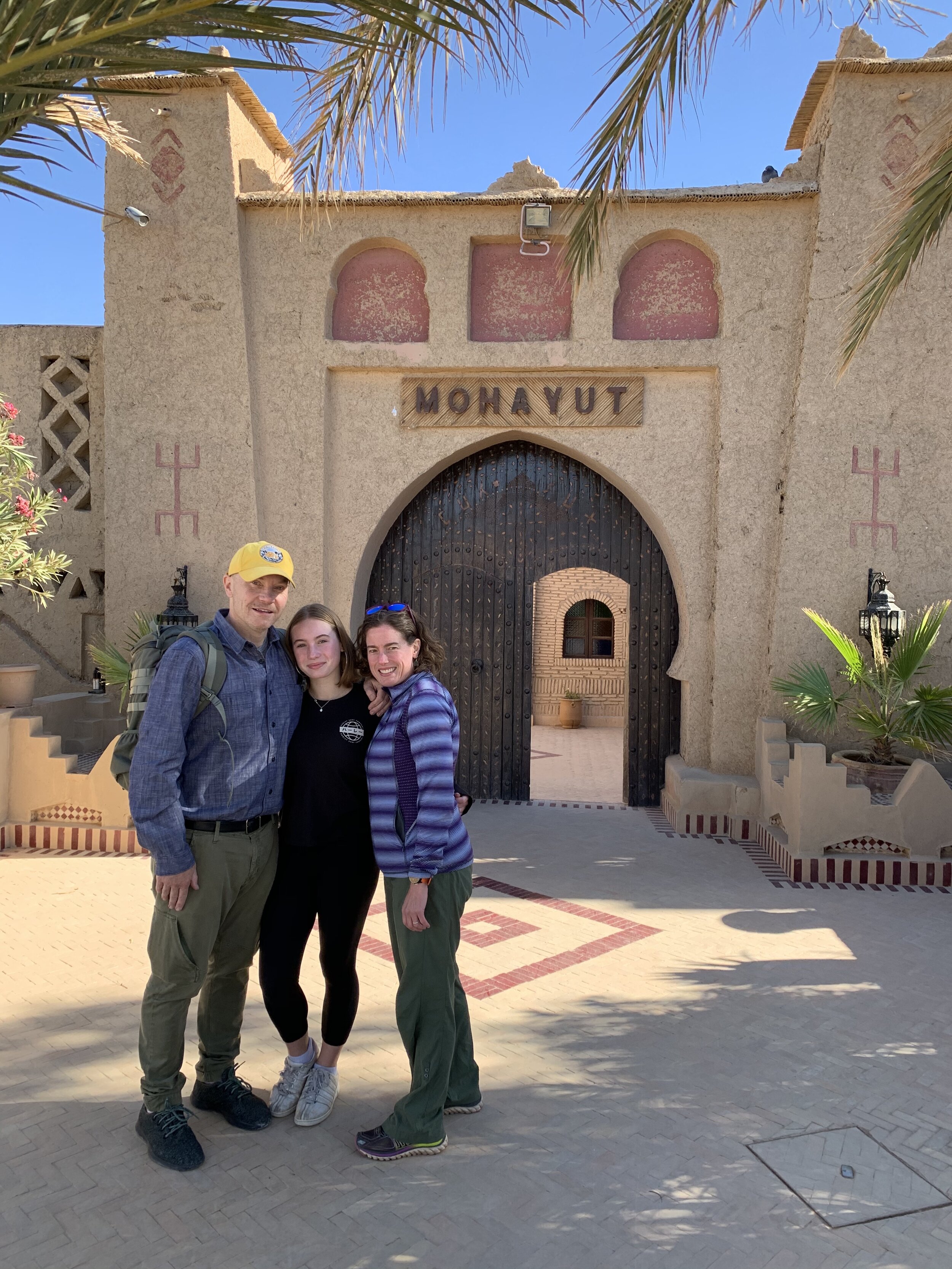
The drive from Merzouga/Hallsilabiad to our next stop was another 400 km (250-ish miles). Hicham and I don’t share a common language. Other than emphatic finger-pointing, the polite laugh, and monosyllabic obviousness. Yet he still managed and we agreed (sometimes after the fact) to swing us into a few stops along the entire trip’s route that turned out to be amazing. Like the midway point on that day – the Torda Gorge in an area that bears a resemblance to the Grand Canyon in the American Southwest. The Gorge was carved by a river running down from the epic High Atlas Mountains in the approaching distance. The break offered a chance for some pics and then an overdue picturesque lunch. We ate along the now slow-flowing river on a spacious deck with no one around aside from a troop of attentive waiters. Mint tea, a few chicken tagines, some oranges for dessert. Berber foods are simple and hearty. We would overeat throughout the trip, but mainly because they just keep bringing the food if you don’t put your foot down and insist that you’re done. Our lunch was a chance to order light and it worked. We still had a handful of hours to drive through some quite sparsely populated areas, but we’d surely no longer starve out there.
We passed through the small city of Ouarzazate, which had the flashy feel of a town doing great and proud to show it. I’d known that one of the movie production companies that were responsible for some of the “Game of Thrones” location shoots was anchored there (Atlas Studios). There were many more companies, too. It’s actually a studio town with even the smaller cafes and businesses employing entertainment business adjacent names (lots of “Star” this and that). Hicham explained when asked that much of Ouarzazate’s Hollywood-esque structure has been built up in the last 15 years or so. It was far from what to expect for central Morocoo on the way to the mountains. We’d have stopped for a more serious look around if the sun wasn’t already almost all the way down.
We pushed through to our destination – Ait Ben Haddou. As we’d learn from Hicham, “Ait” means “family.” As in this was the ancestral area of the Family of Ben Haddou. Even in the dark, it seemed a location scout’s slam dunk. The horizon was dominated by a beautiful old walled fortress and the surrounding town. In “Game of Thrones,” it was Yunkai and other sets. Ait Ben Haddou’s old “ksar” or a group of earthen buildings surrounded by high walls. The locals claim it was built in the 7th century B.C. or thereabouts. Skeptics argue it was largely built in the 17th century or later. It is nonetheless a UNESCO World Heritage Site. We spent the following morning exploring in the old ksar, after an amazing breakfast. For us, Ait Ben Haddou will always be remembered as the town with the best hotel of the whole trip (Riad Caravane). I’d imagined hotels where you can recharge after a long journey tucked into the dusty dead-end streets of small towns few recognized. This was that place in a nutshell. We could’ve stayed much longer than one night. Maybe we’ll go back. As you’ll see below, the entire town was a stunner, starting with a sunrise run that Sarah and I took in the brisk mountain air.
